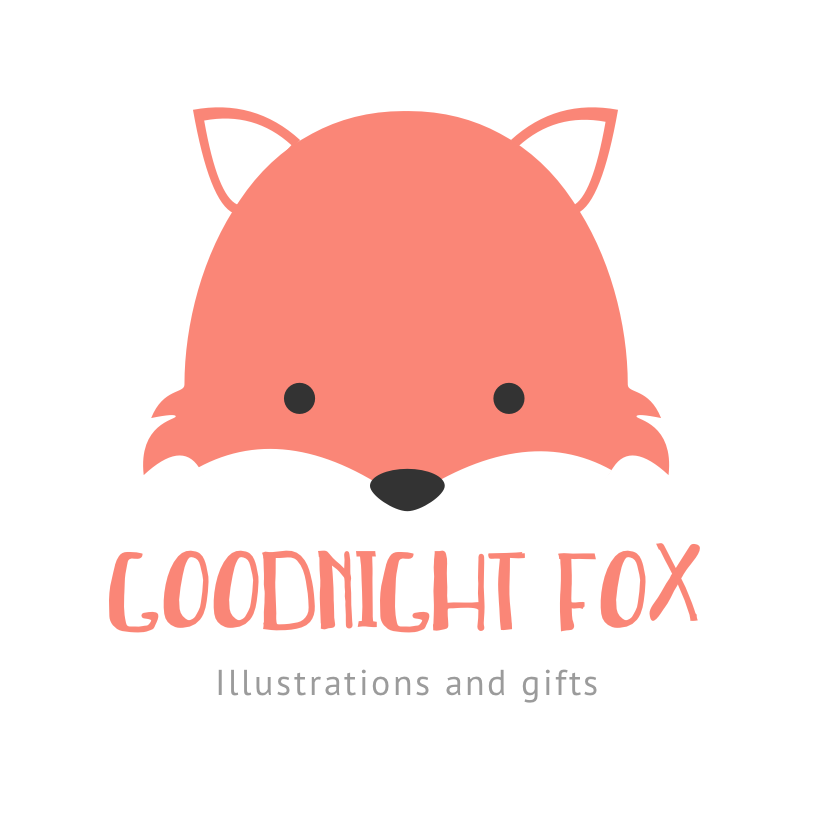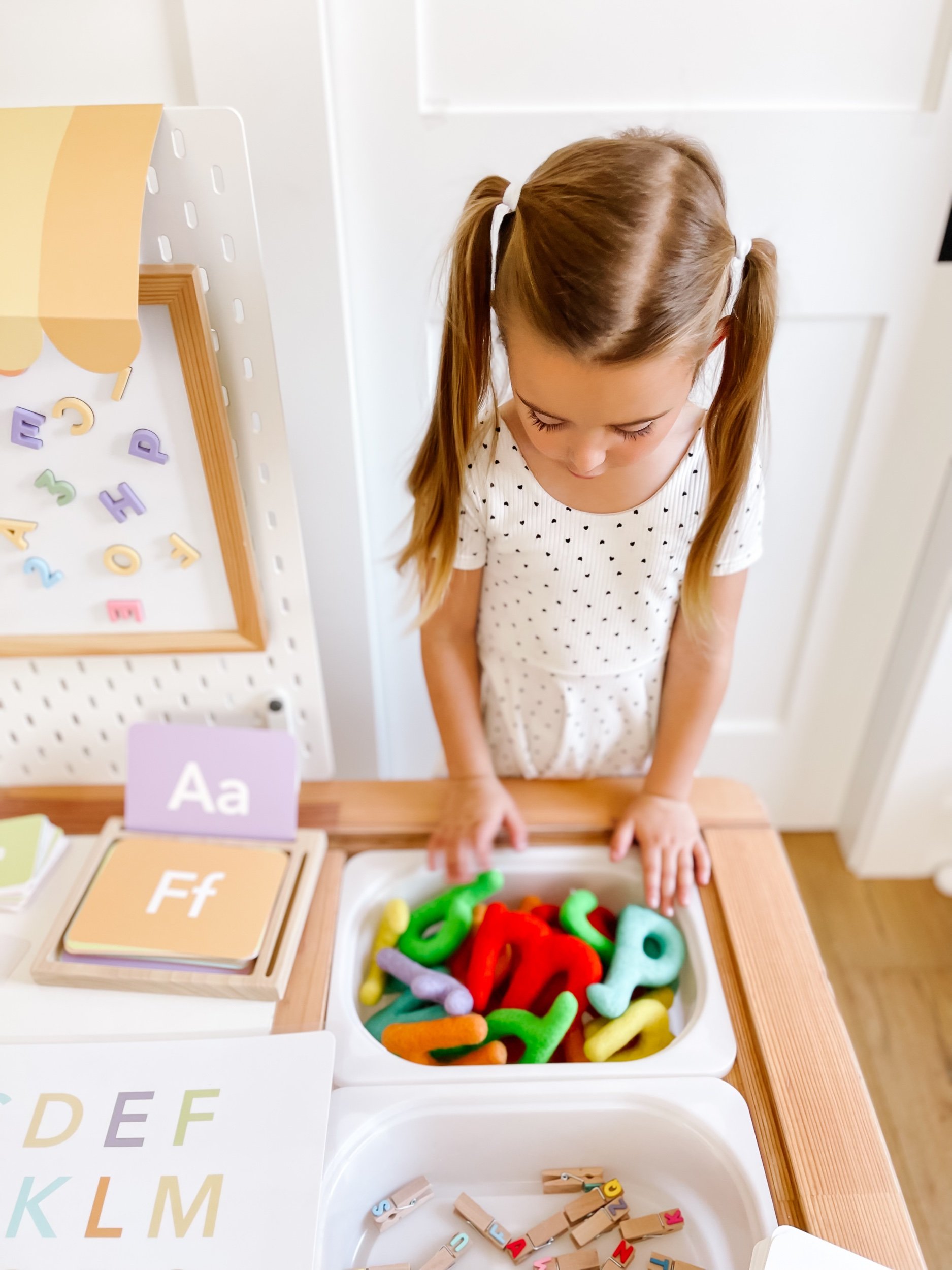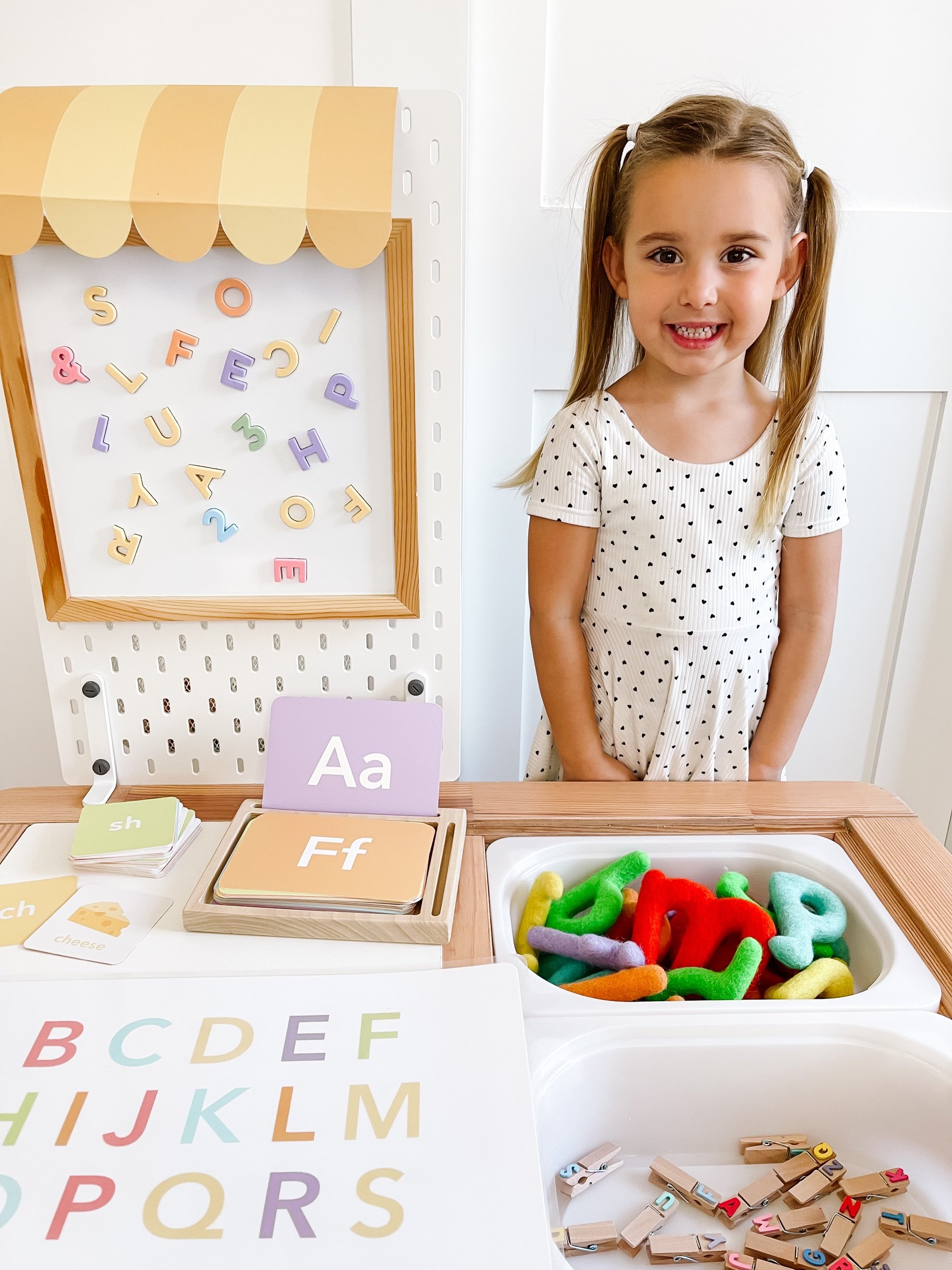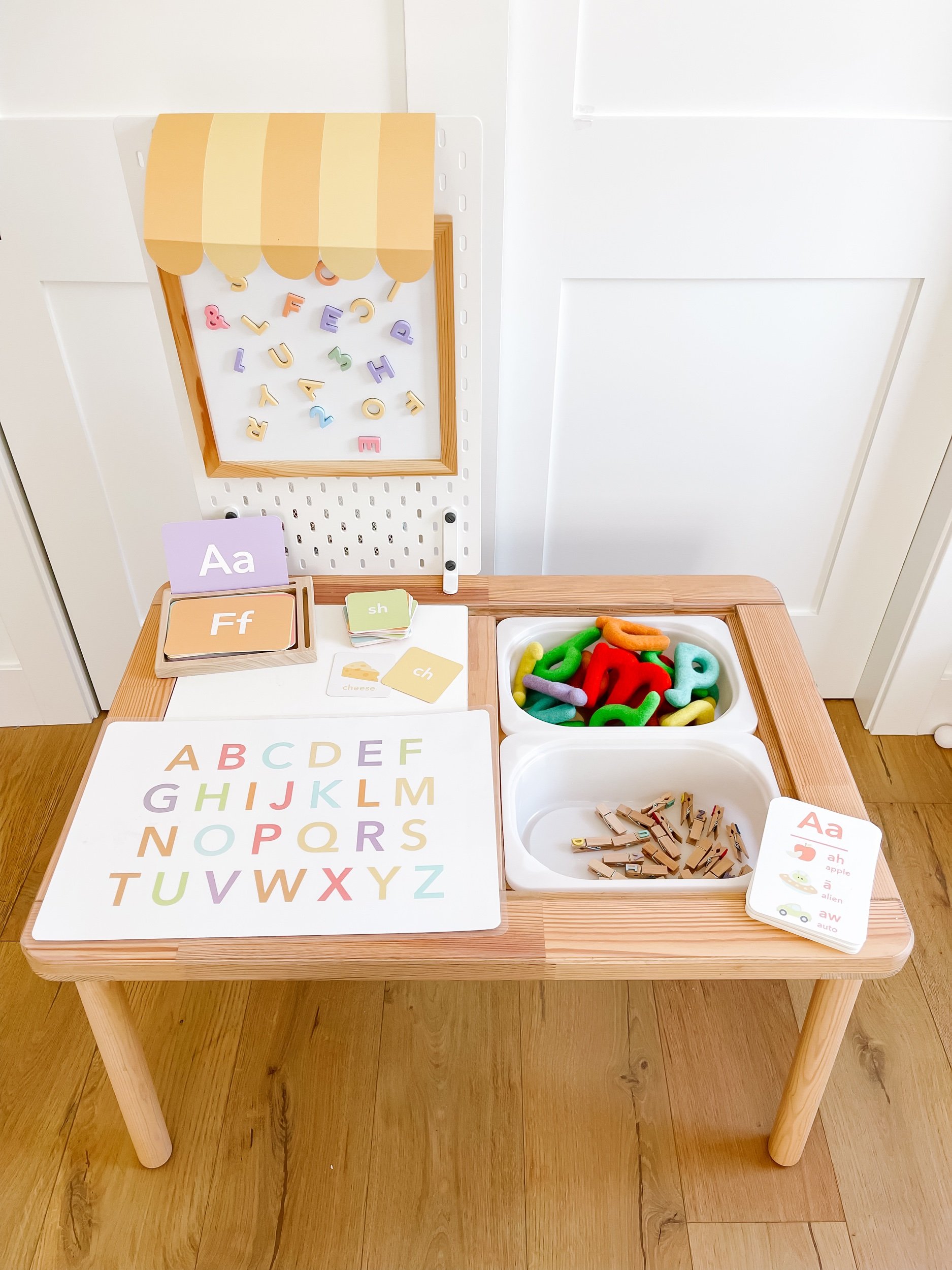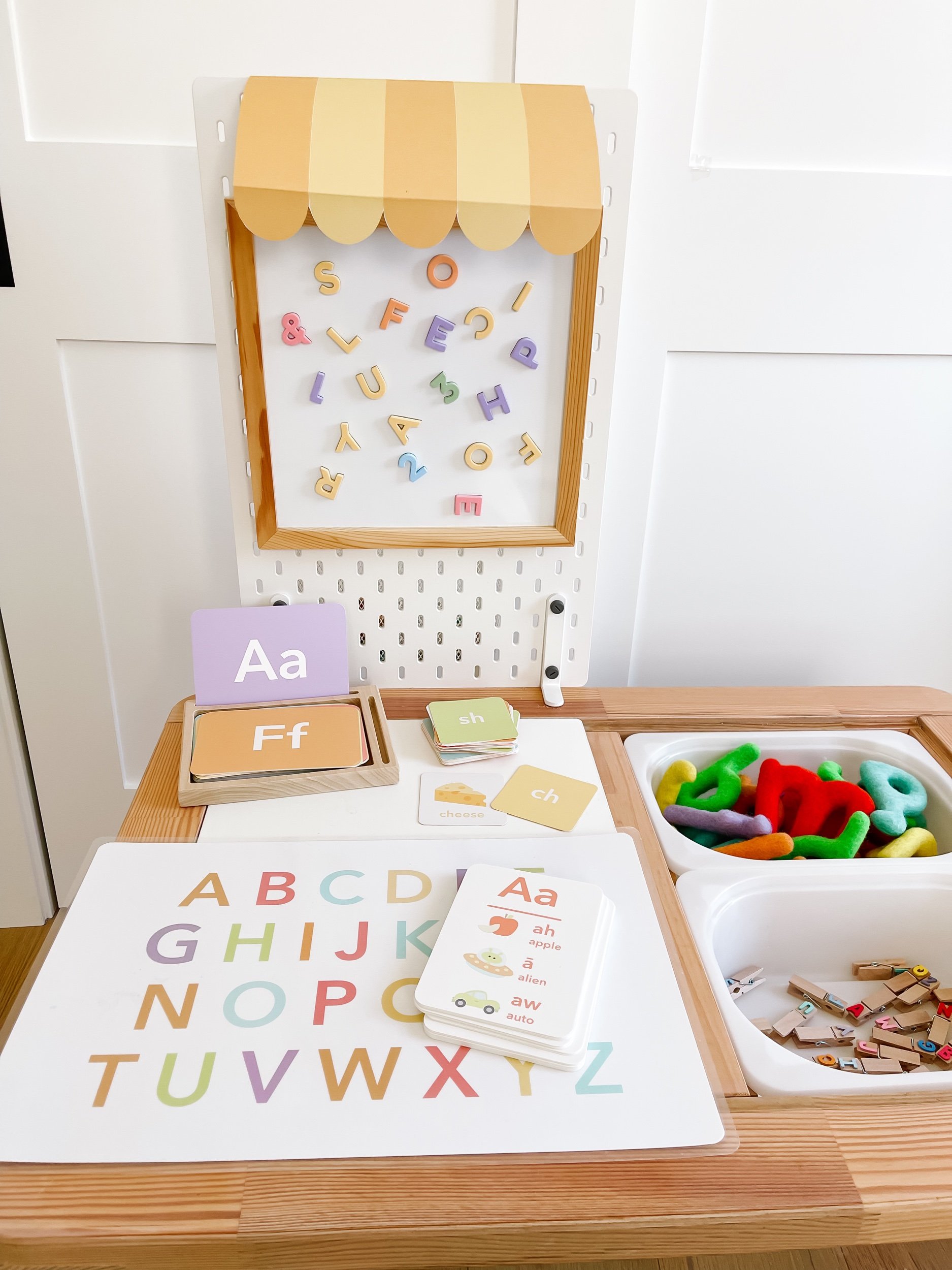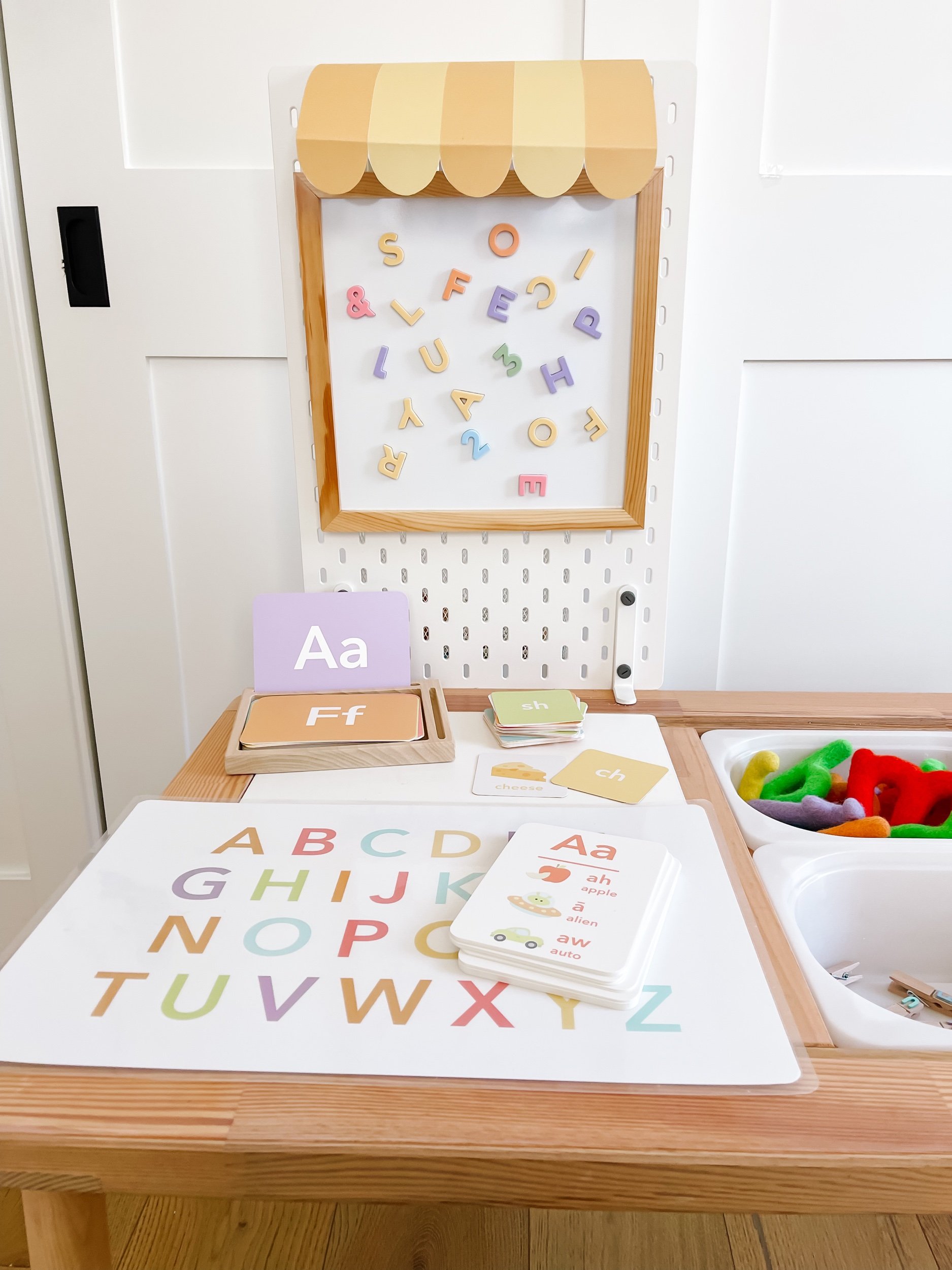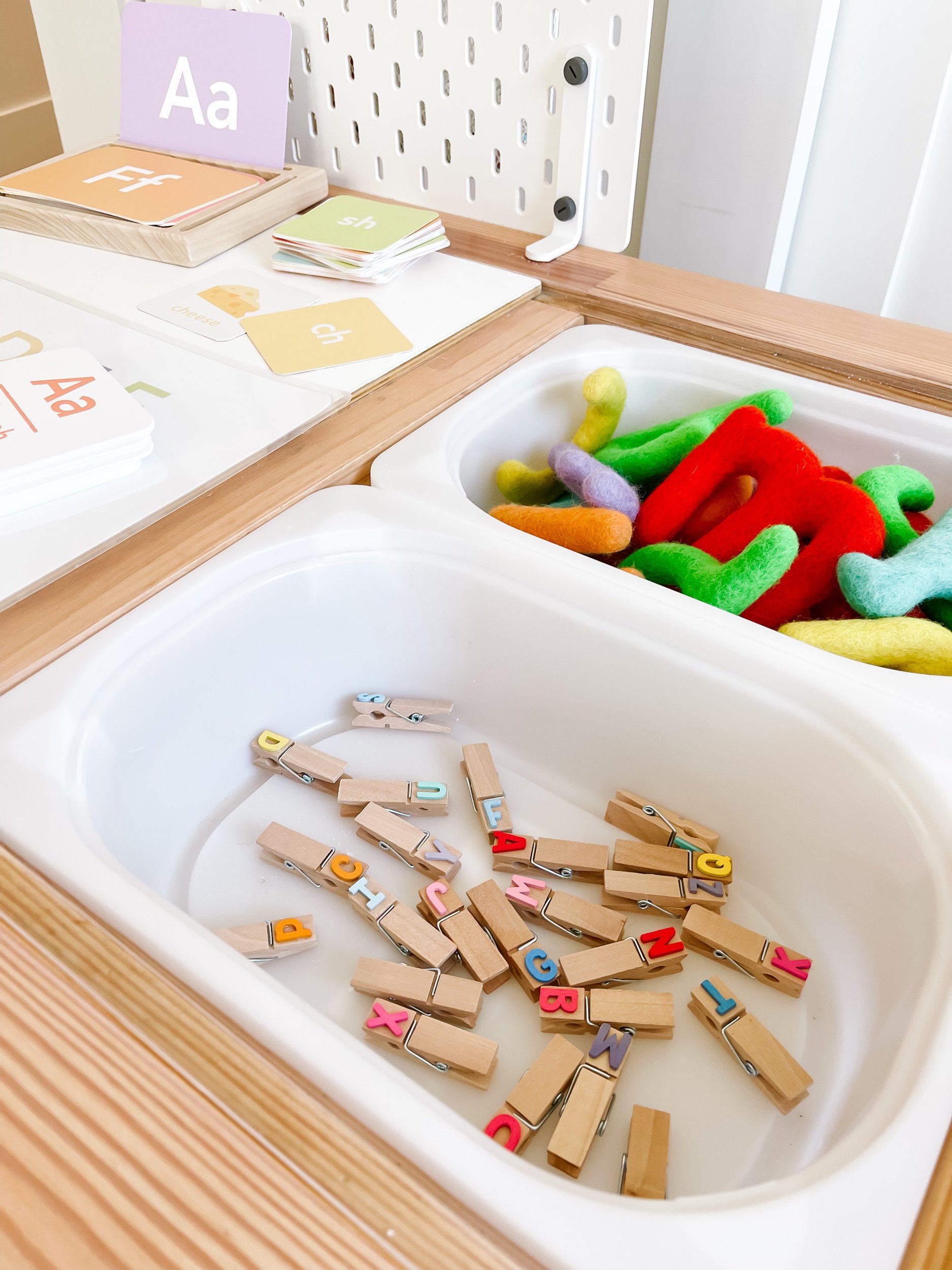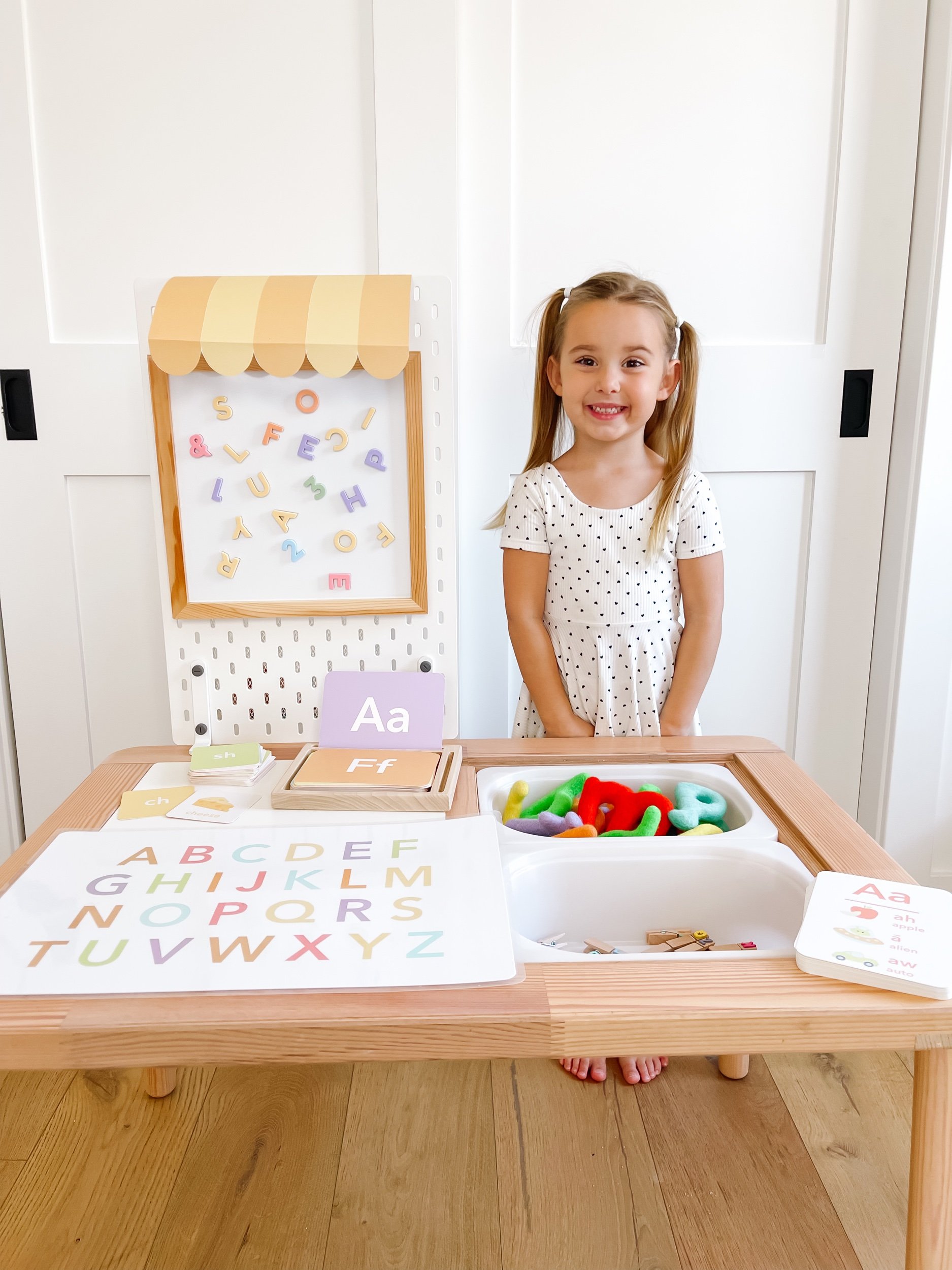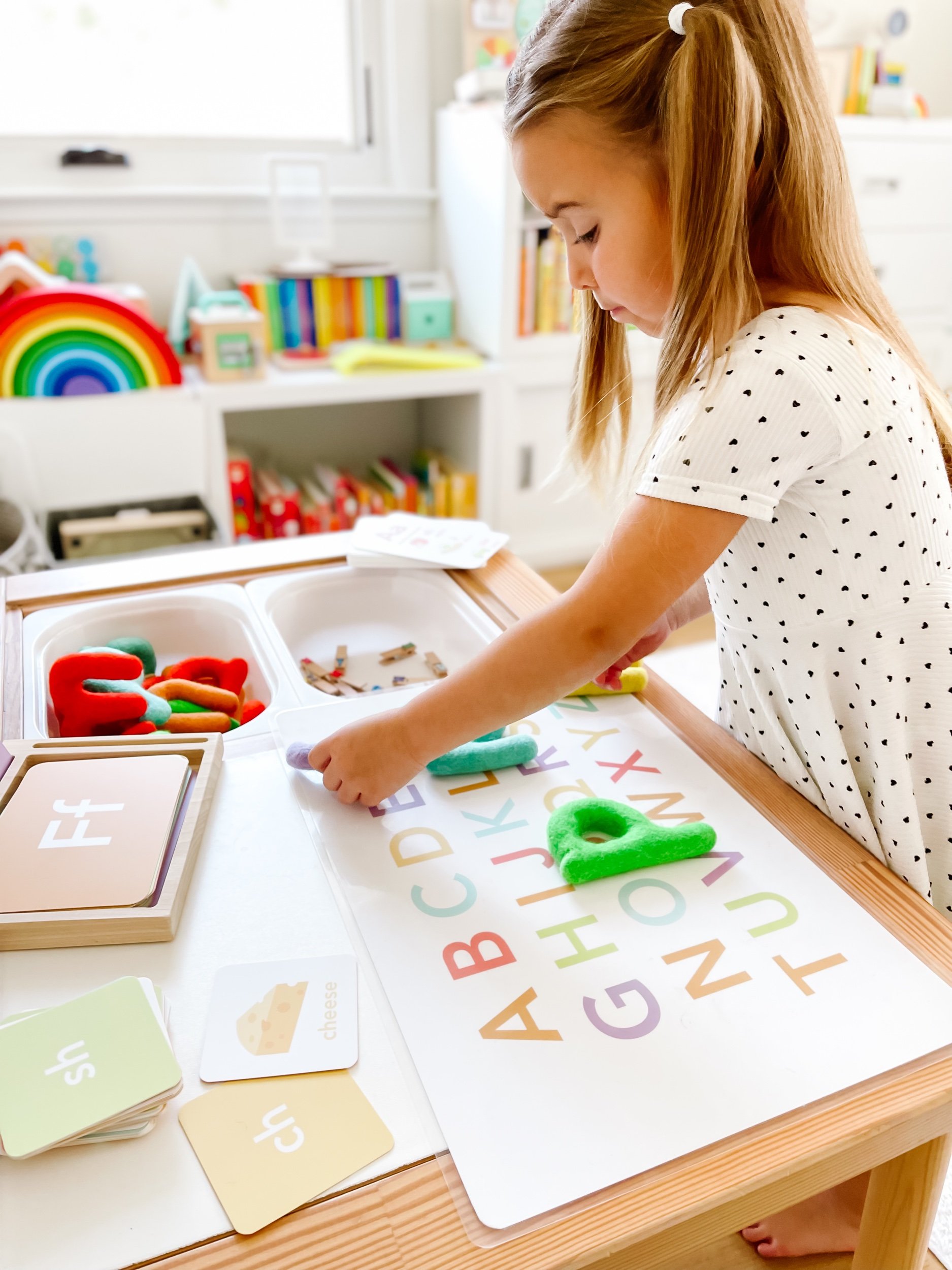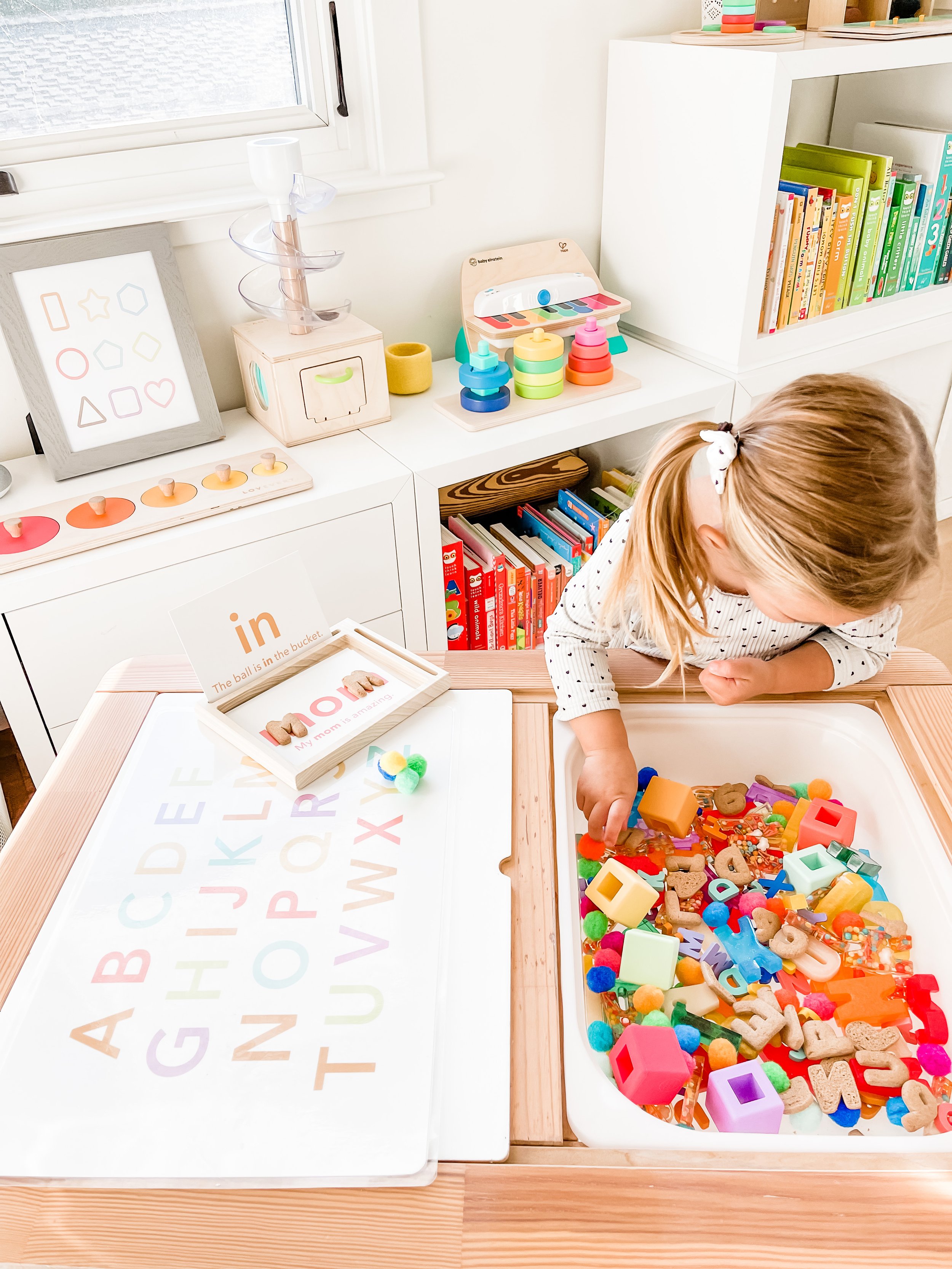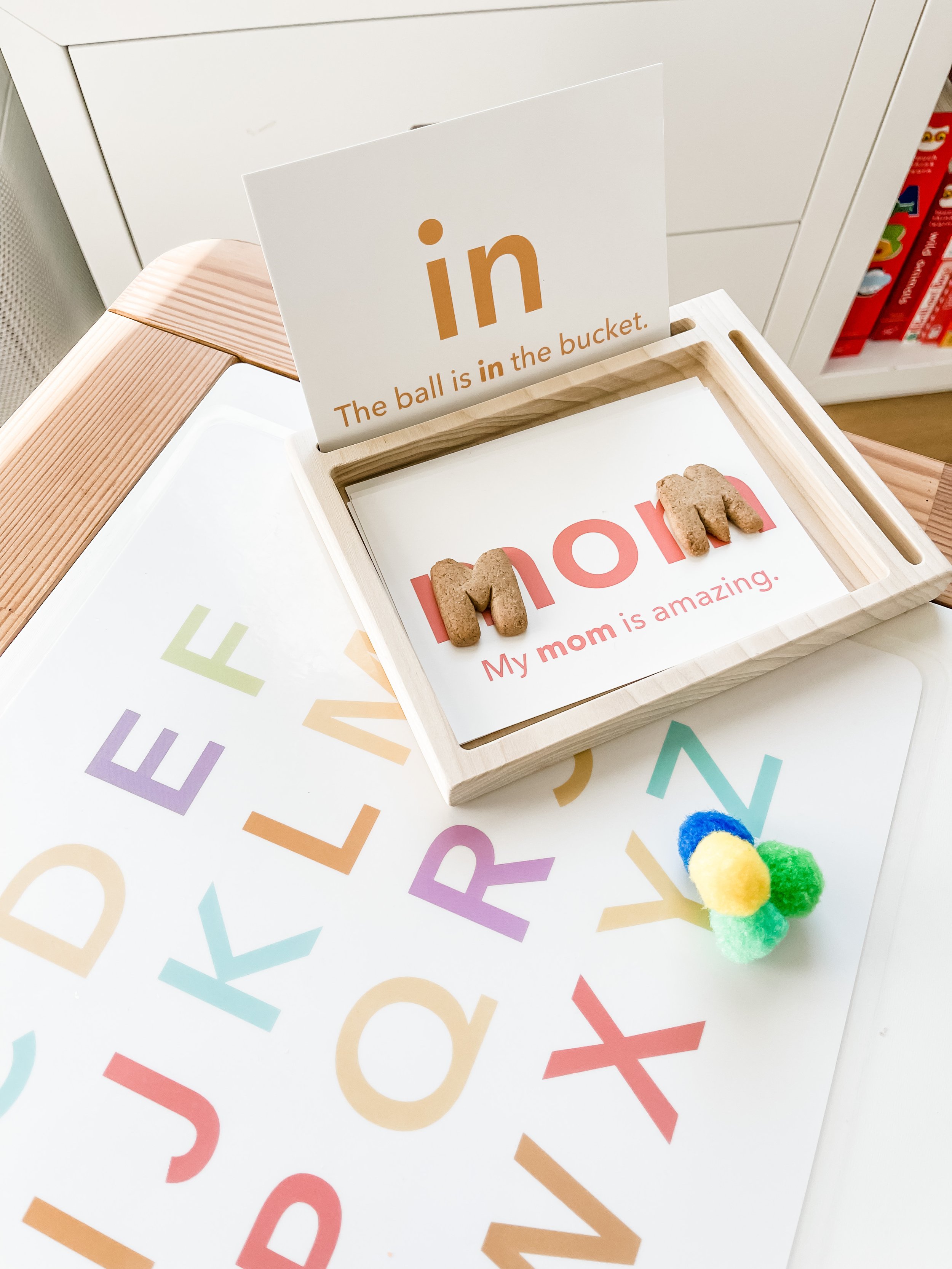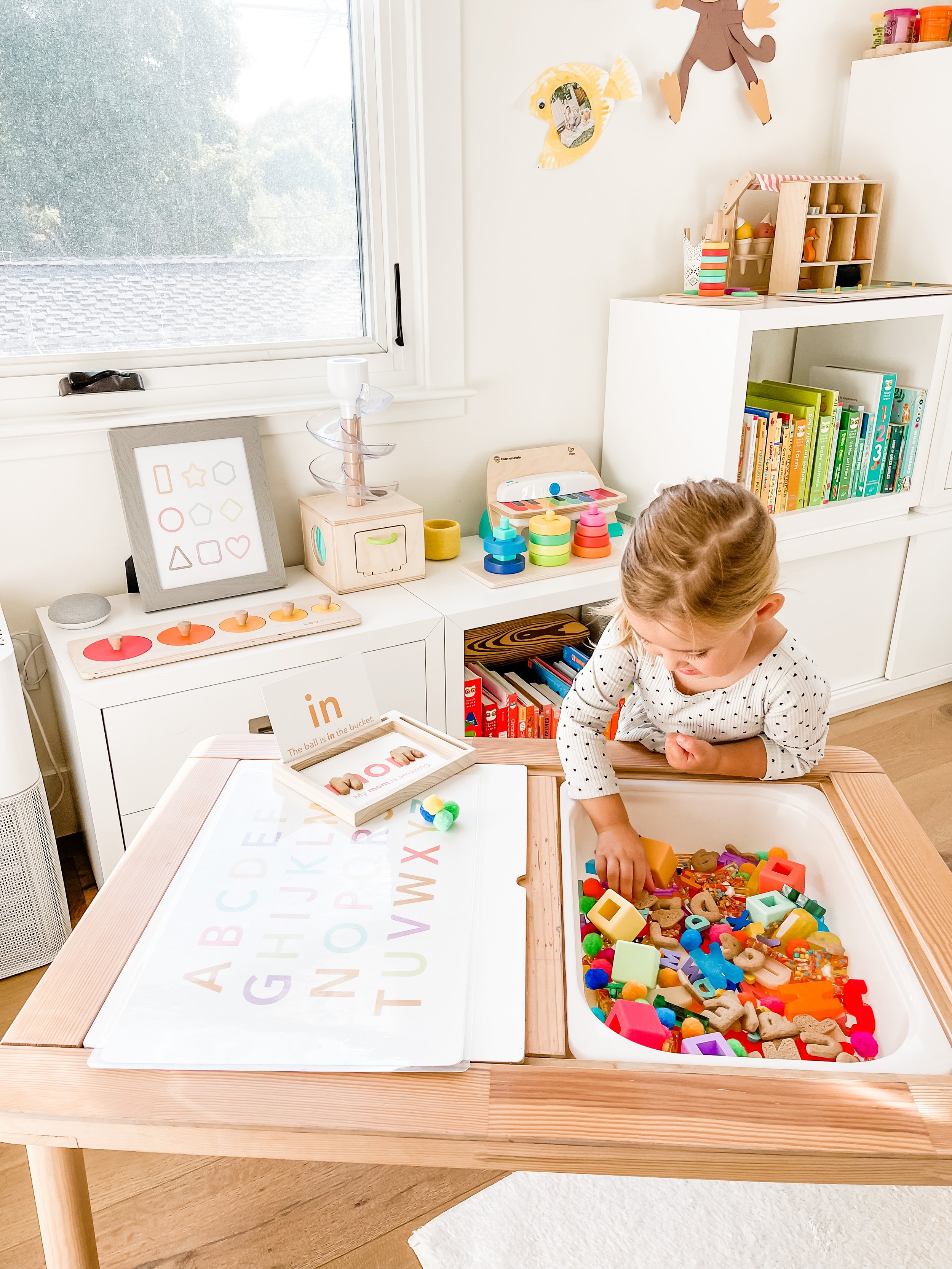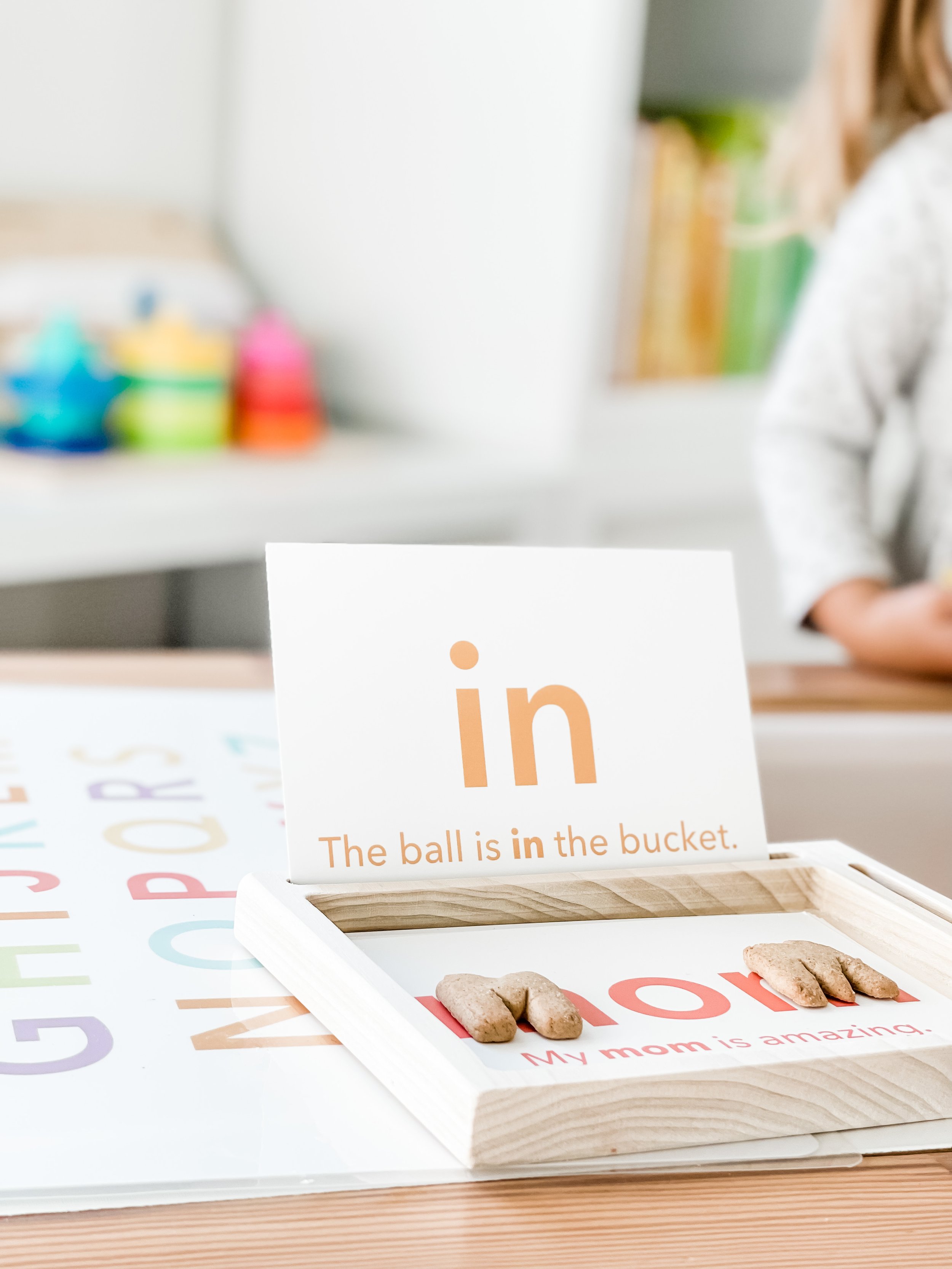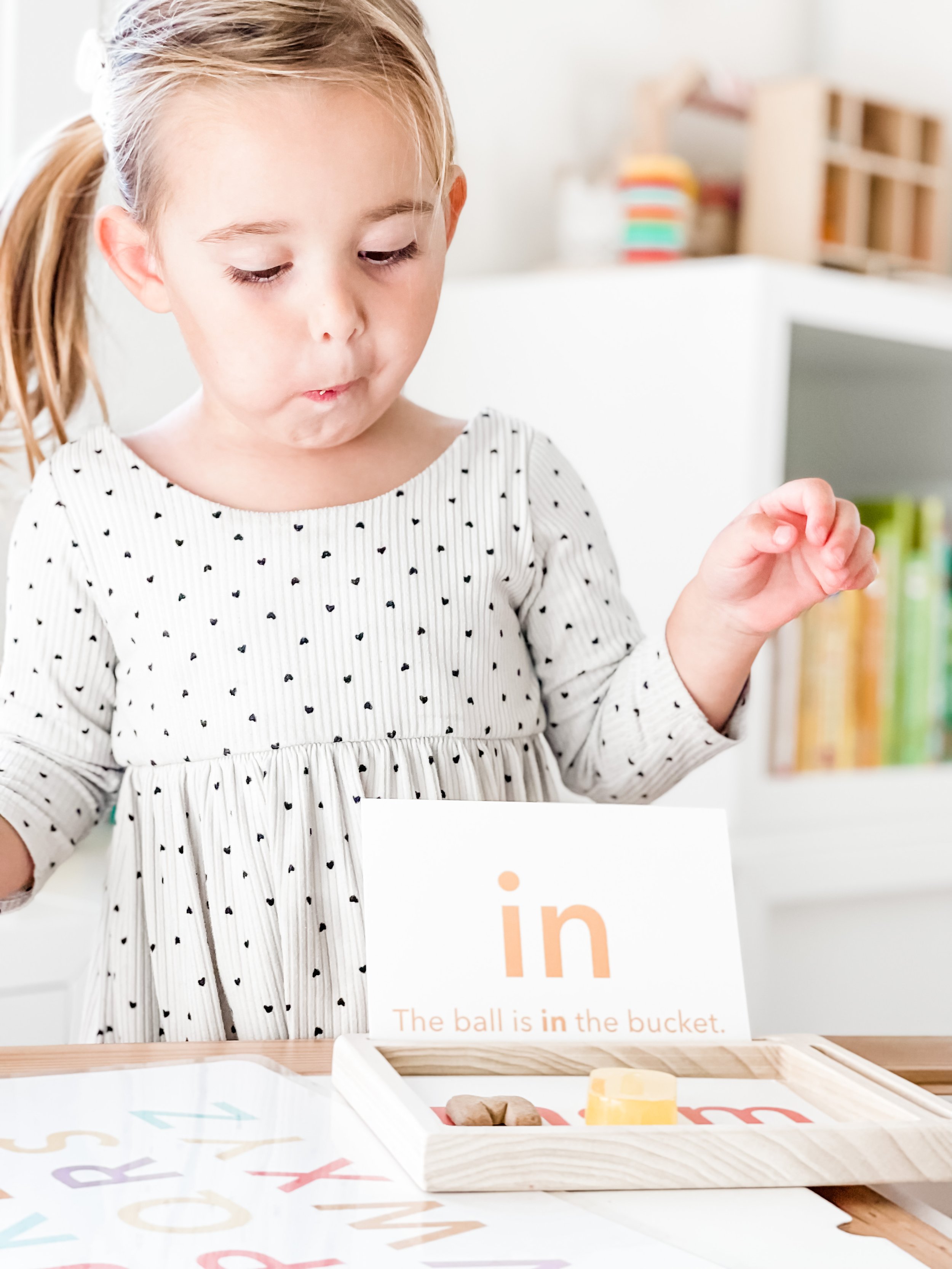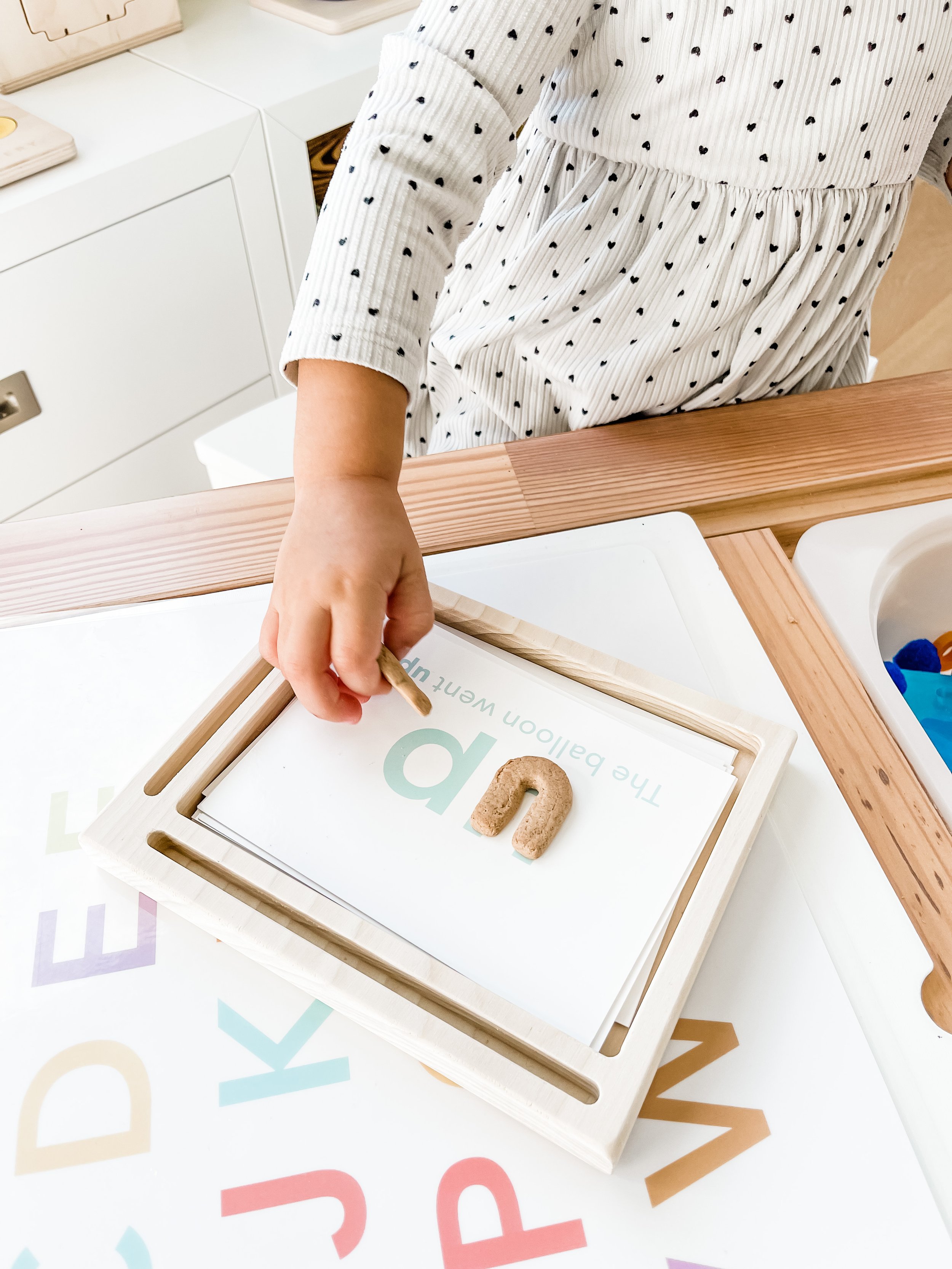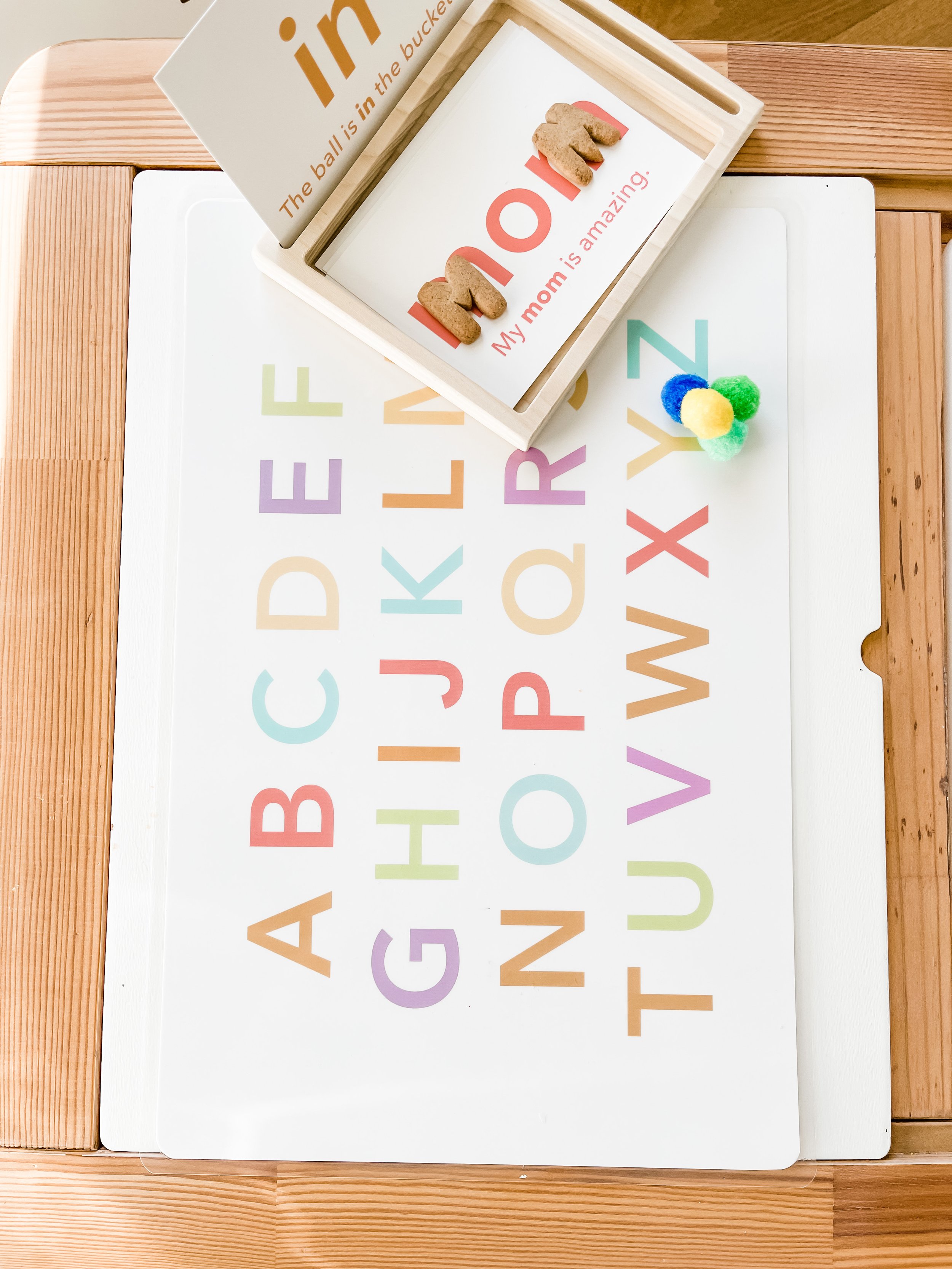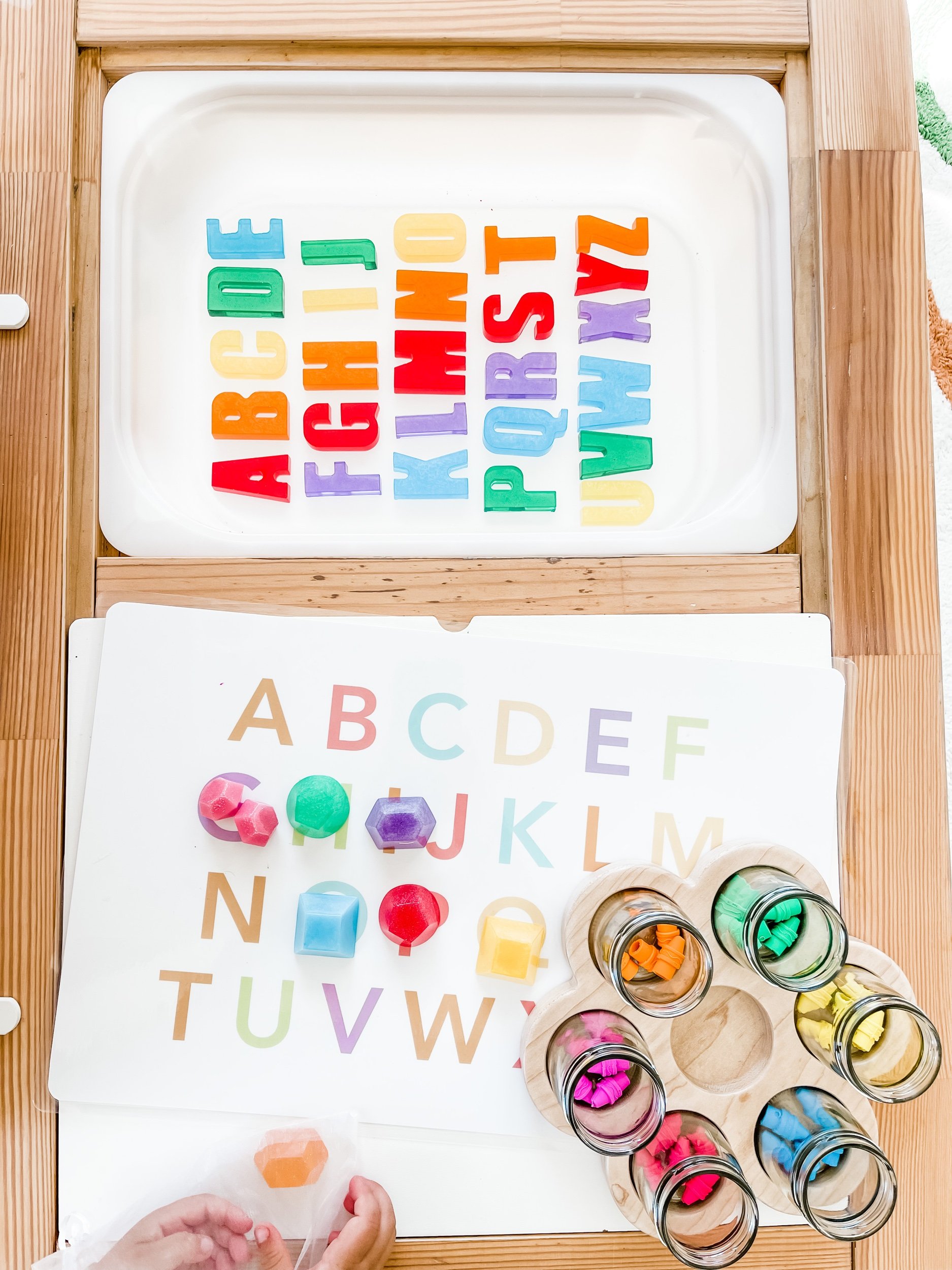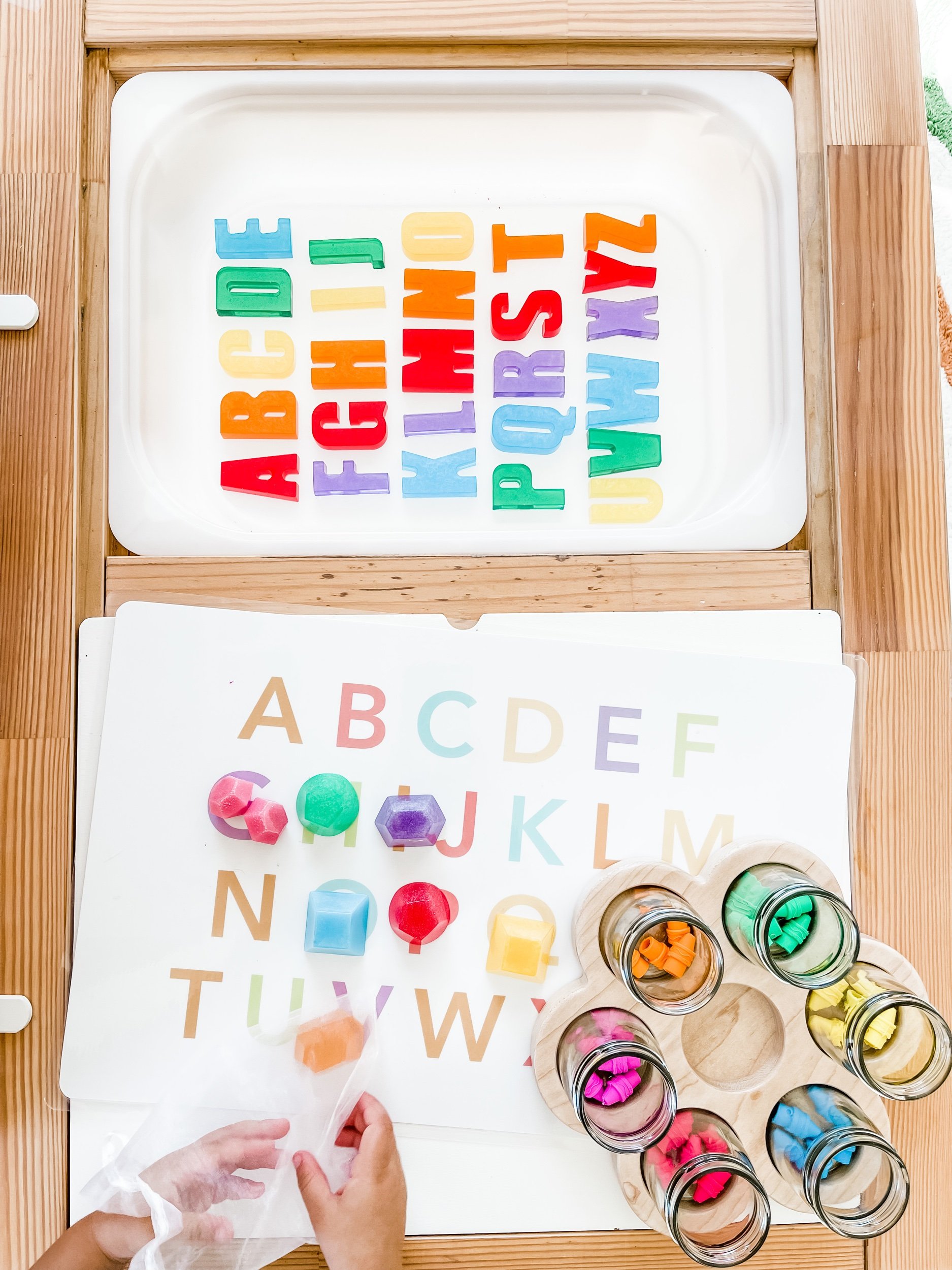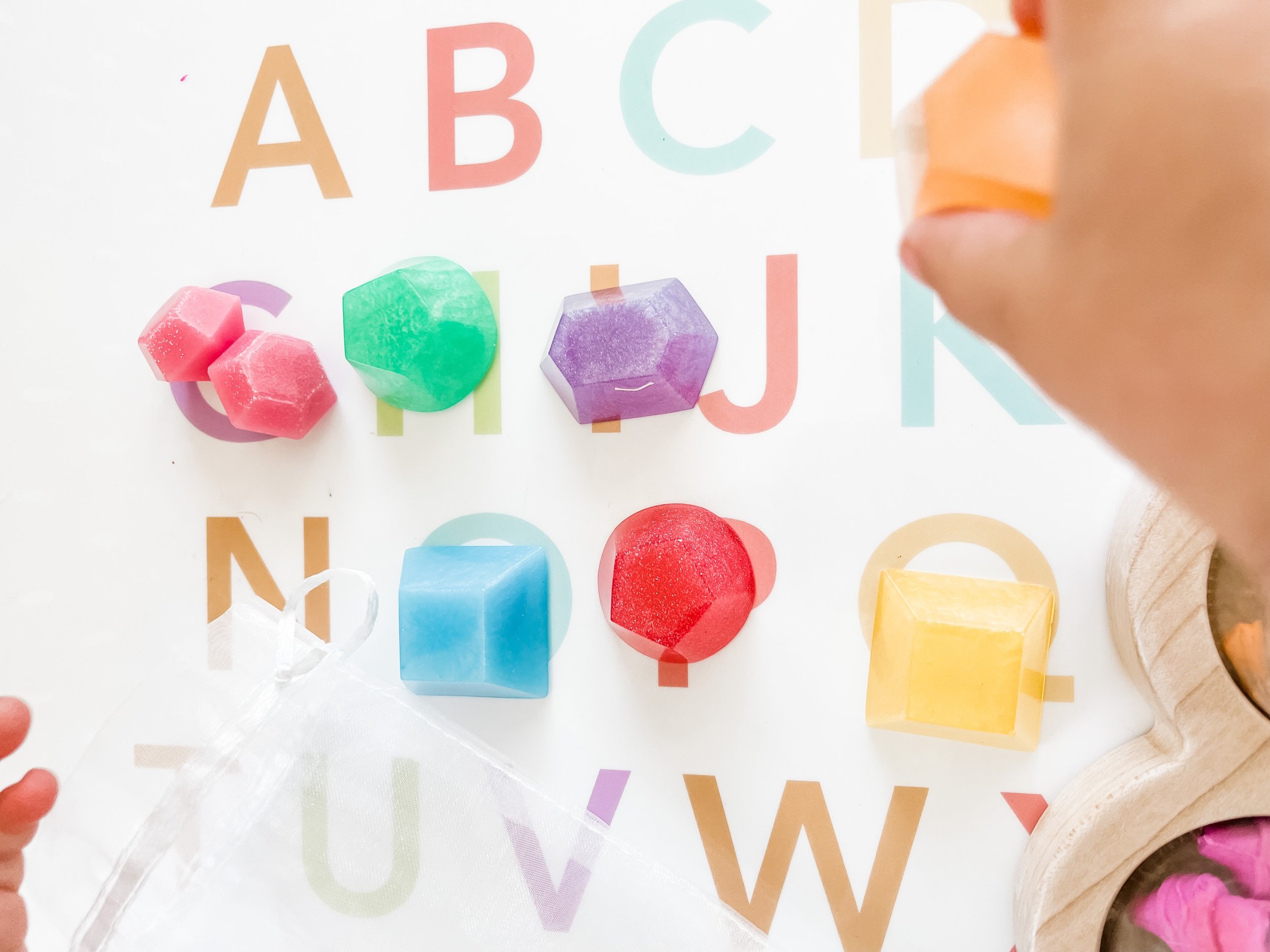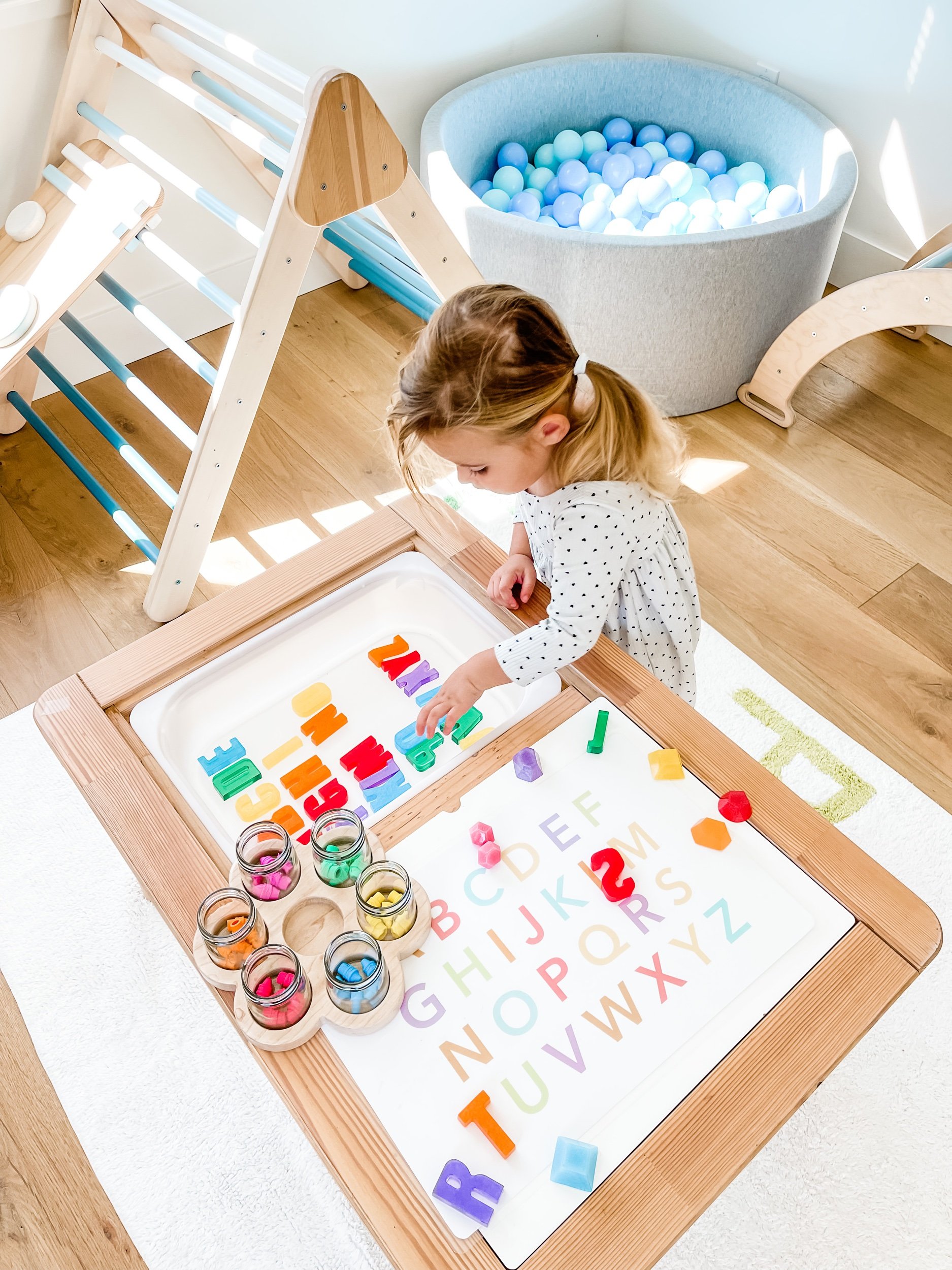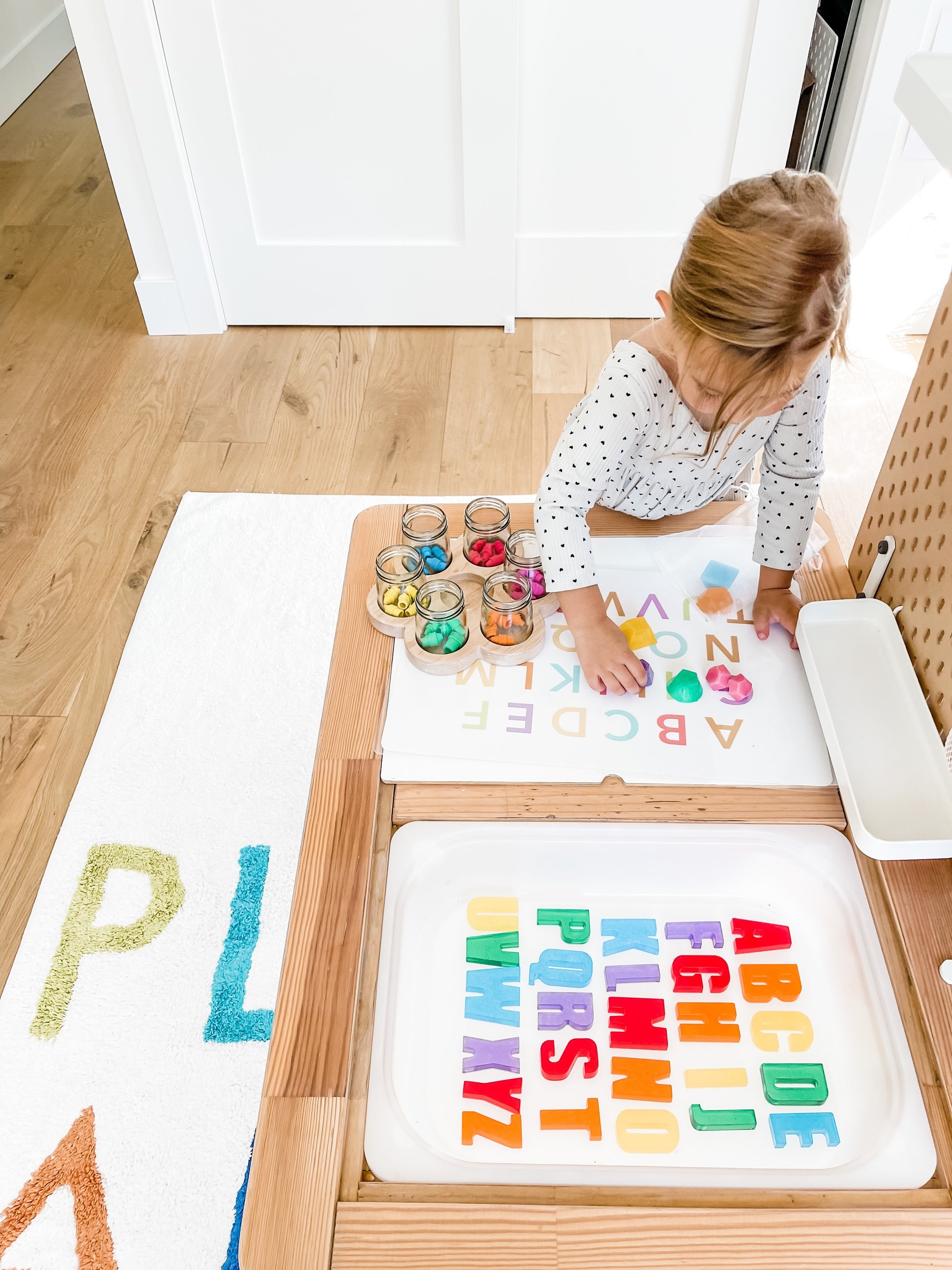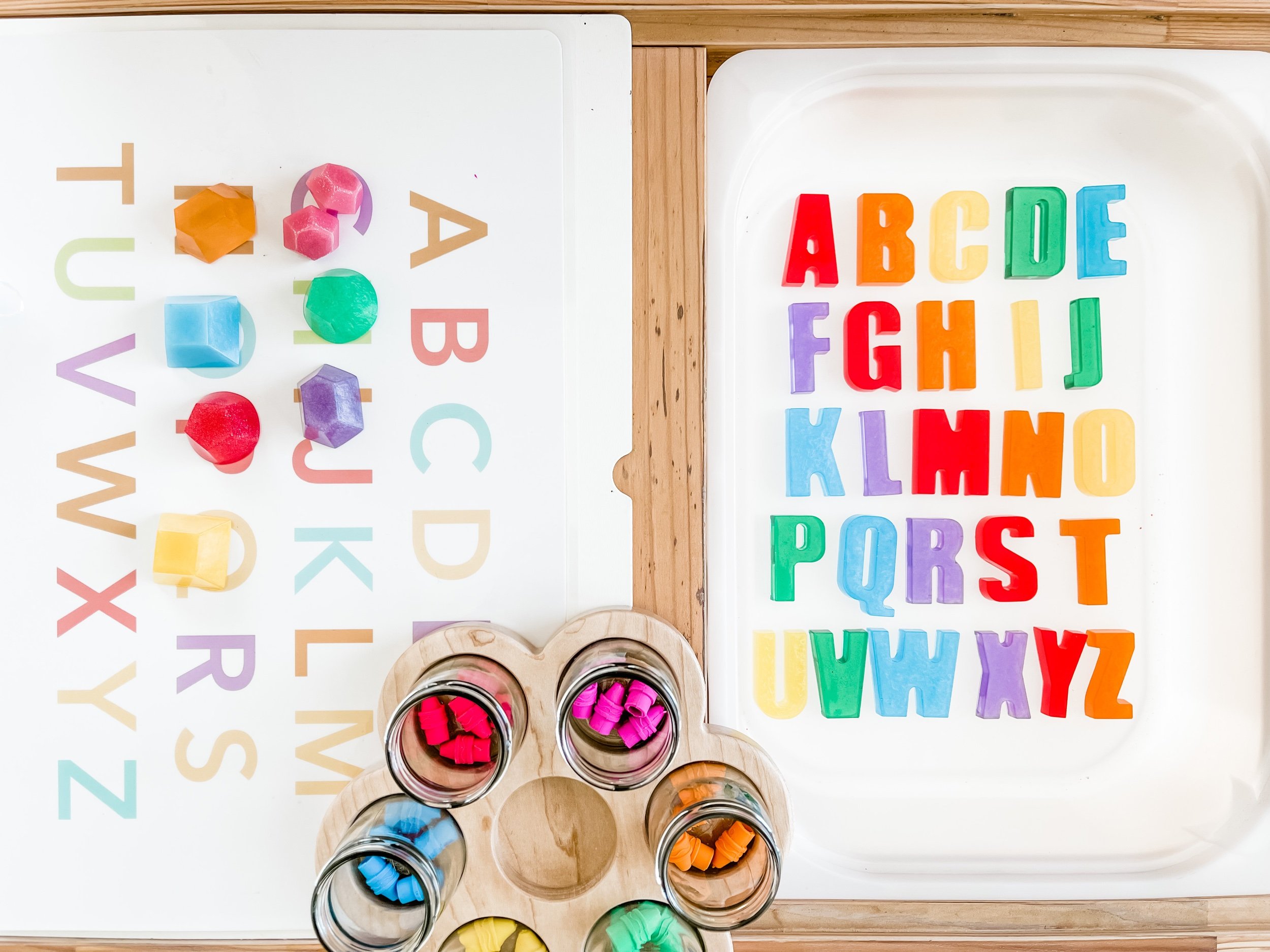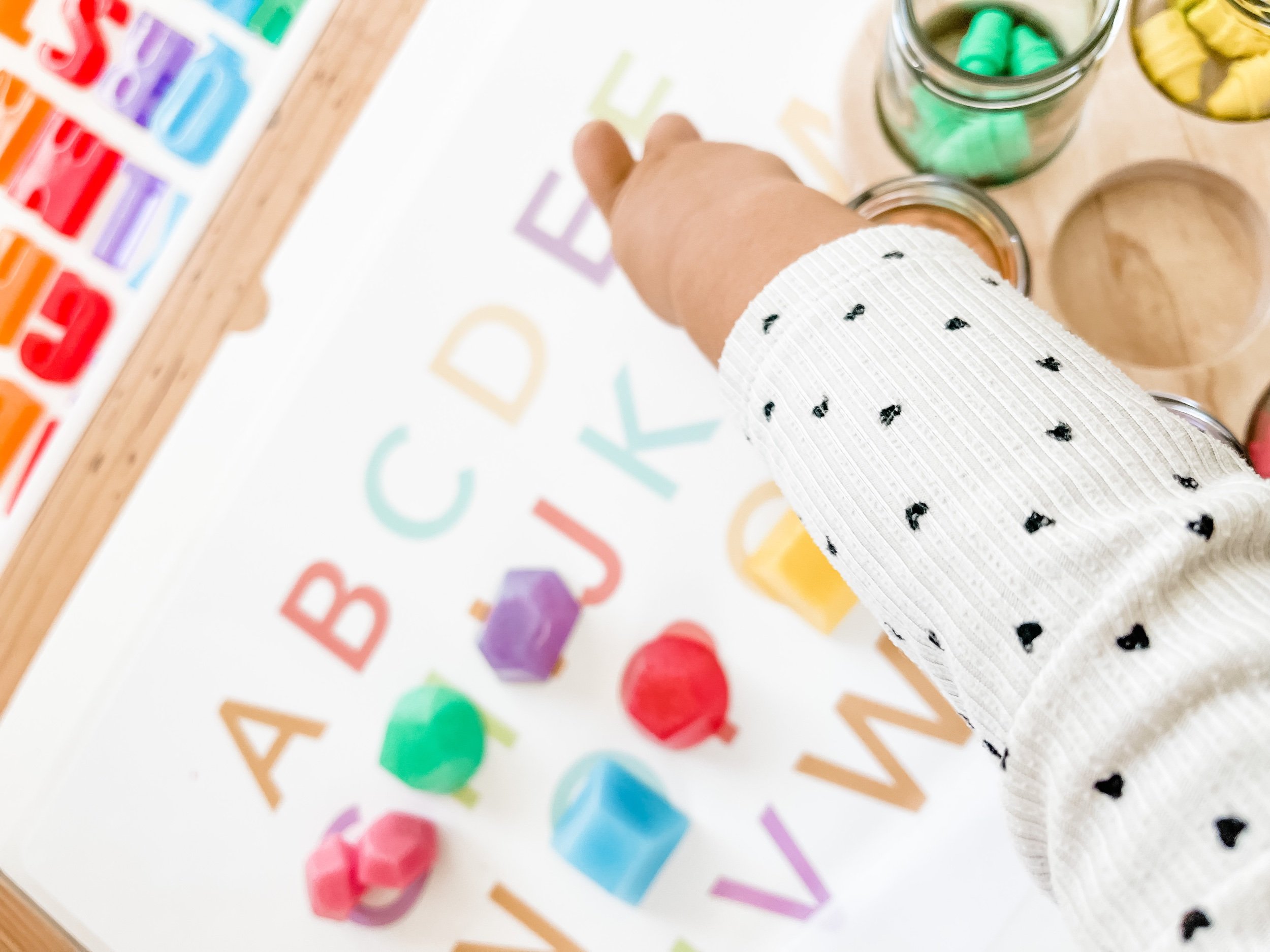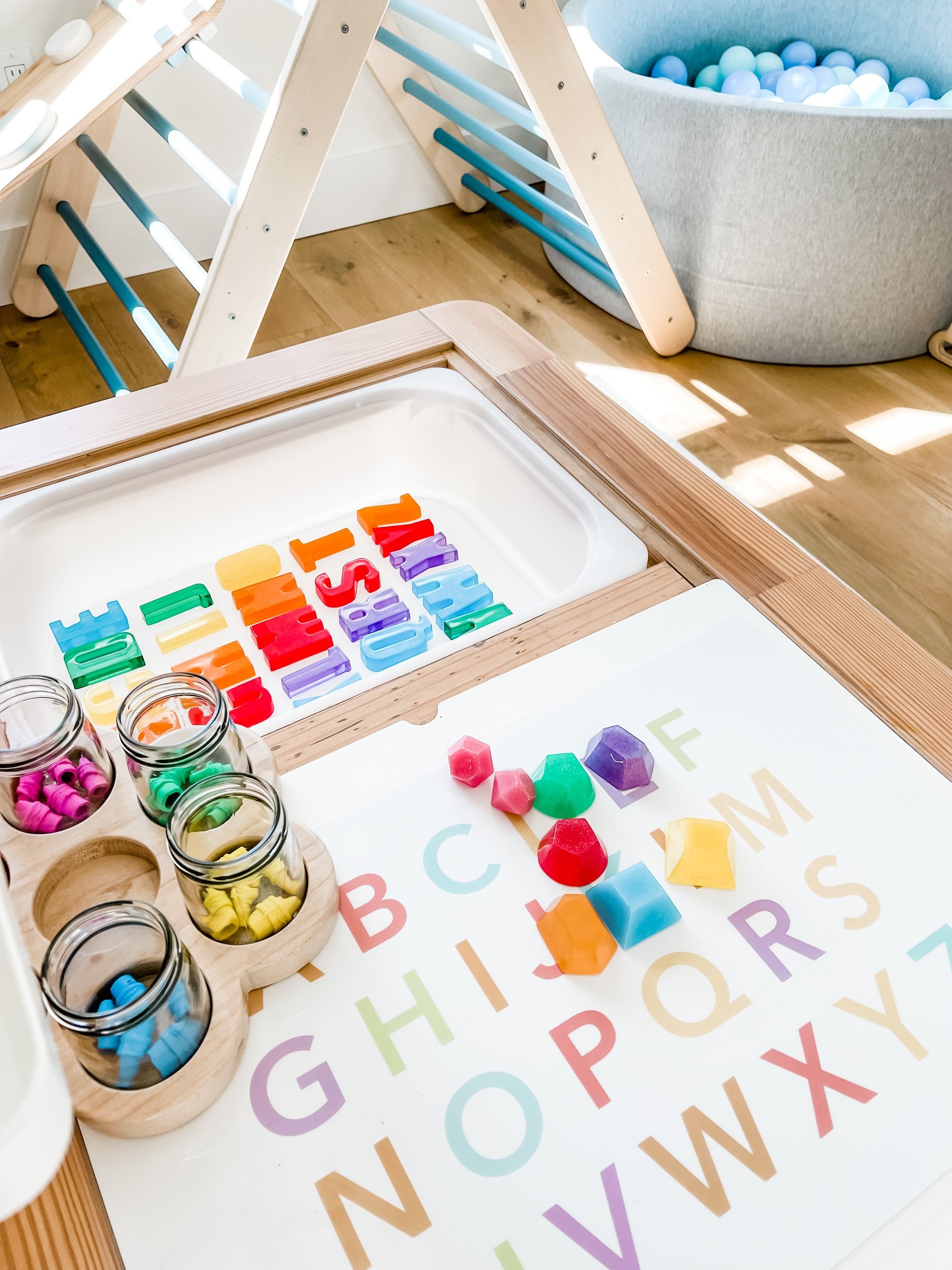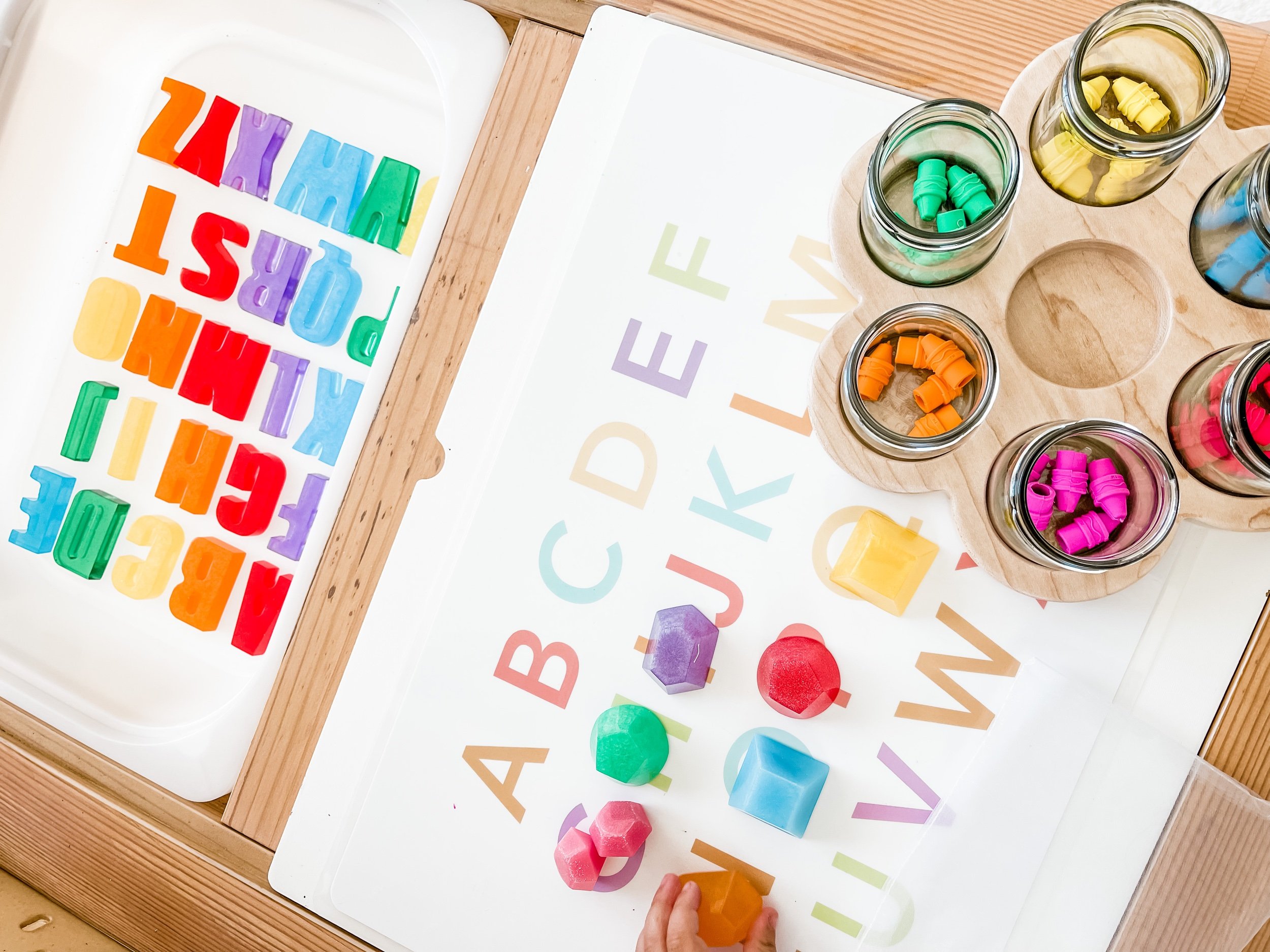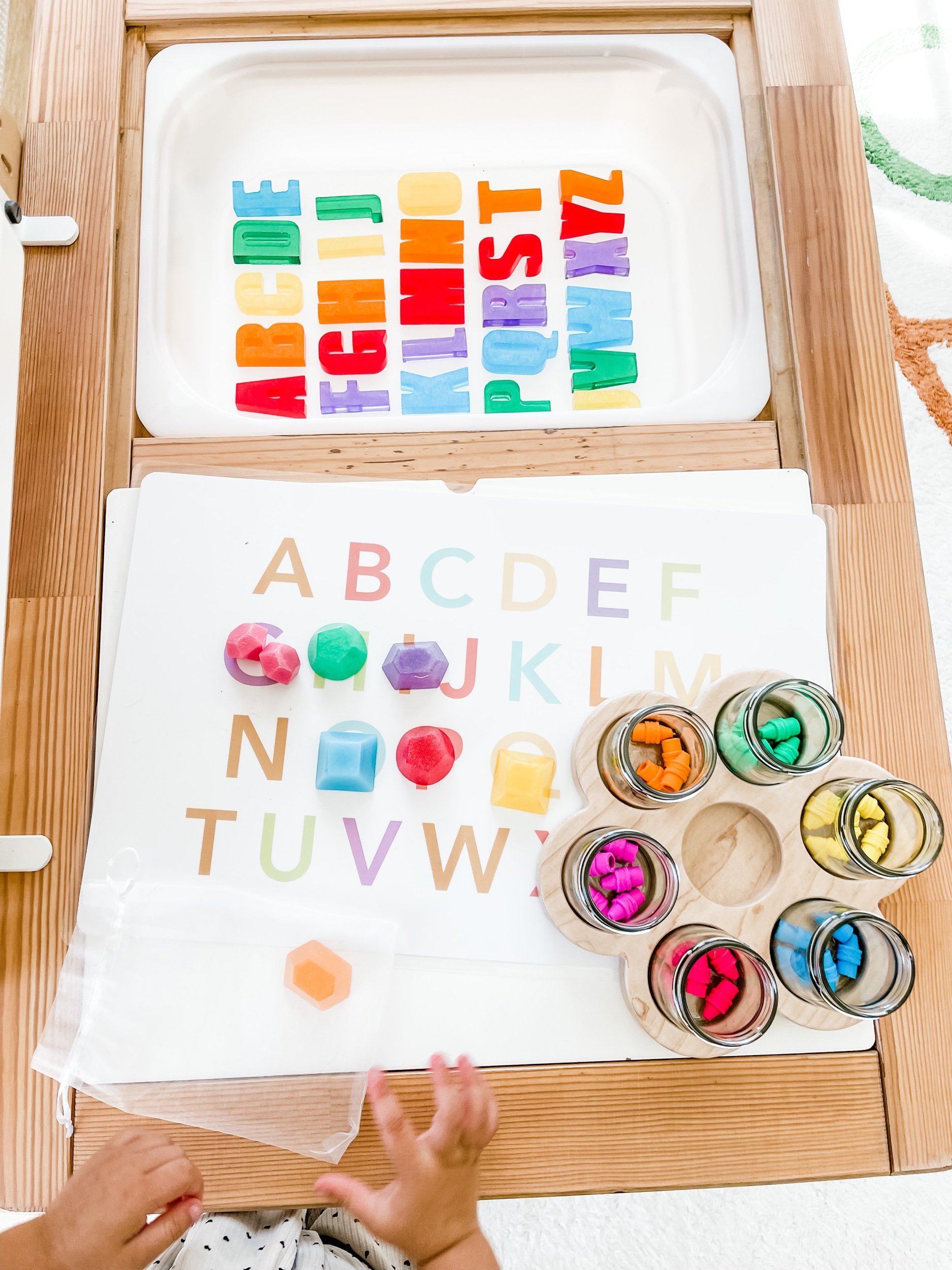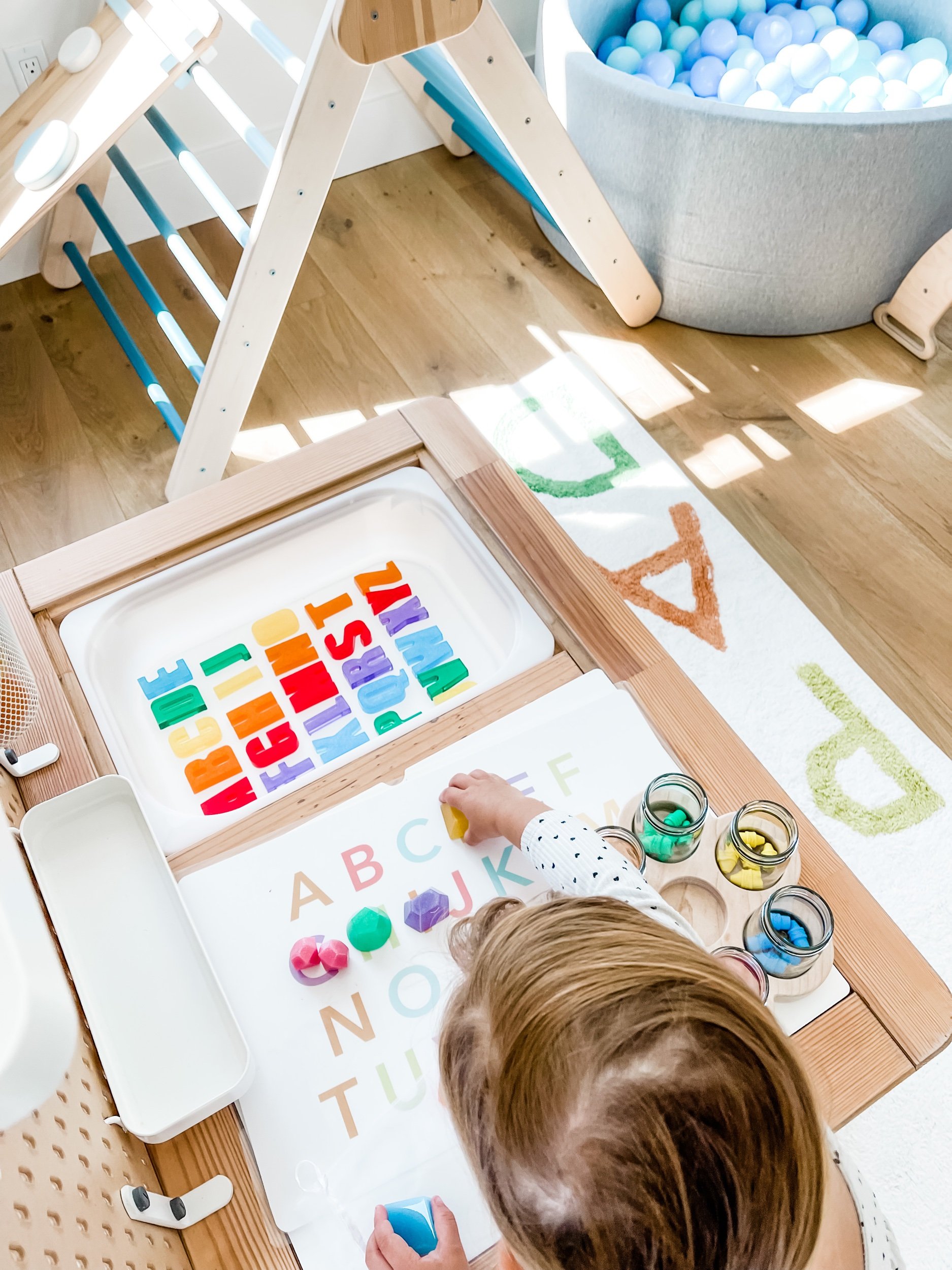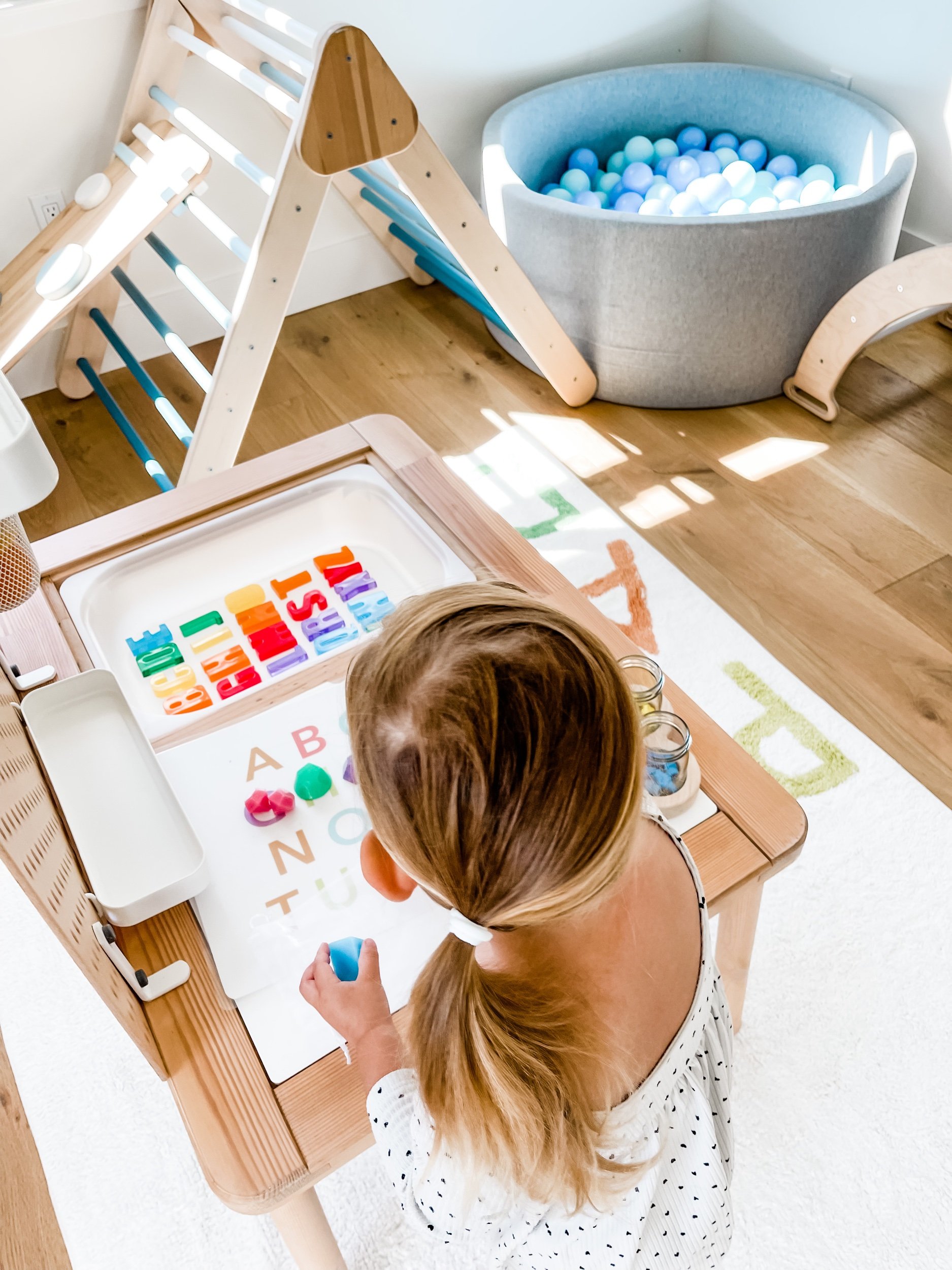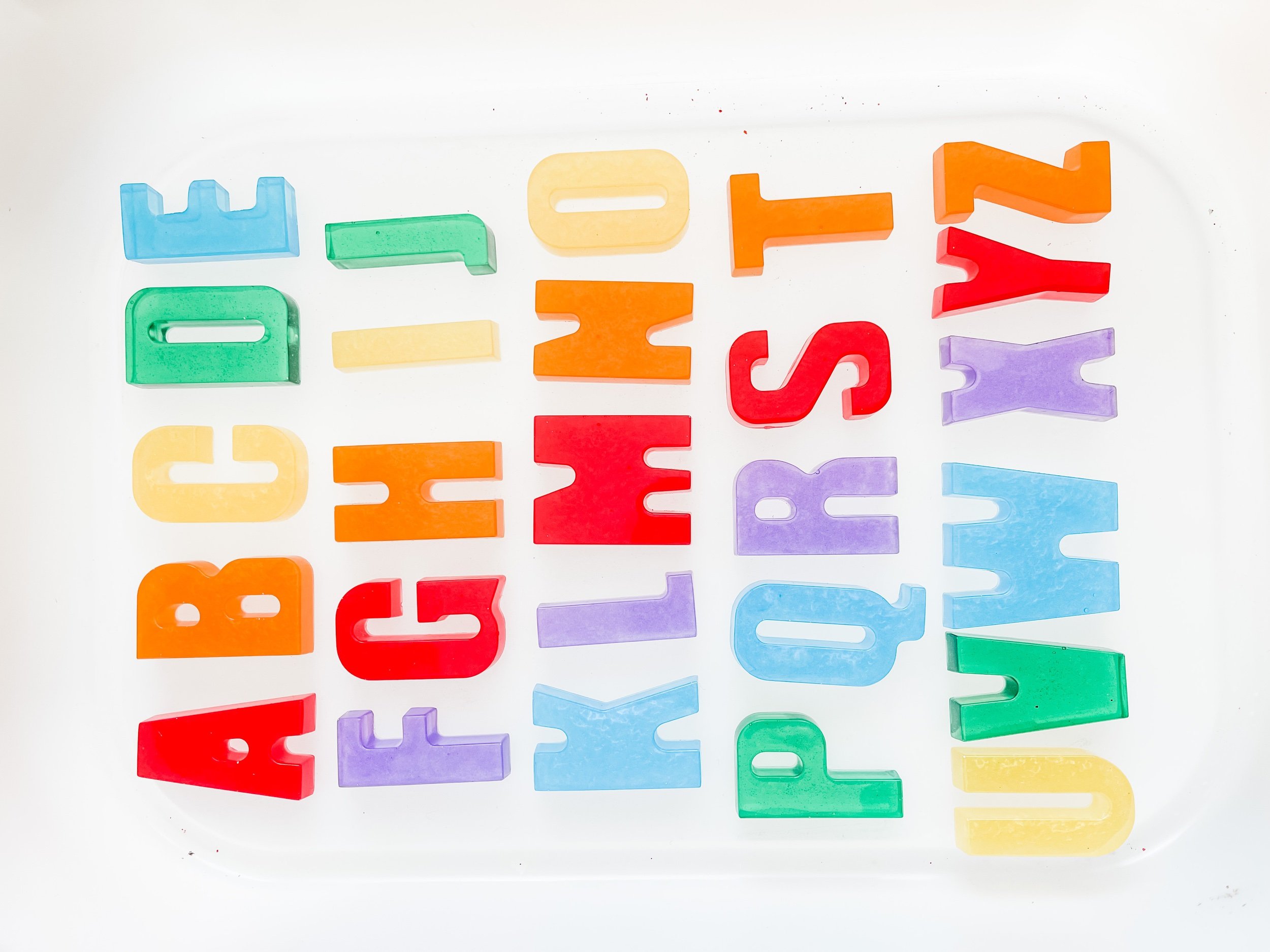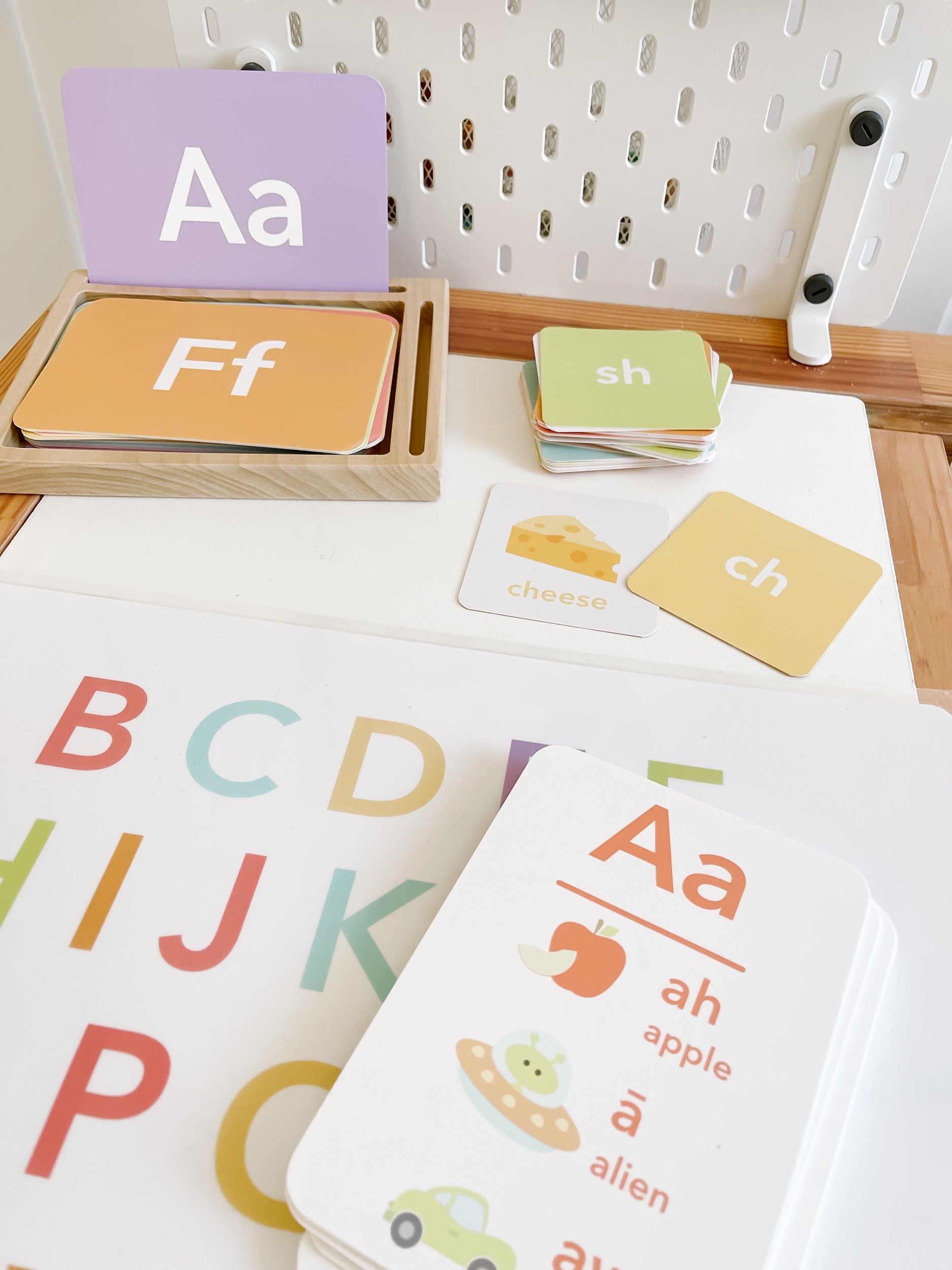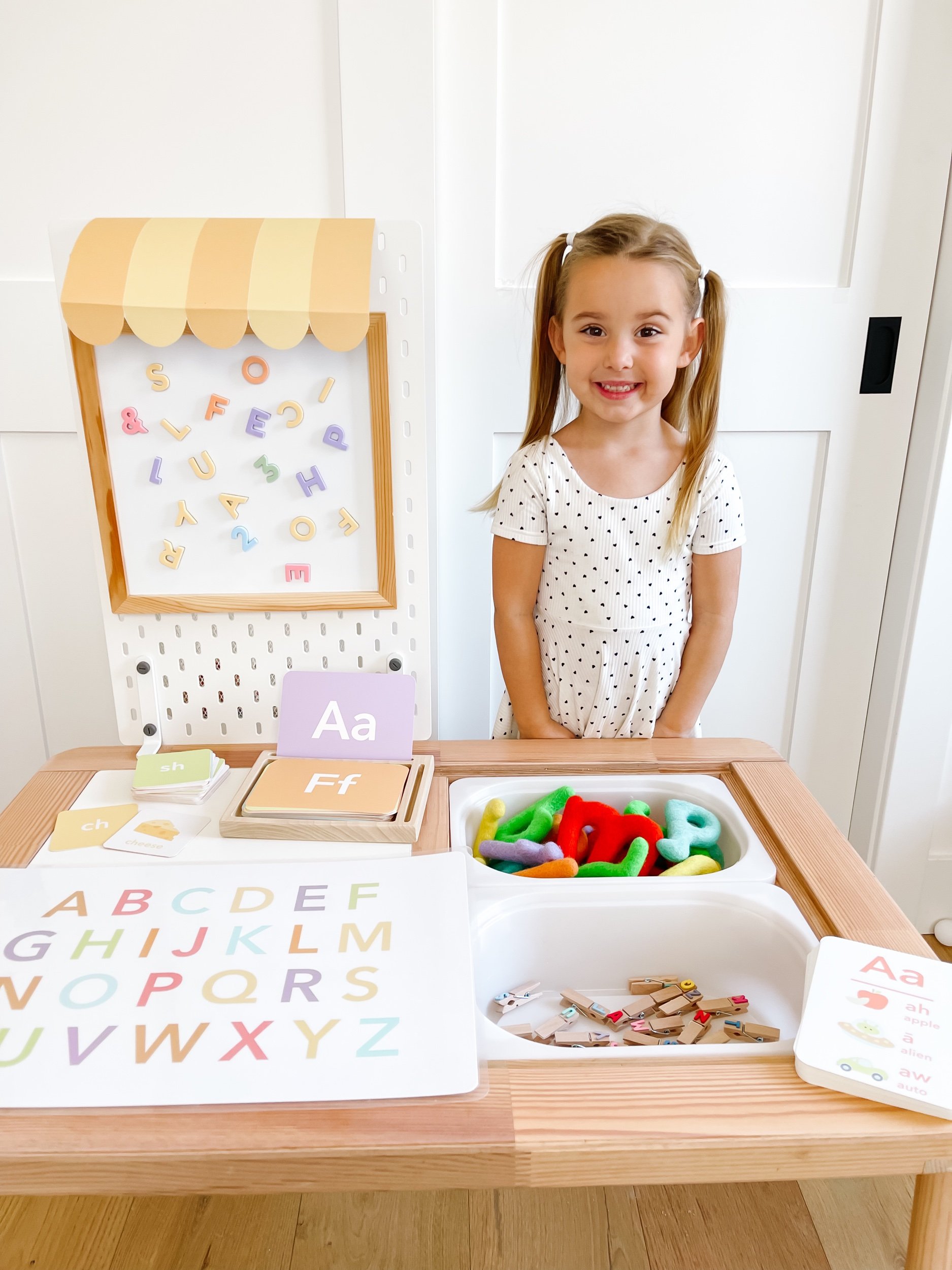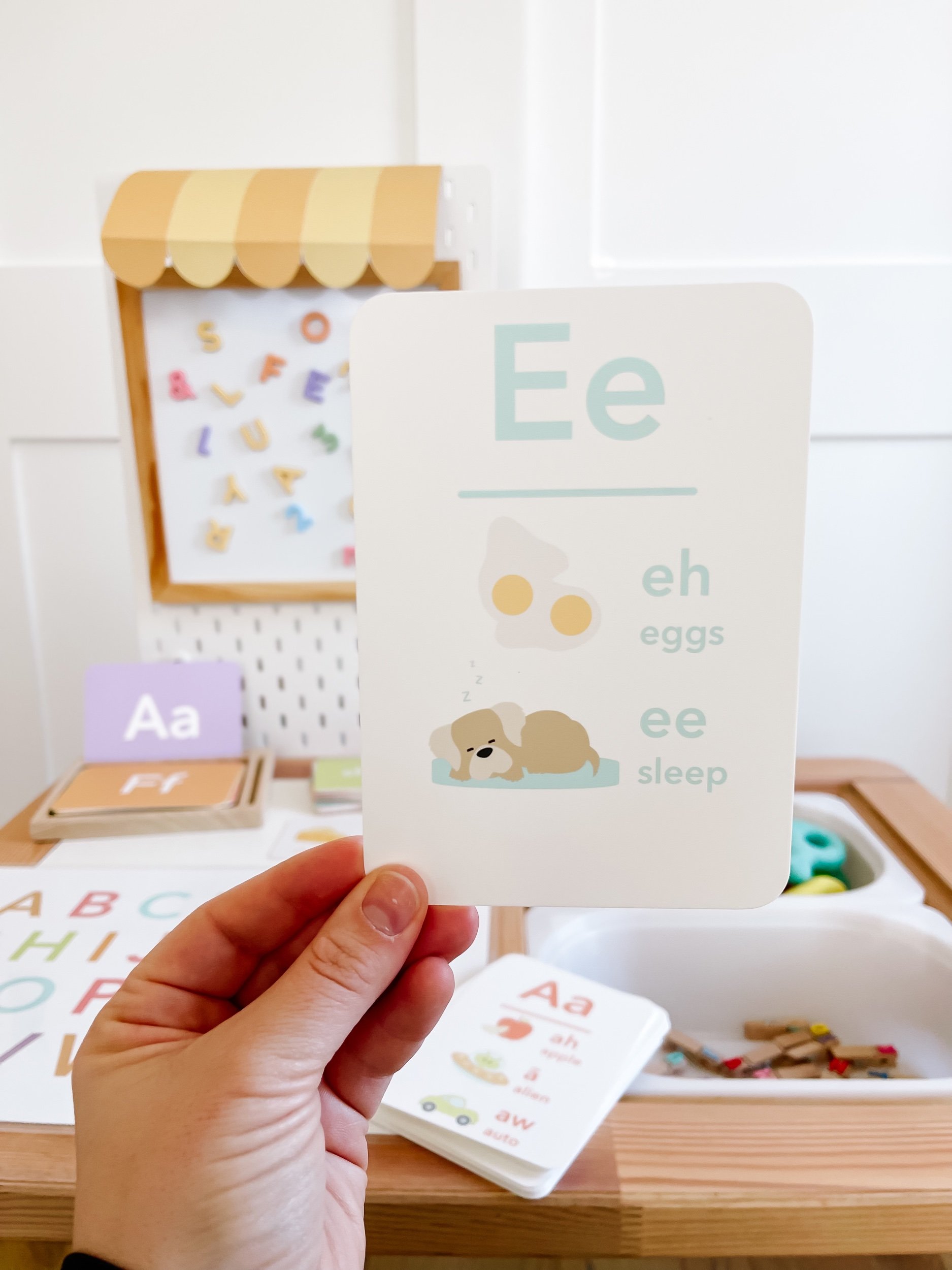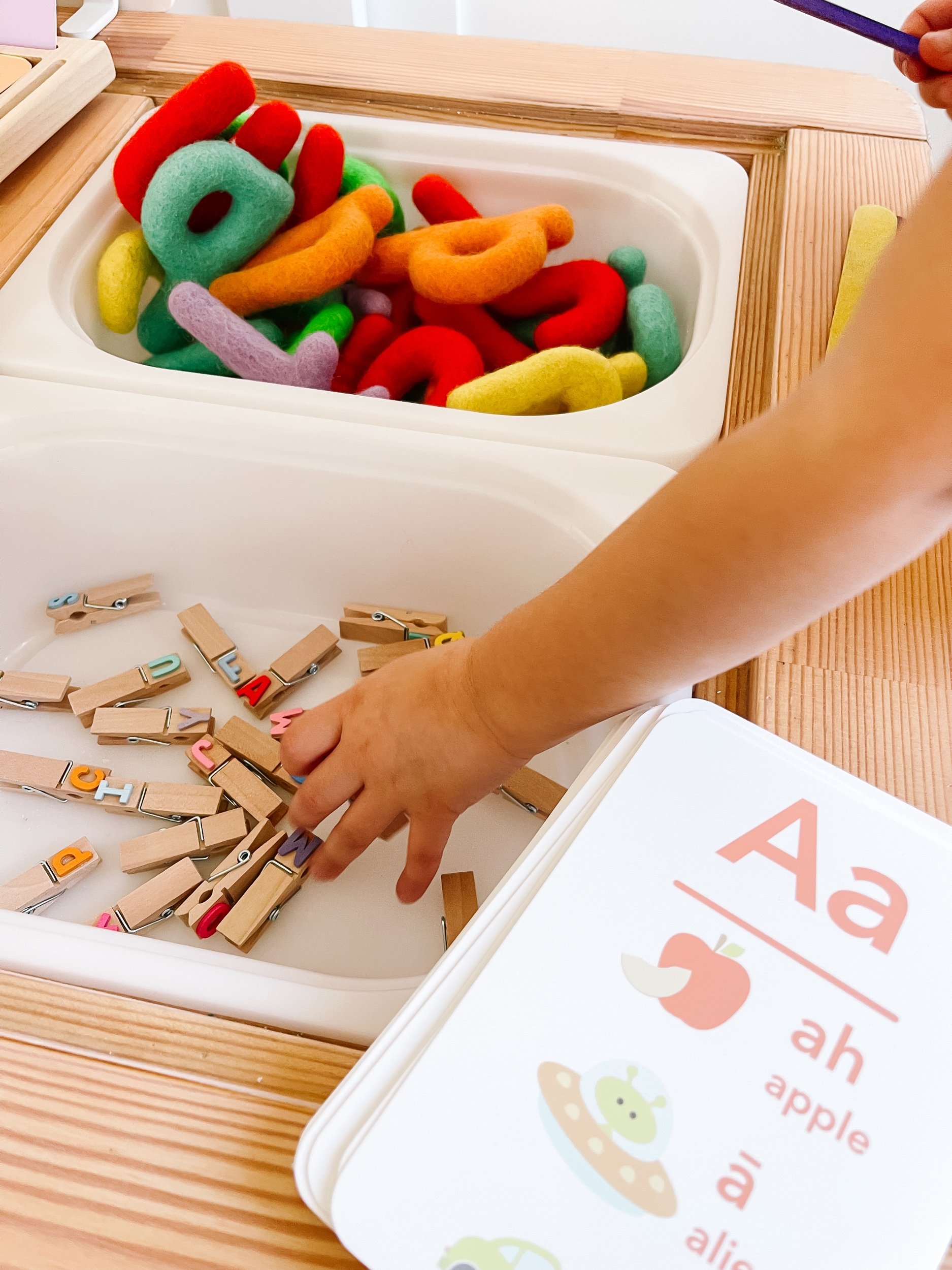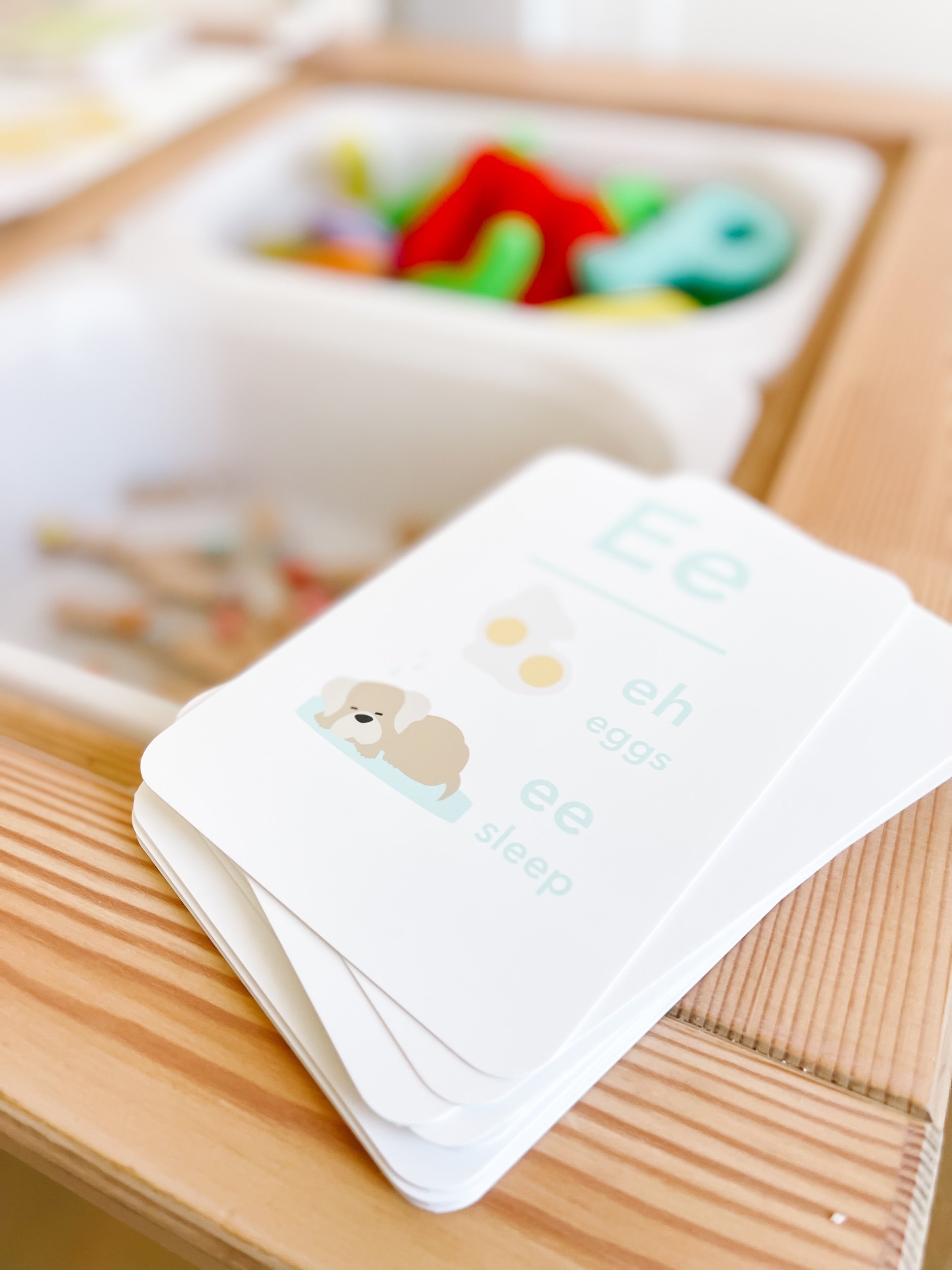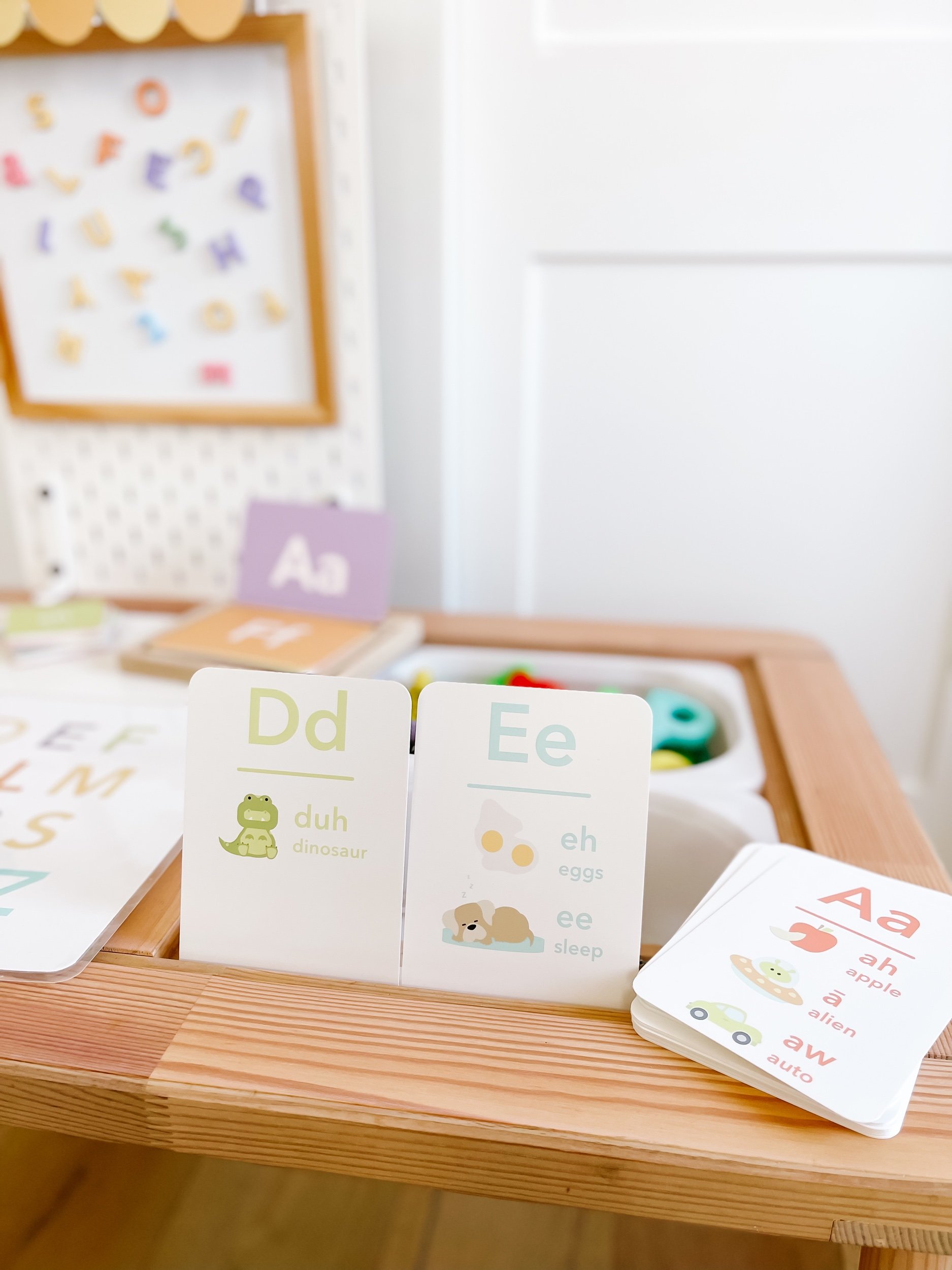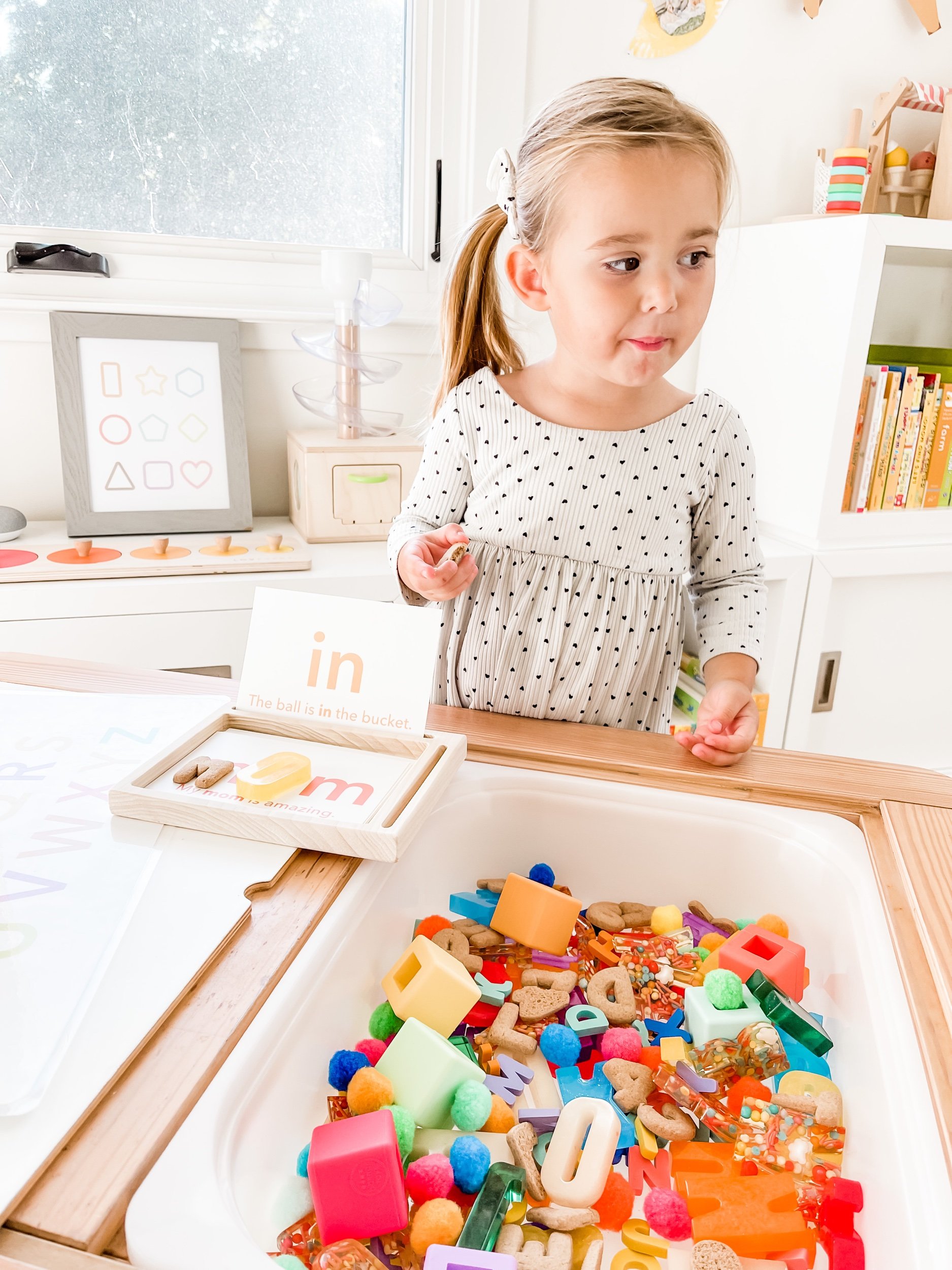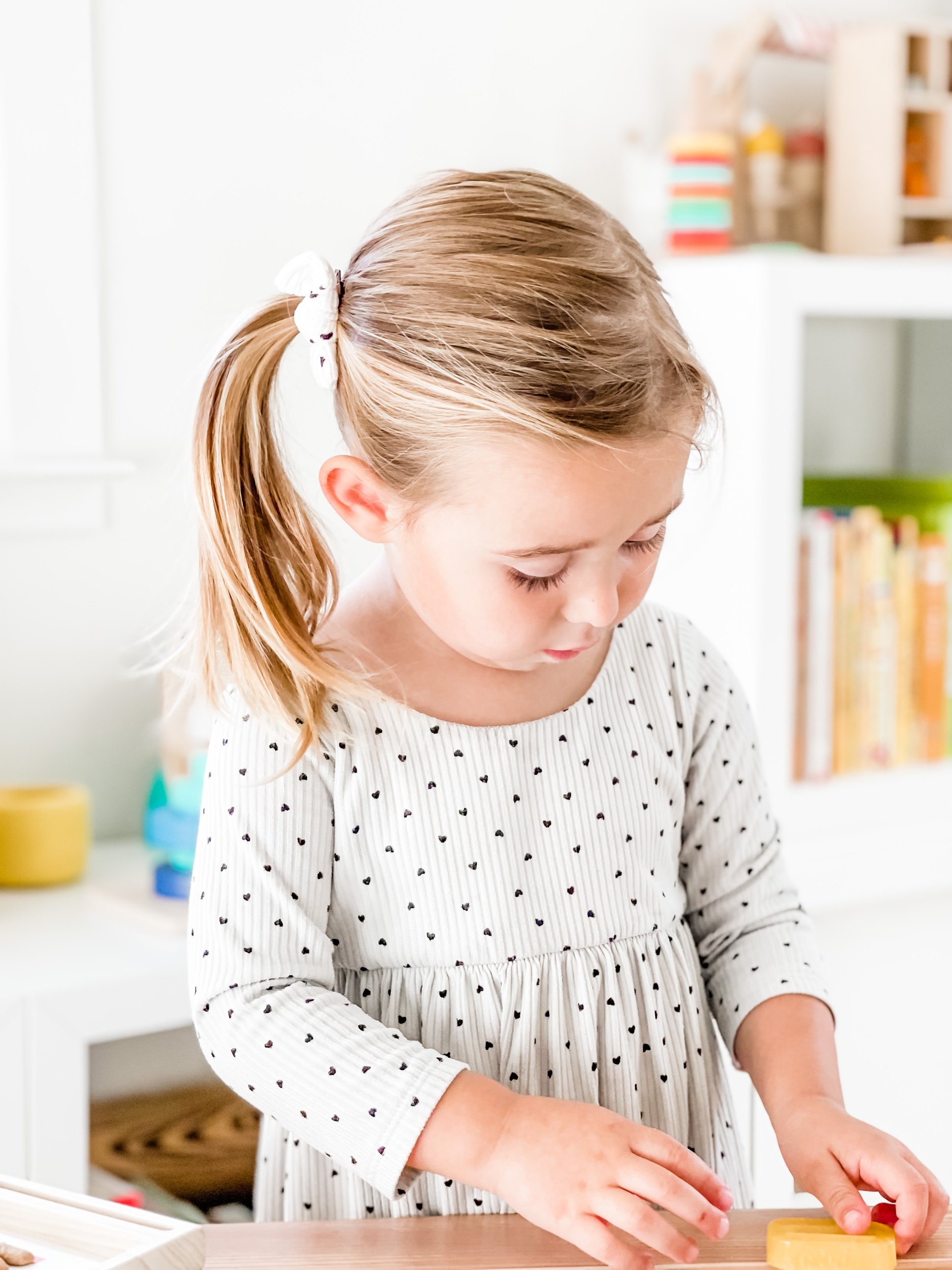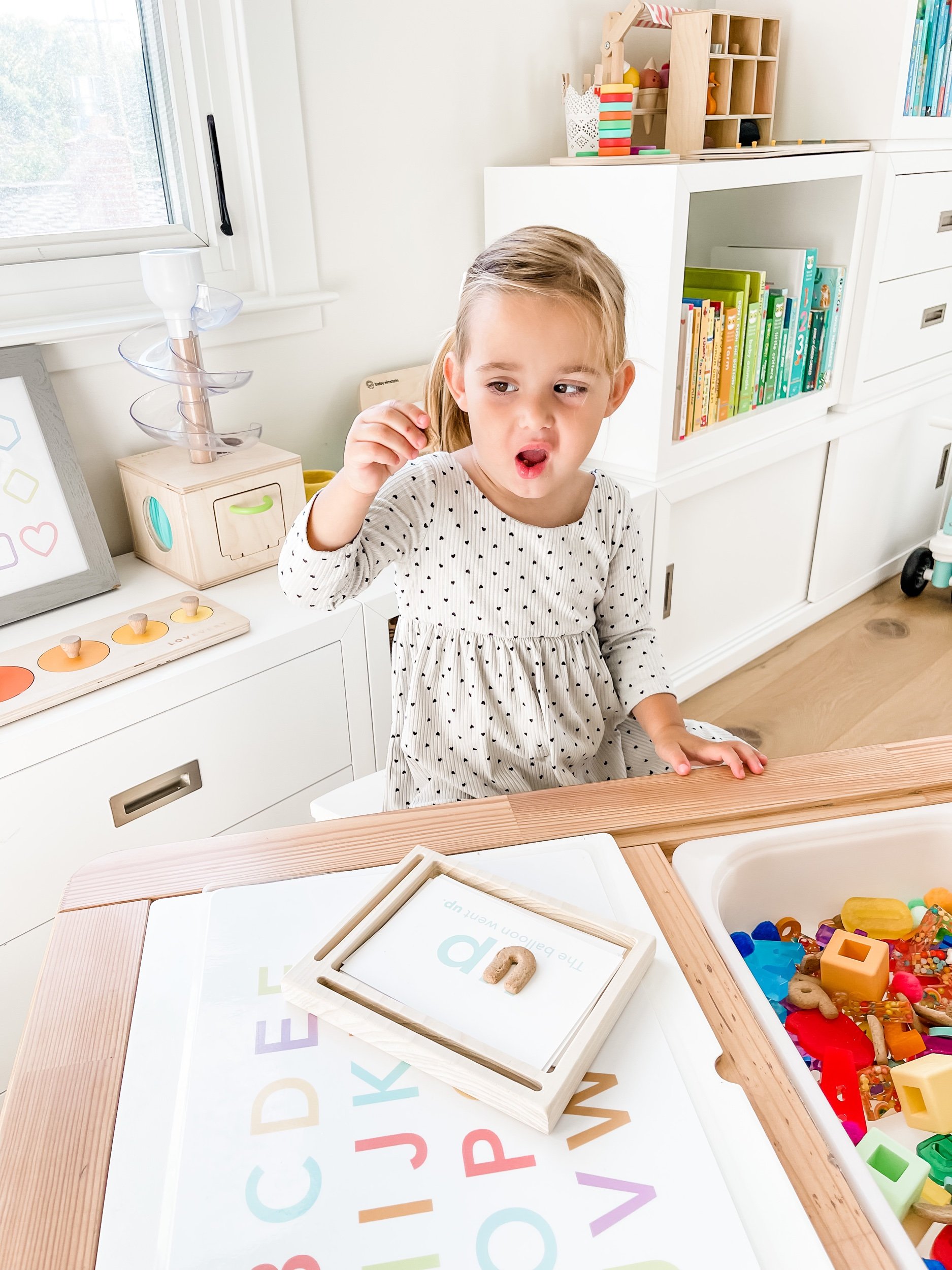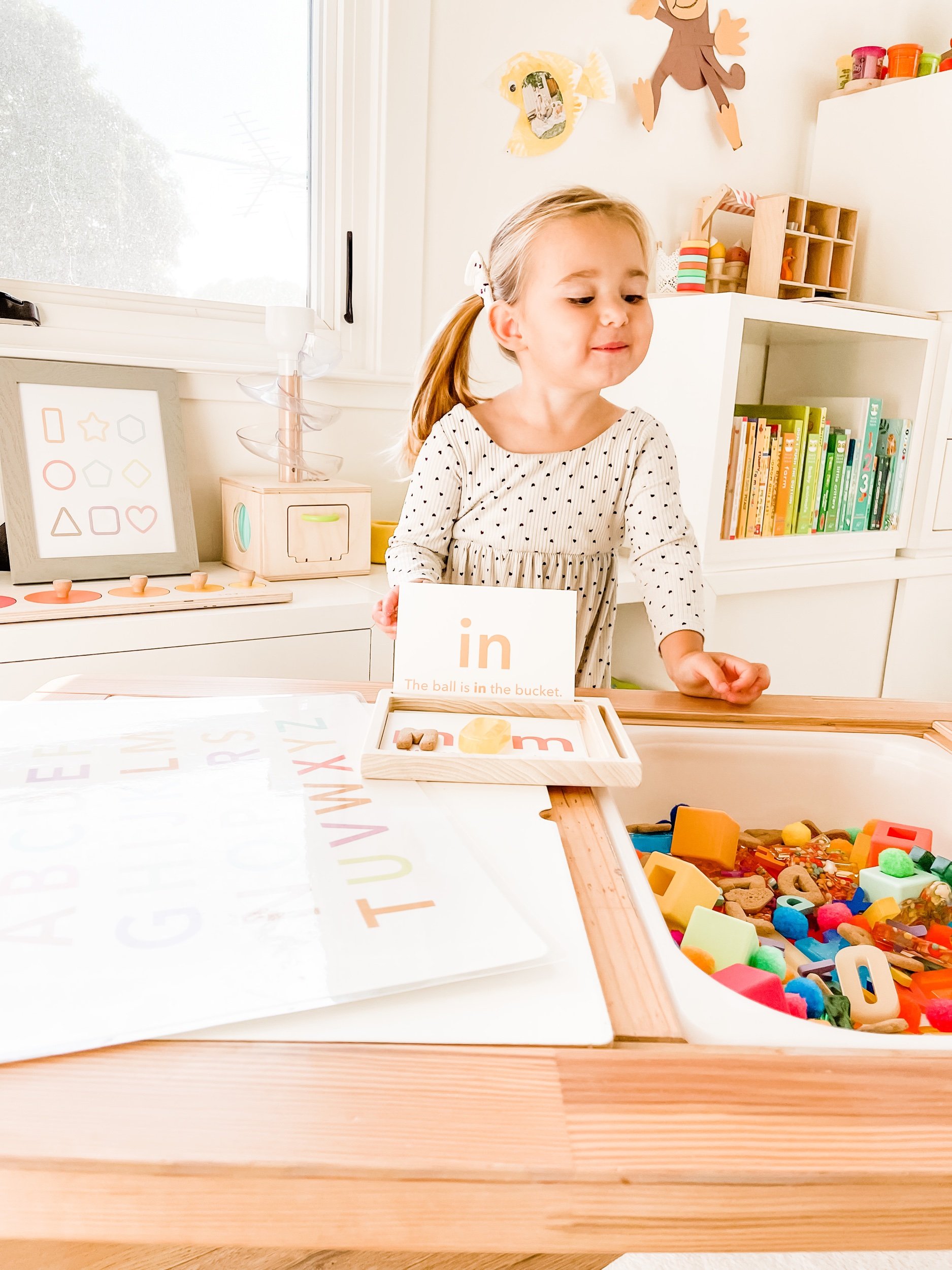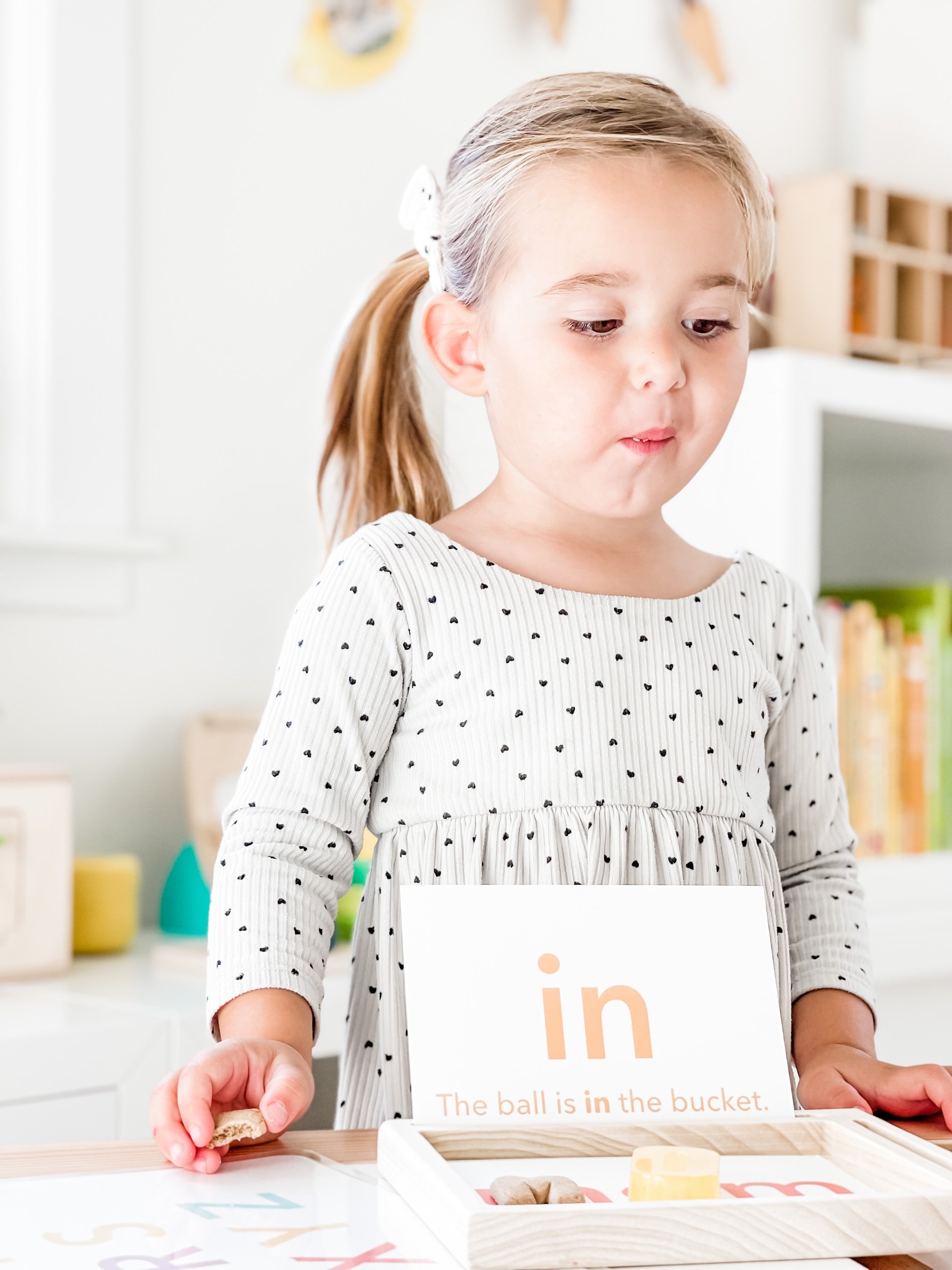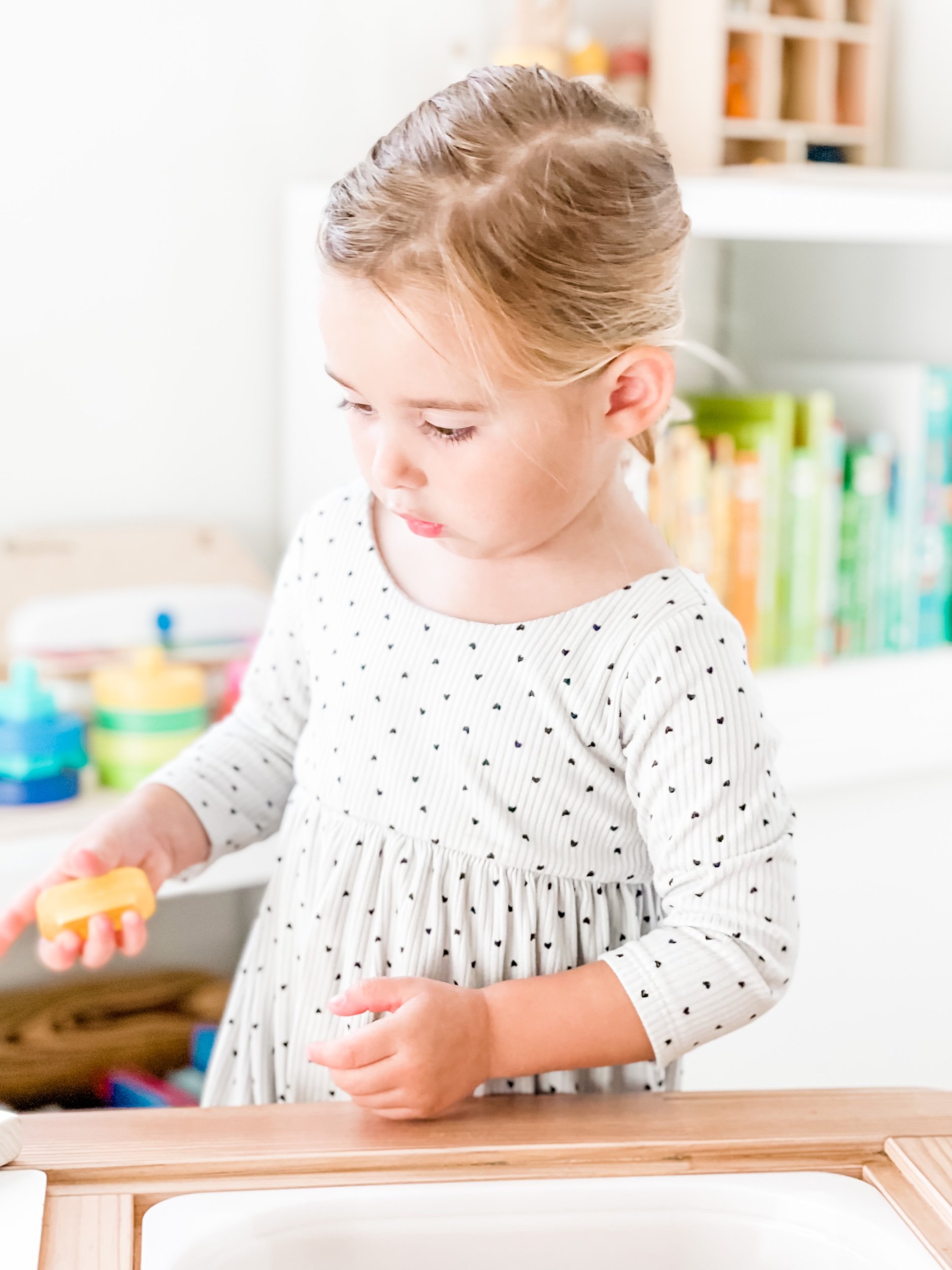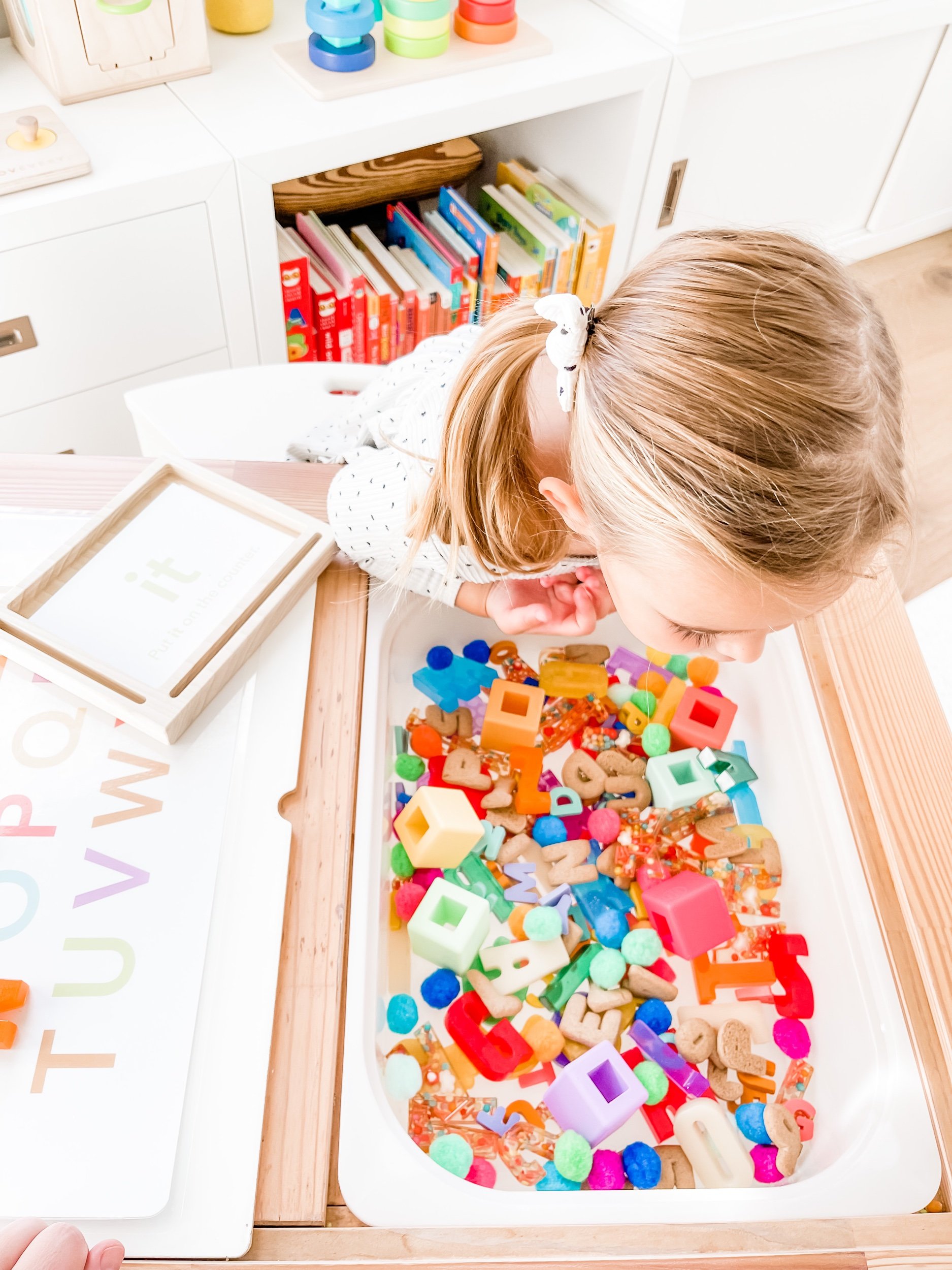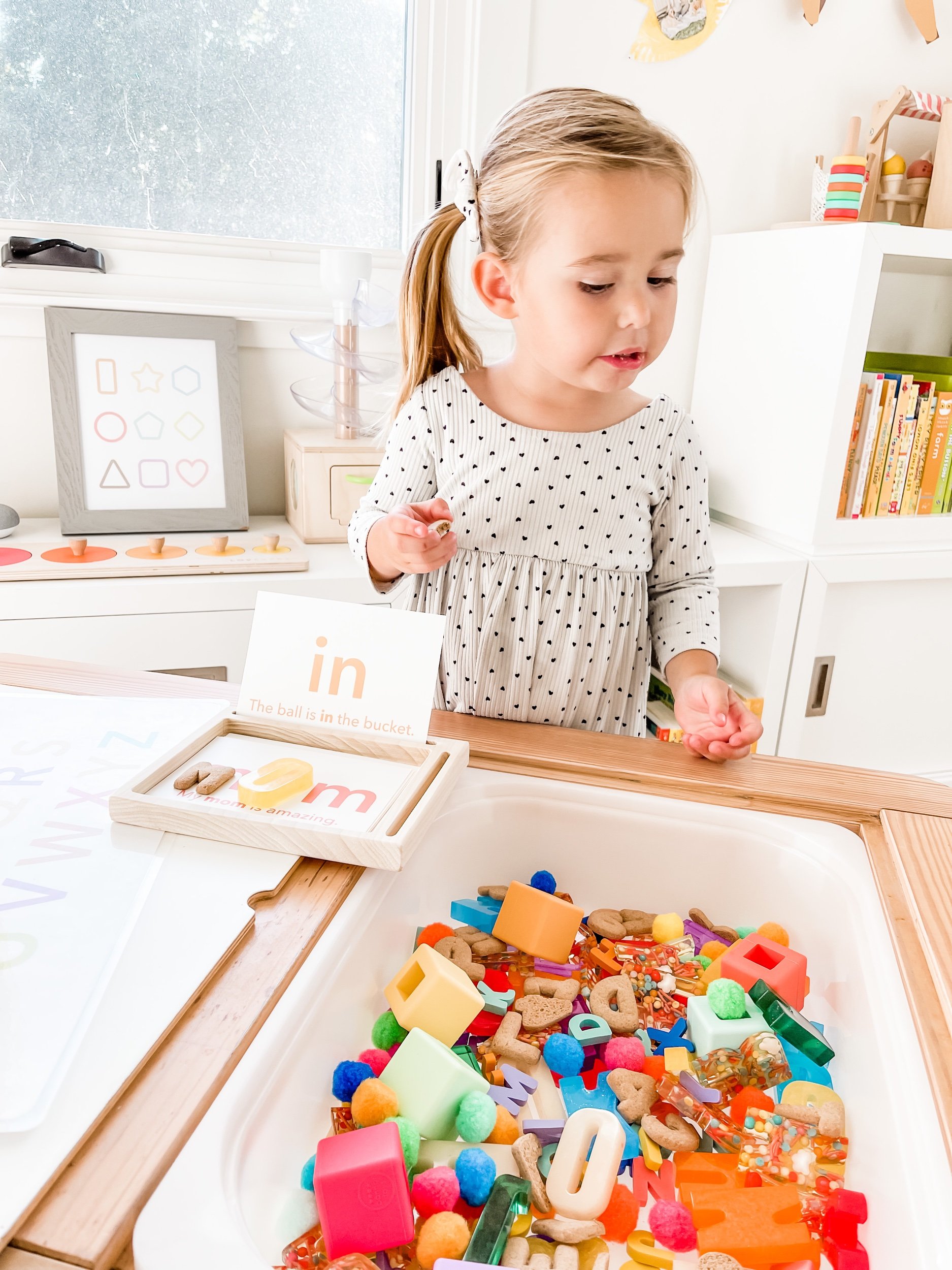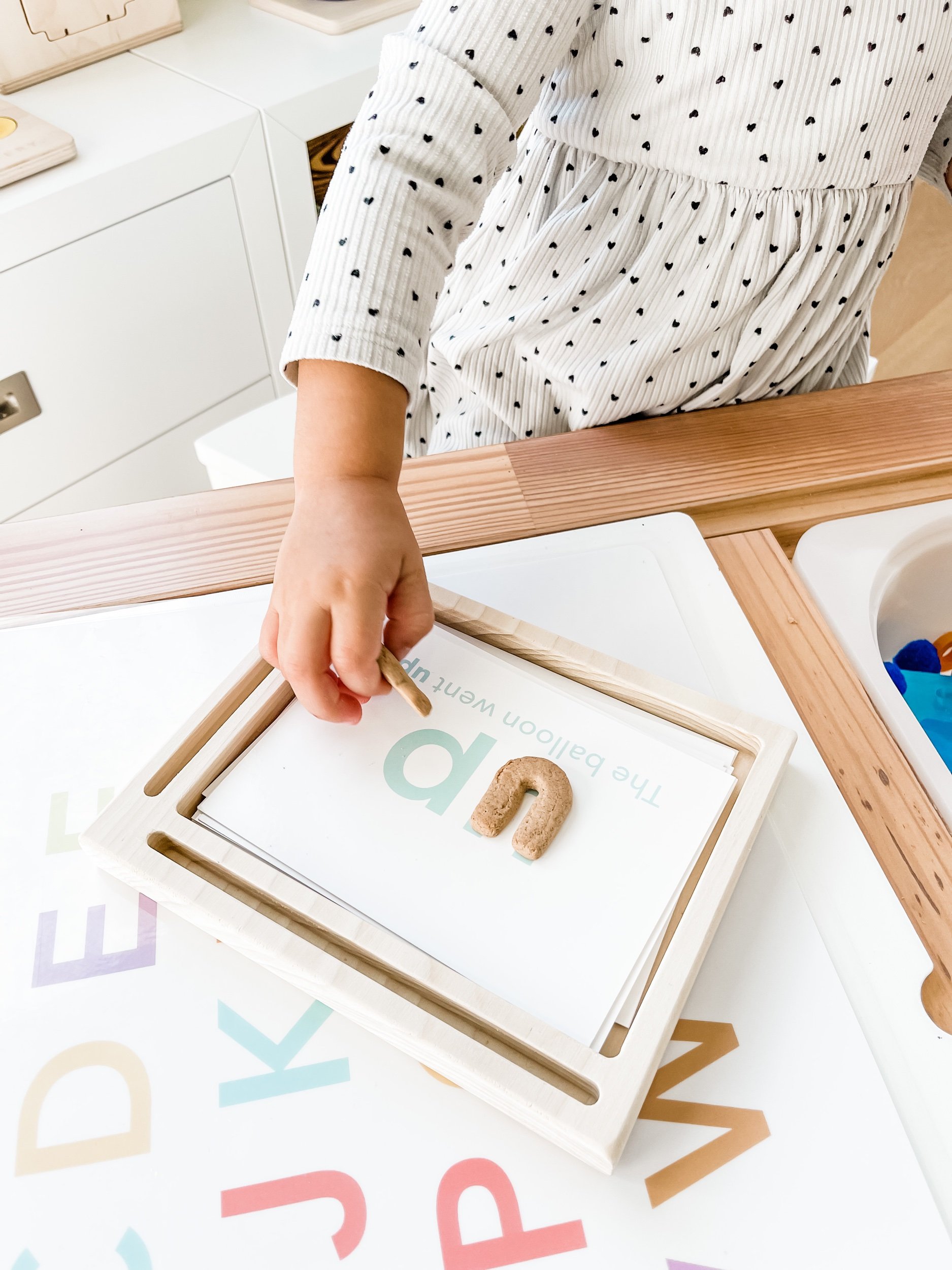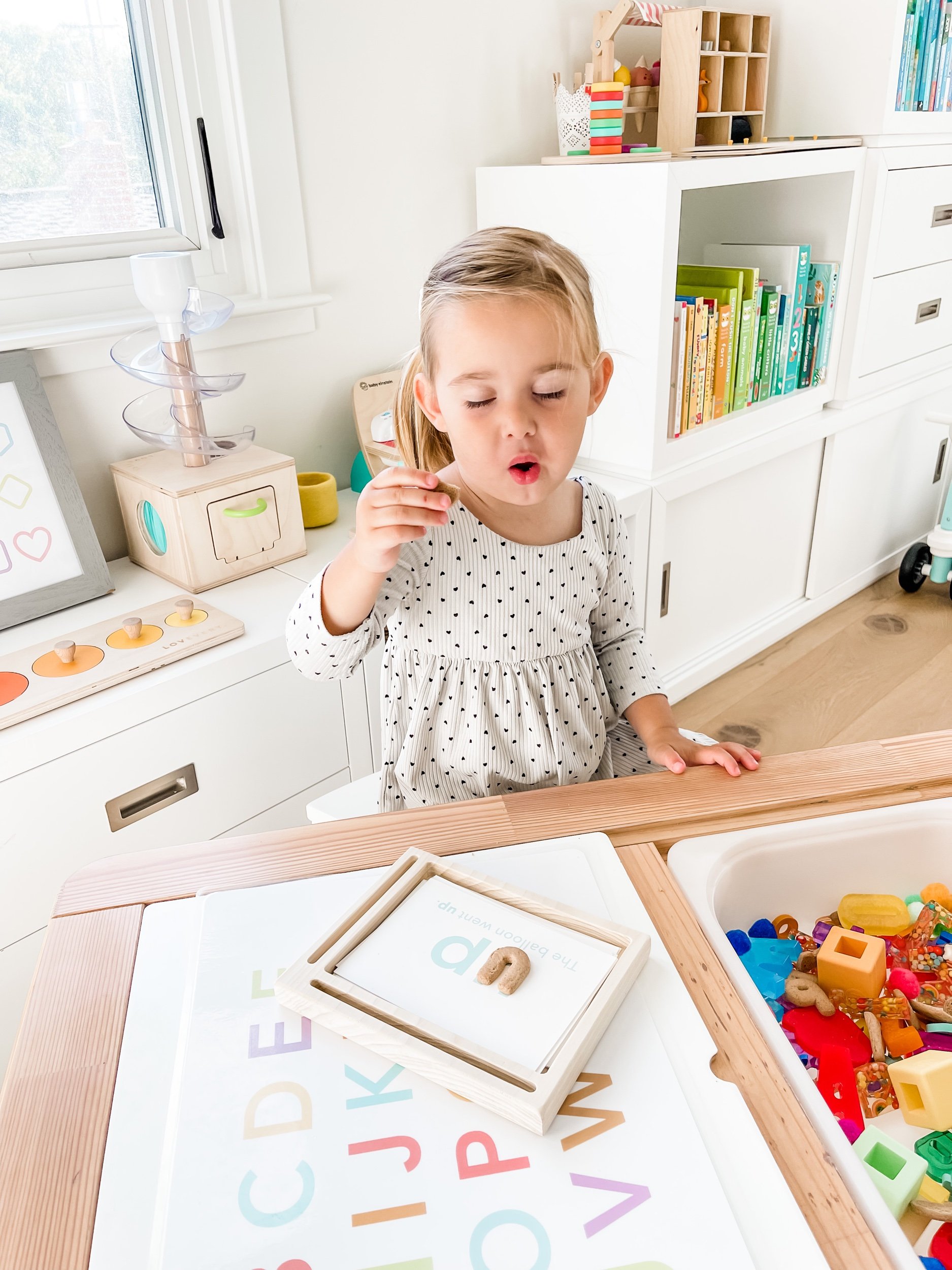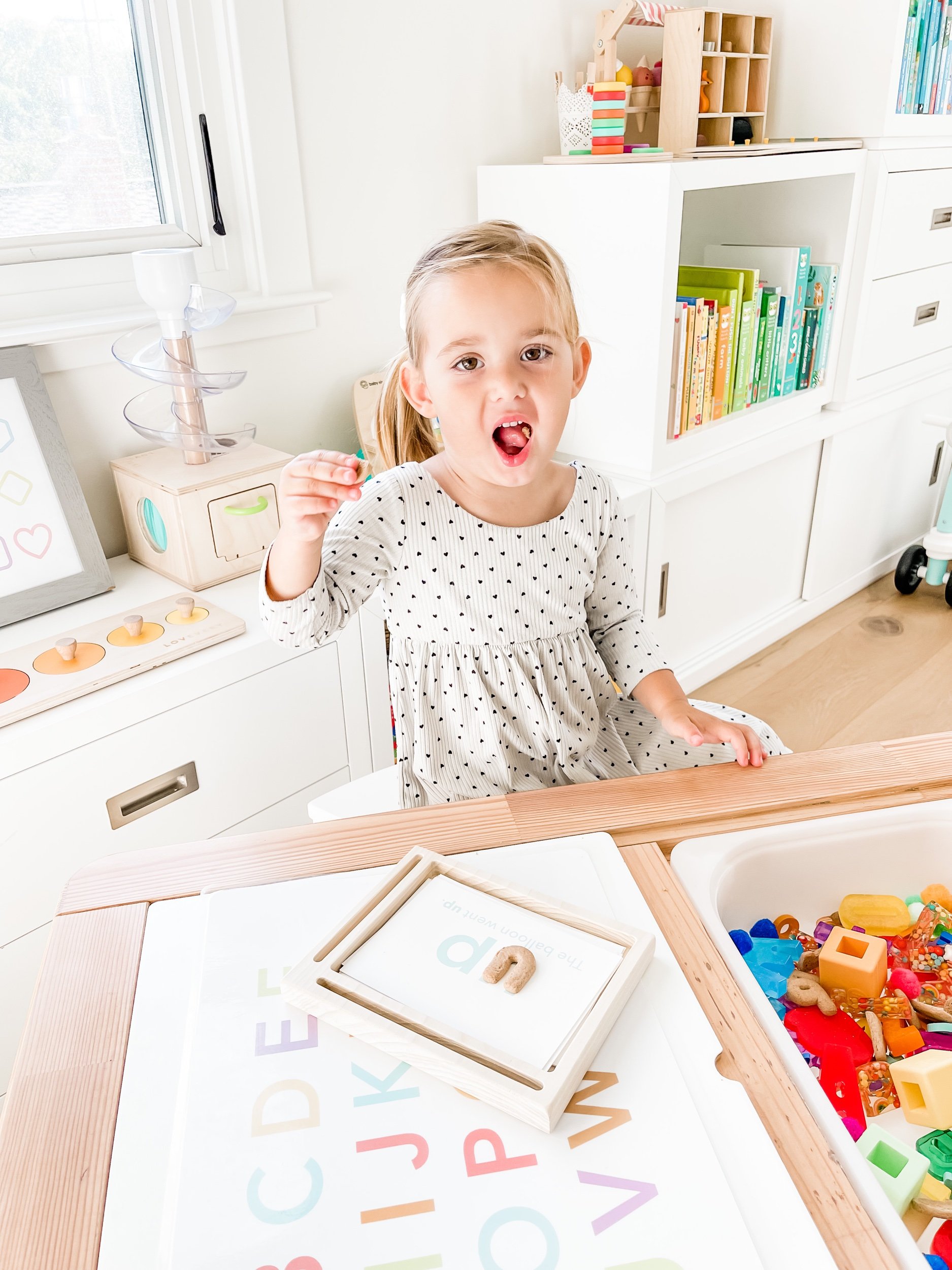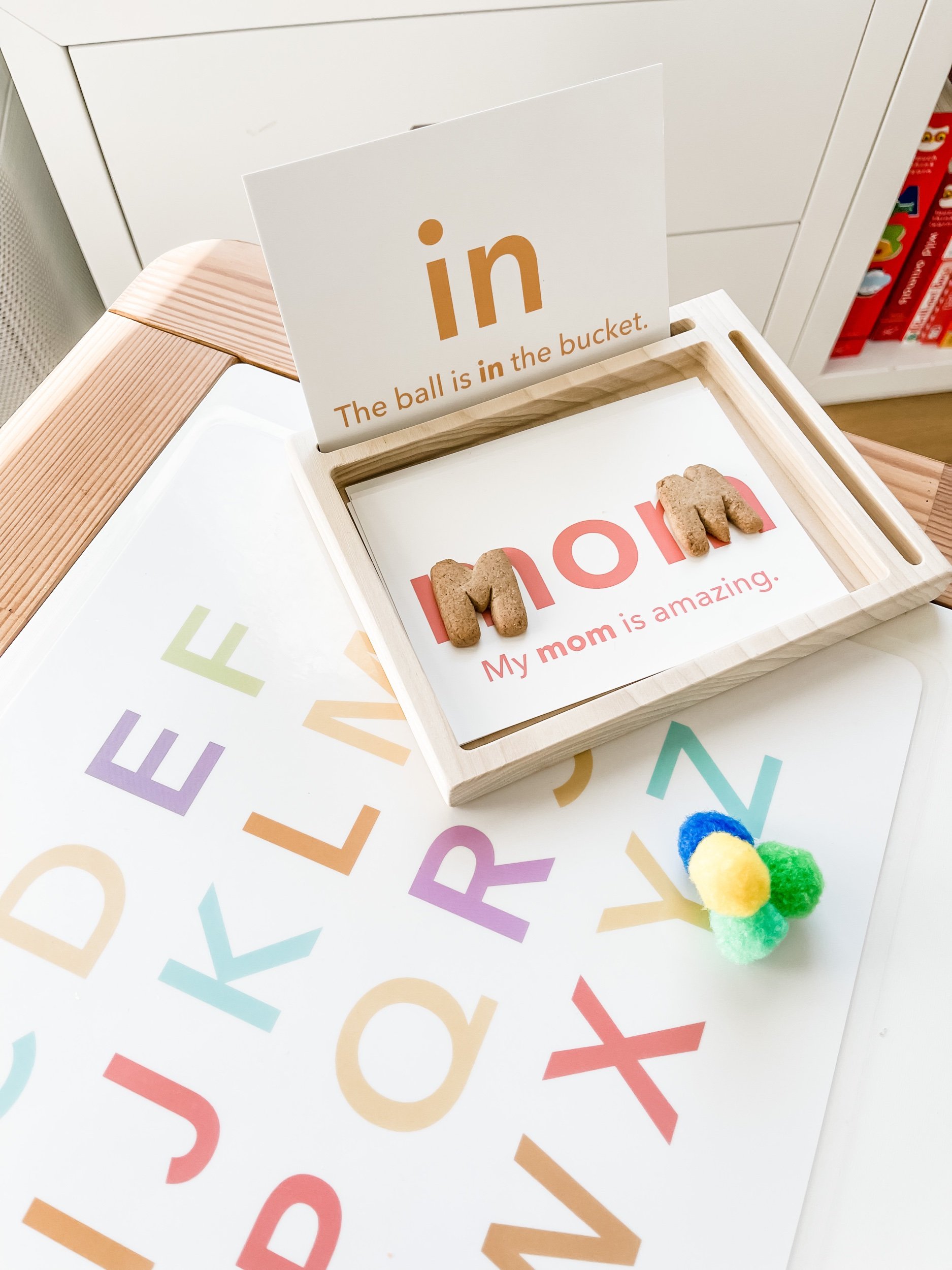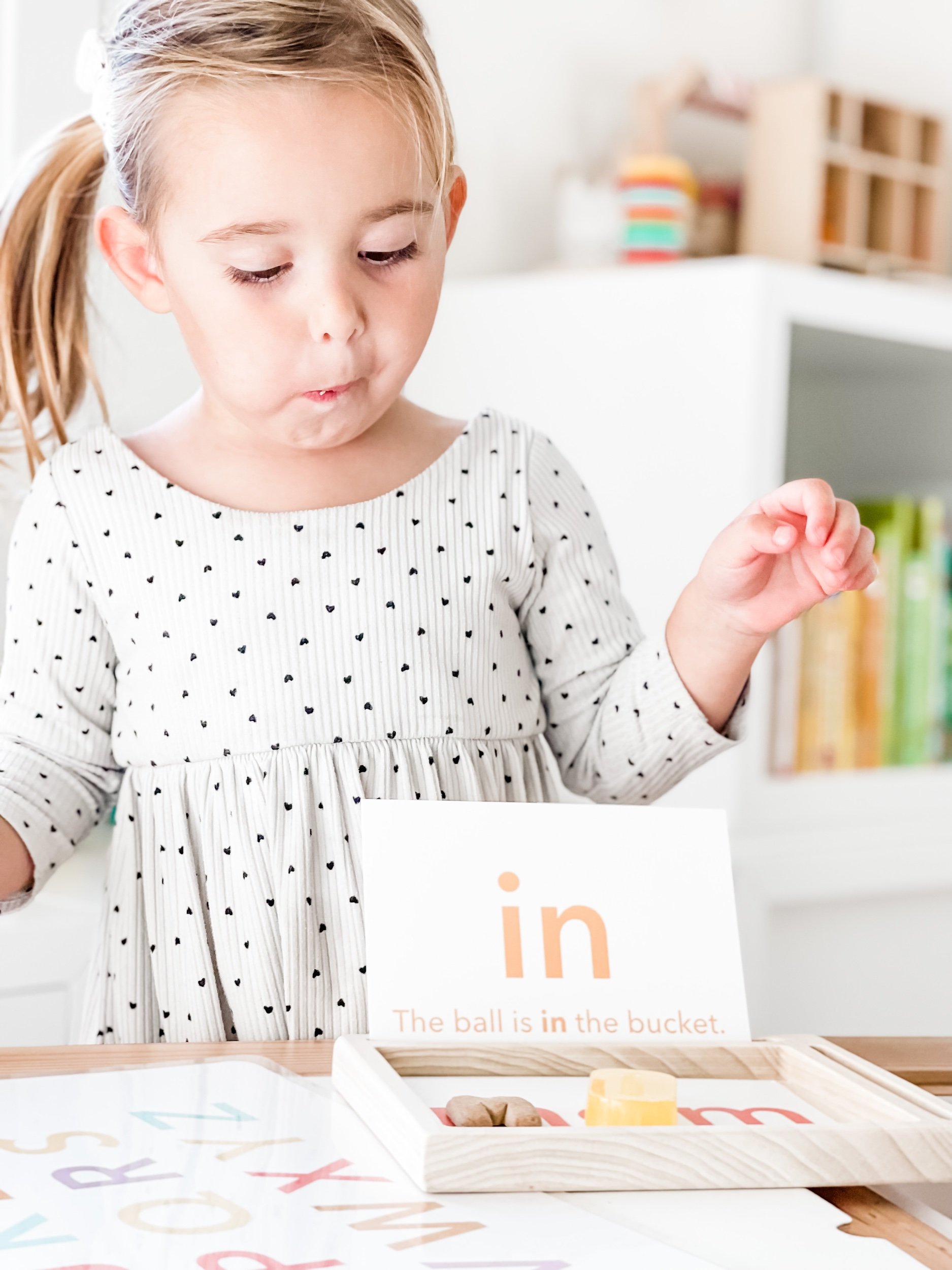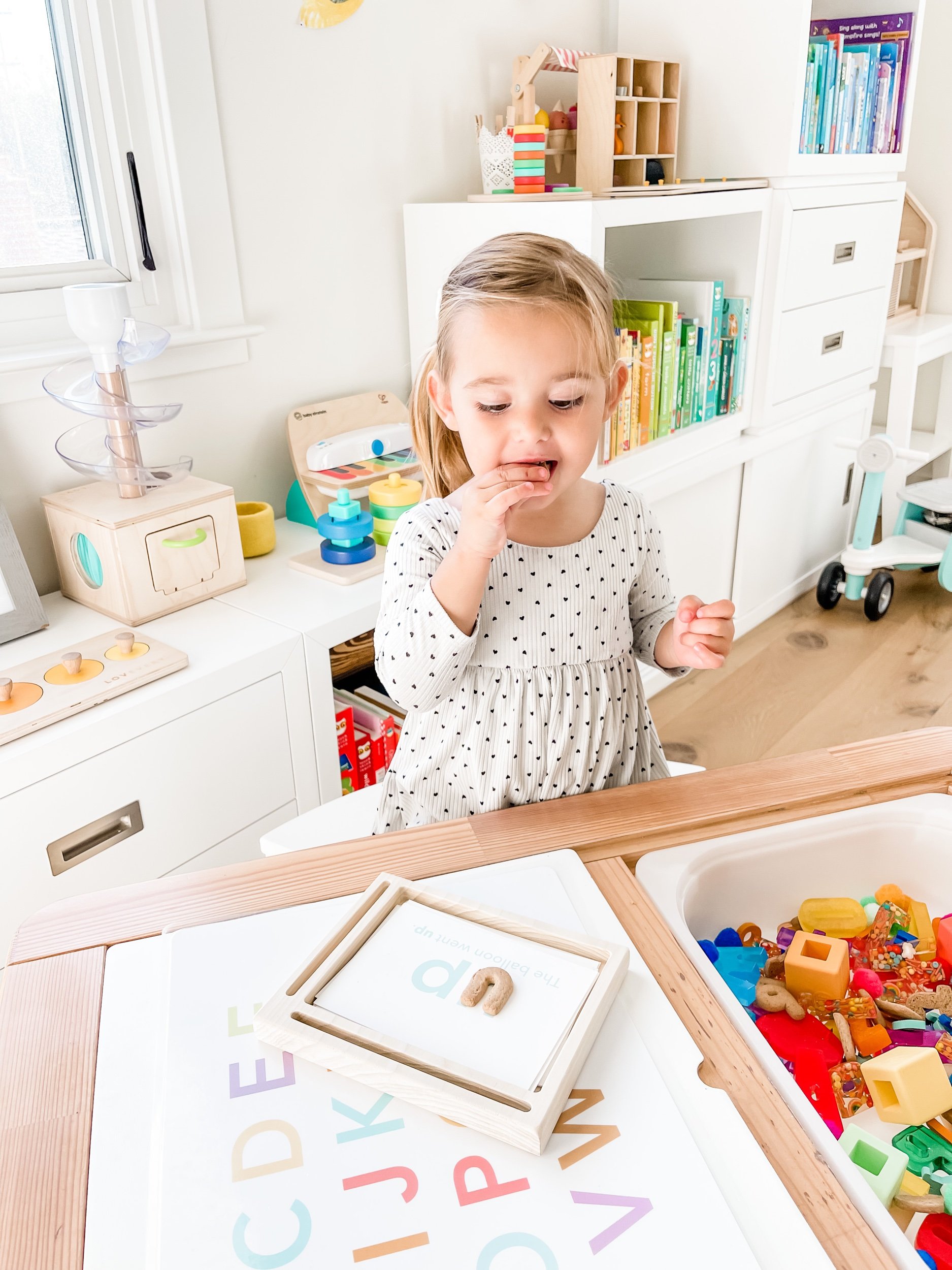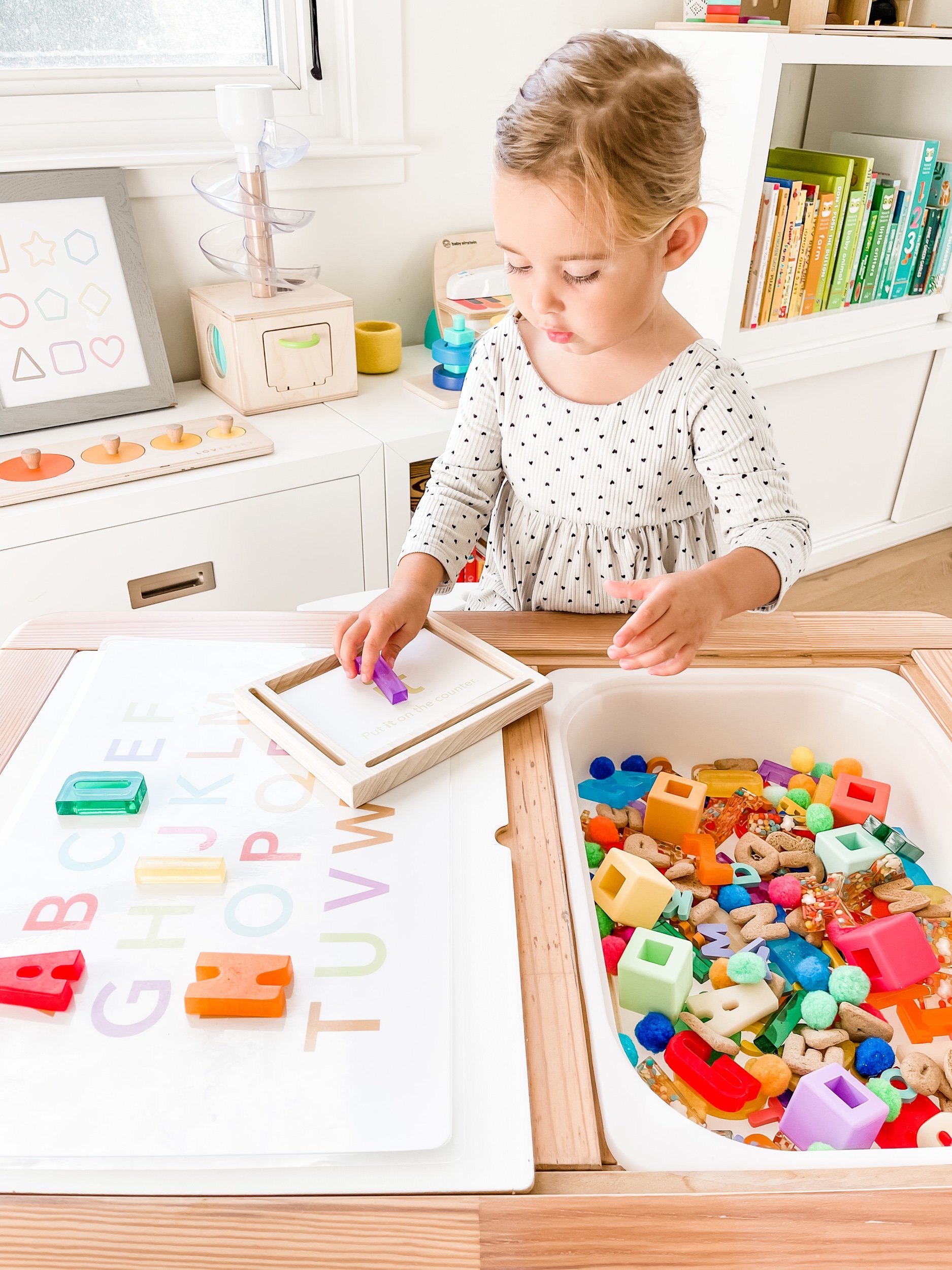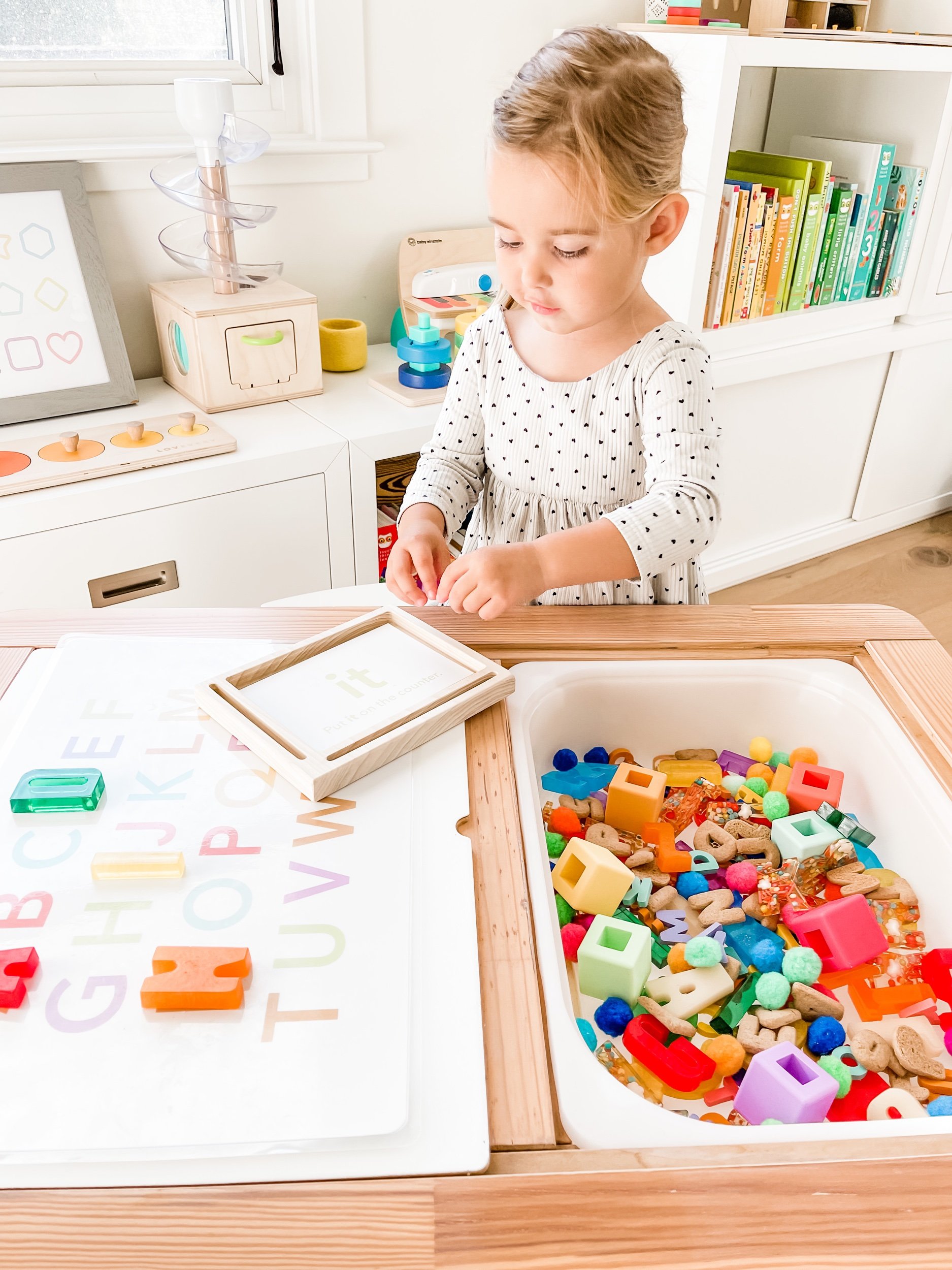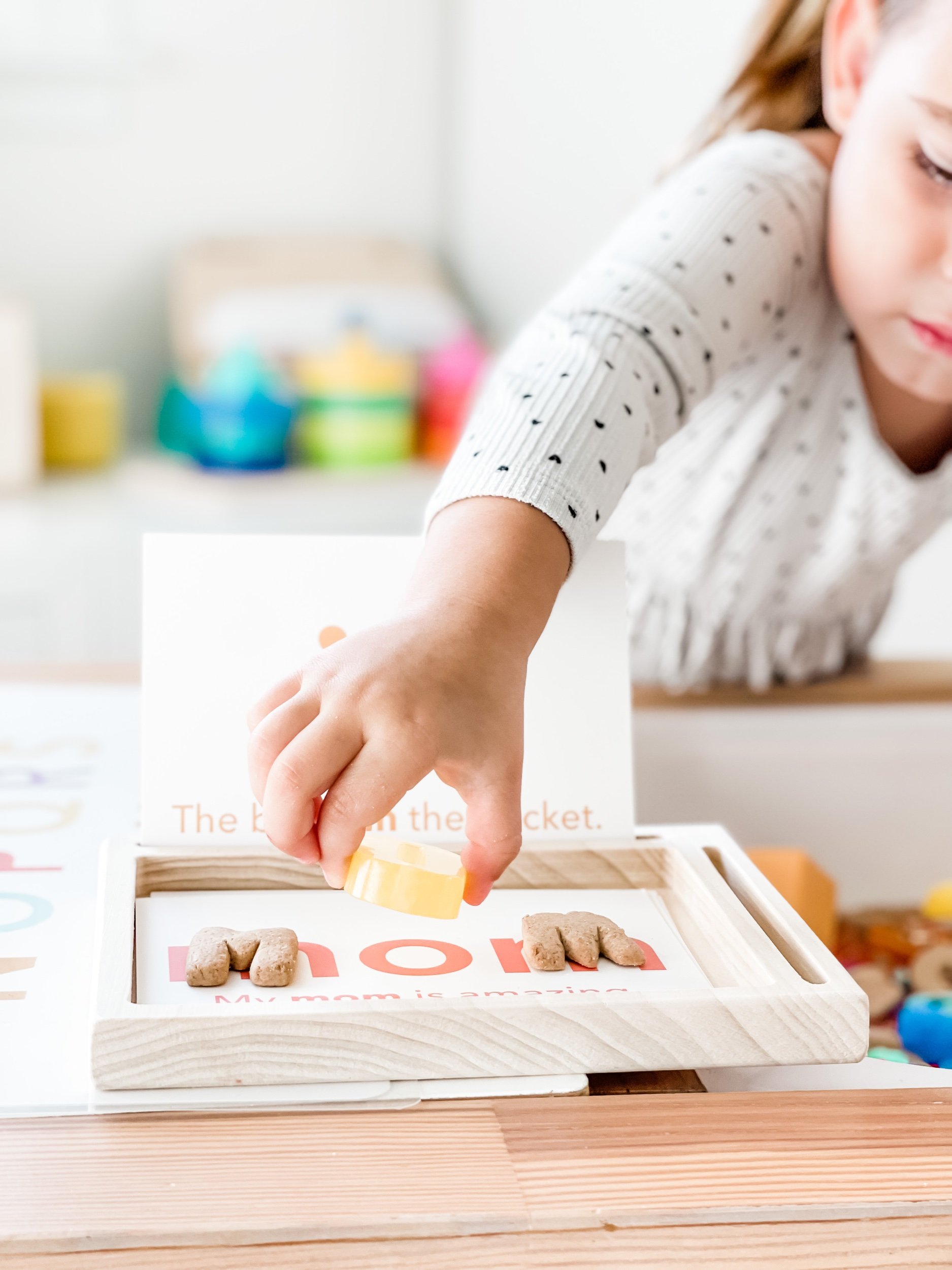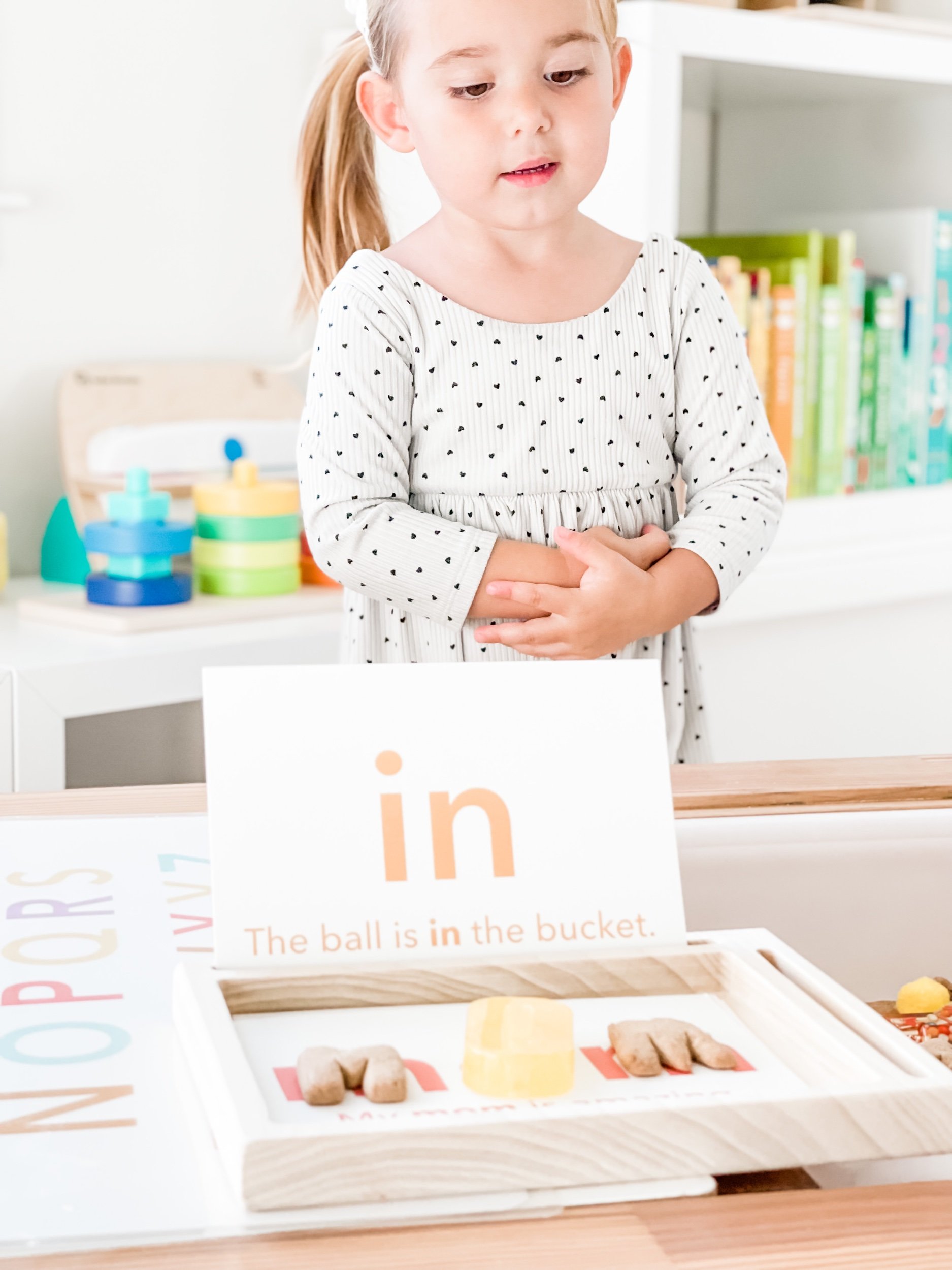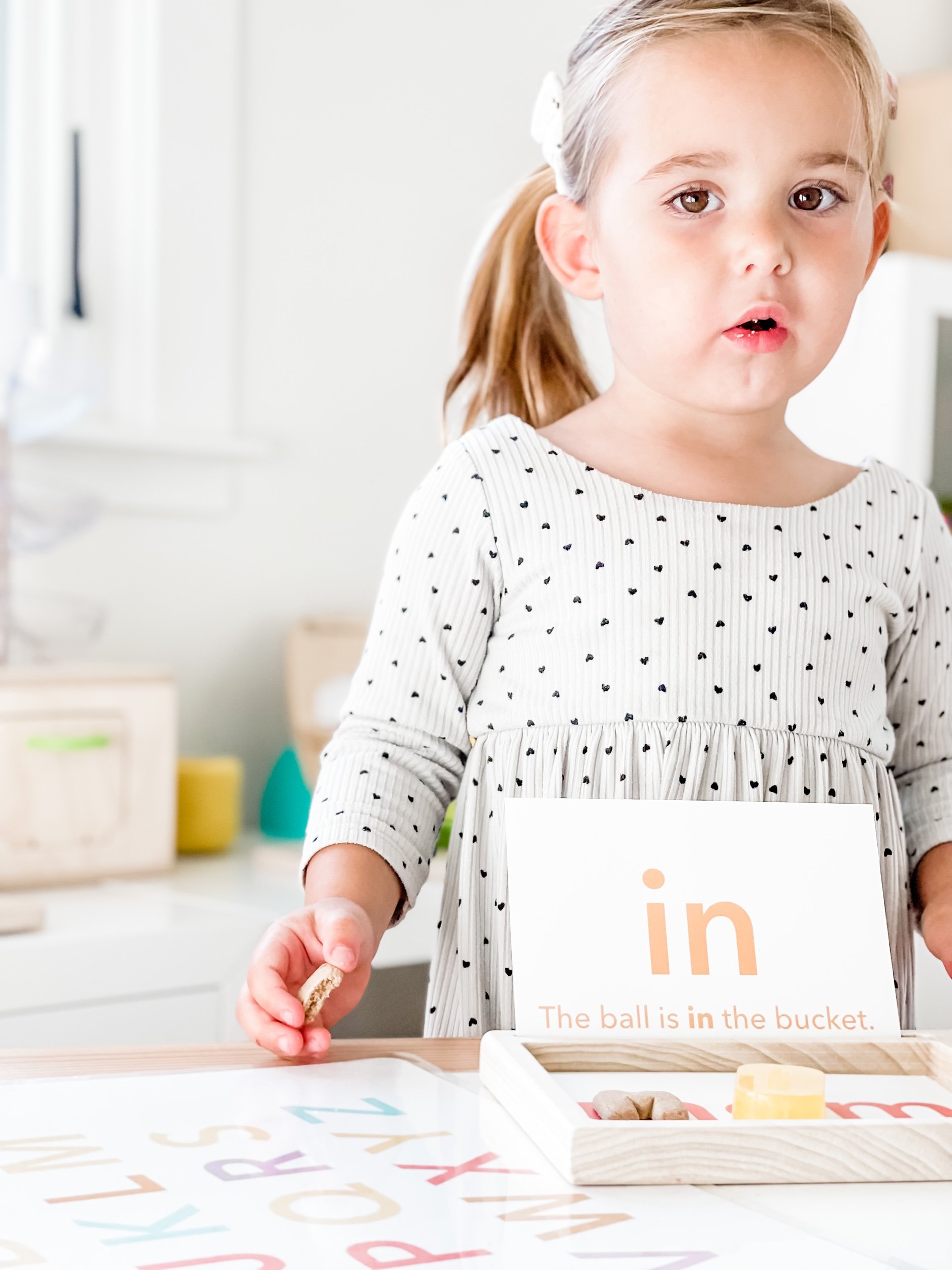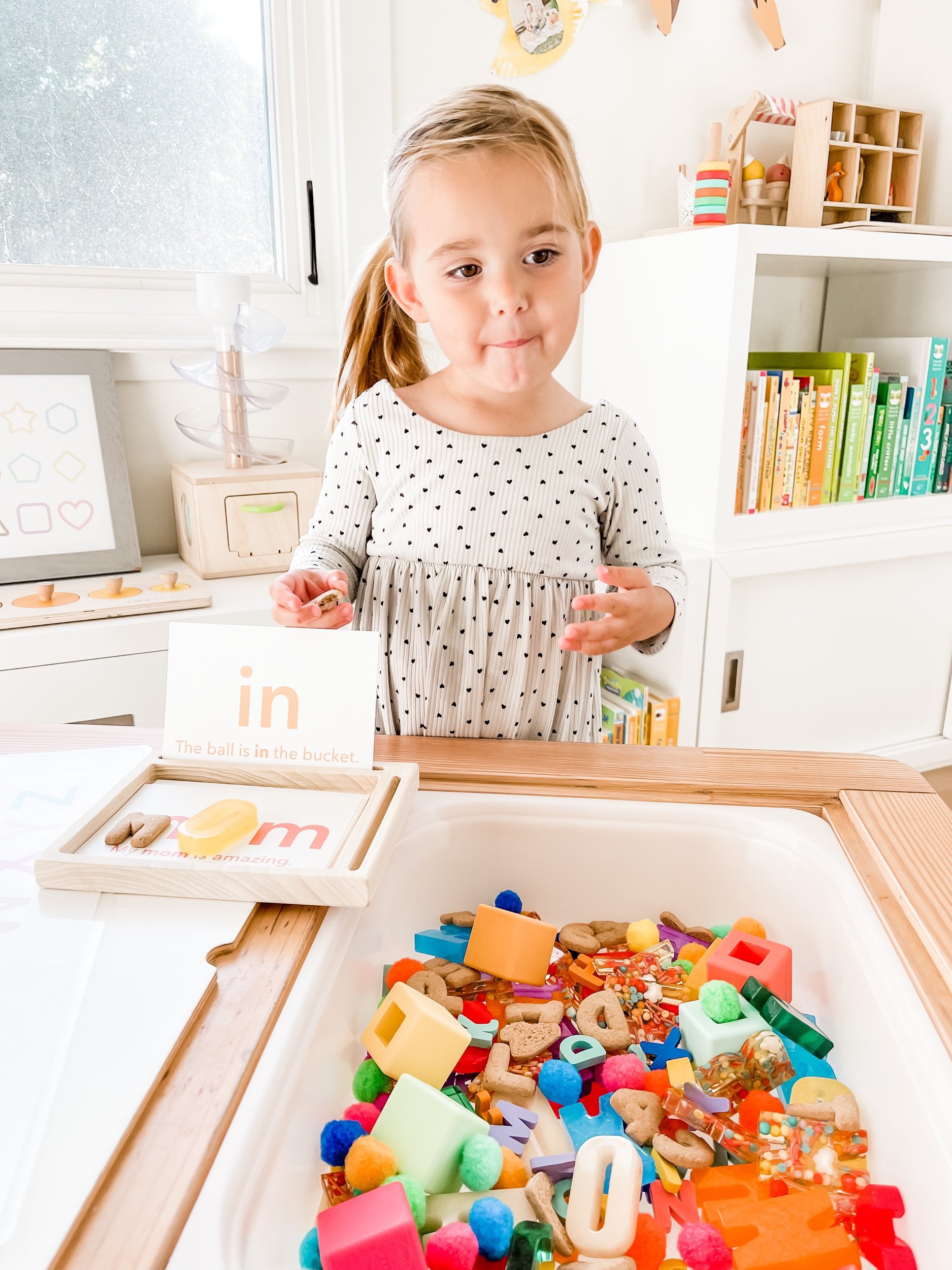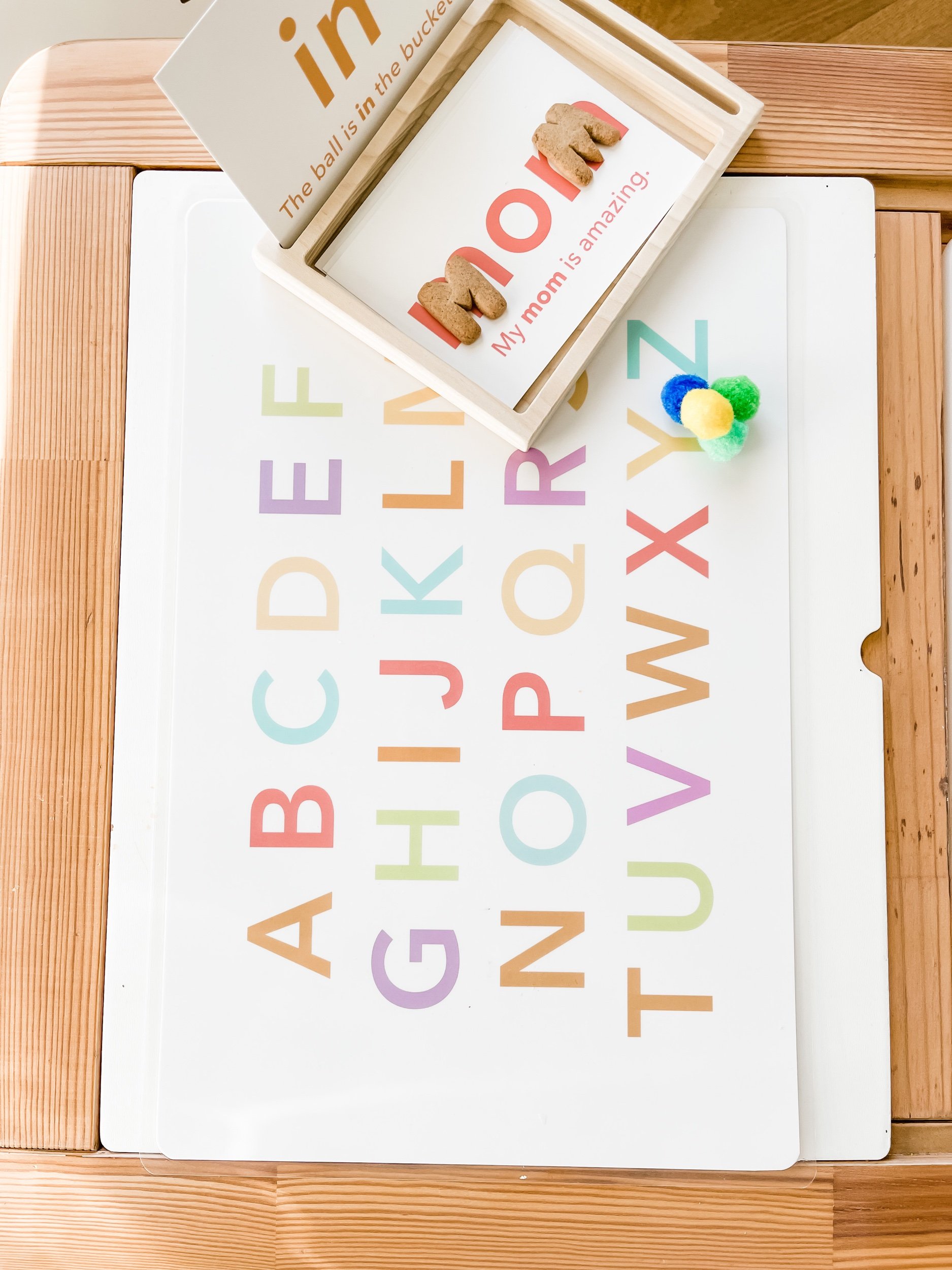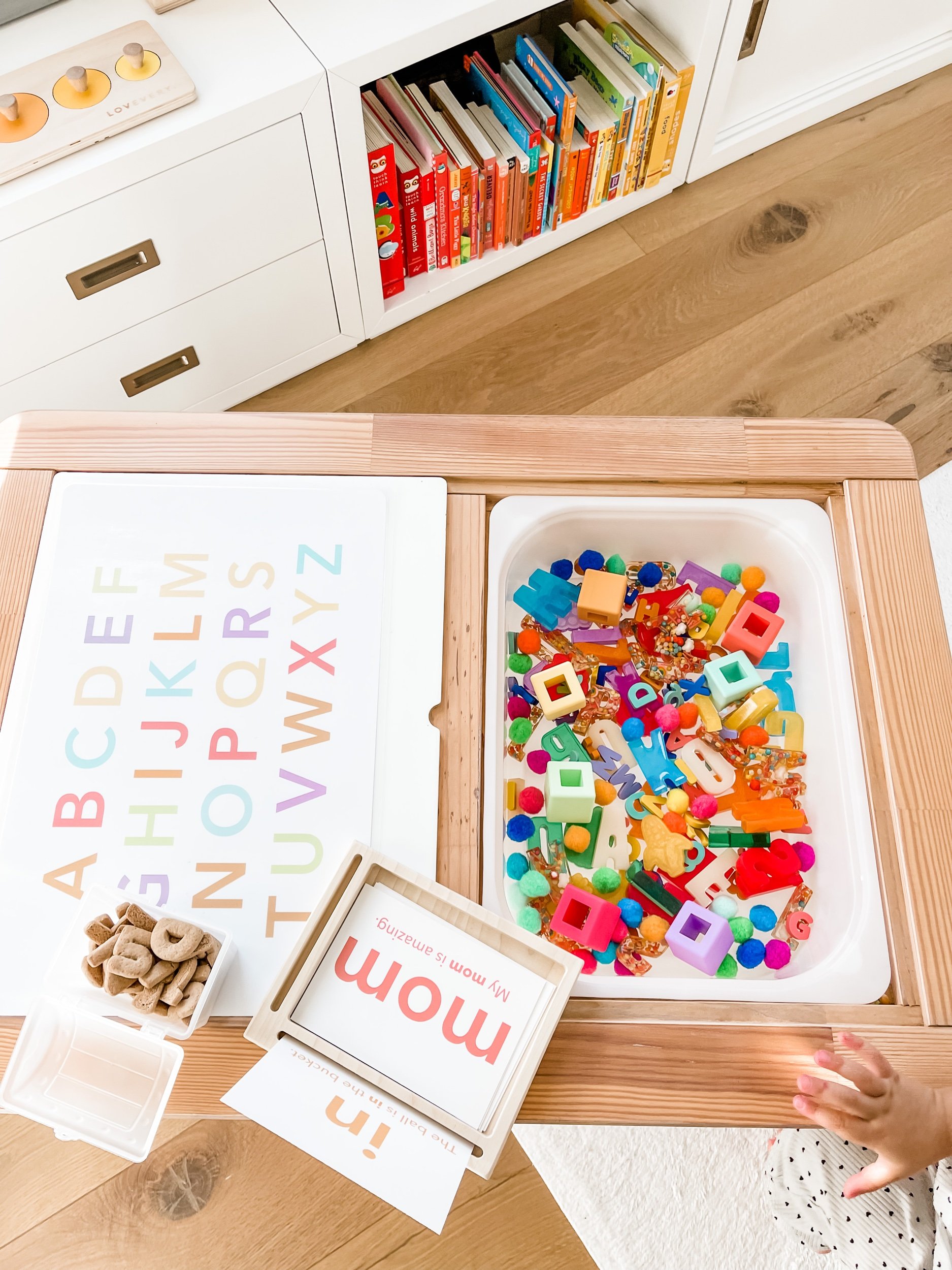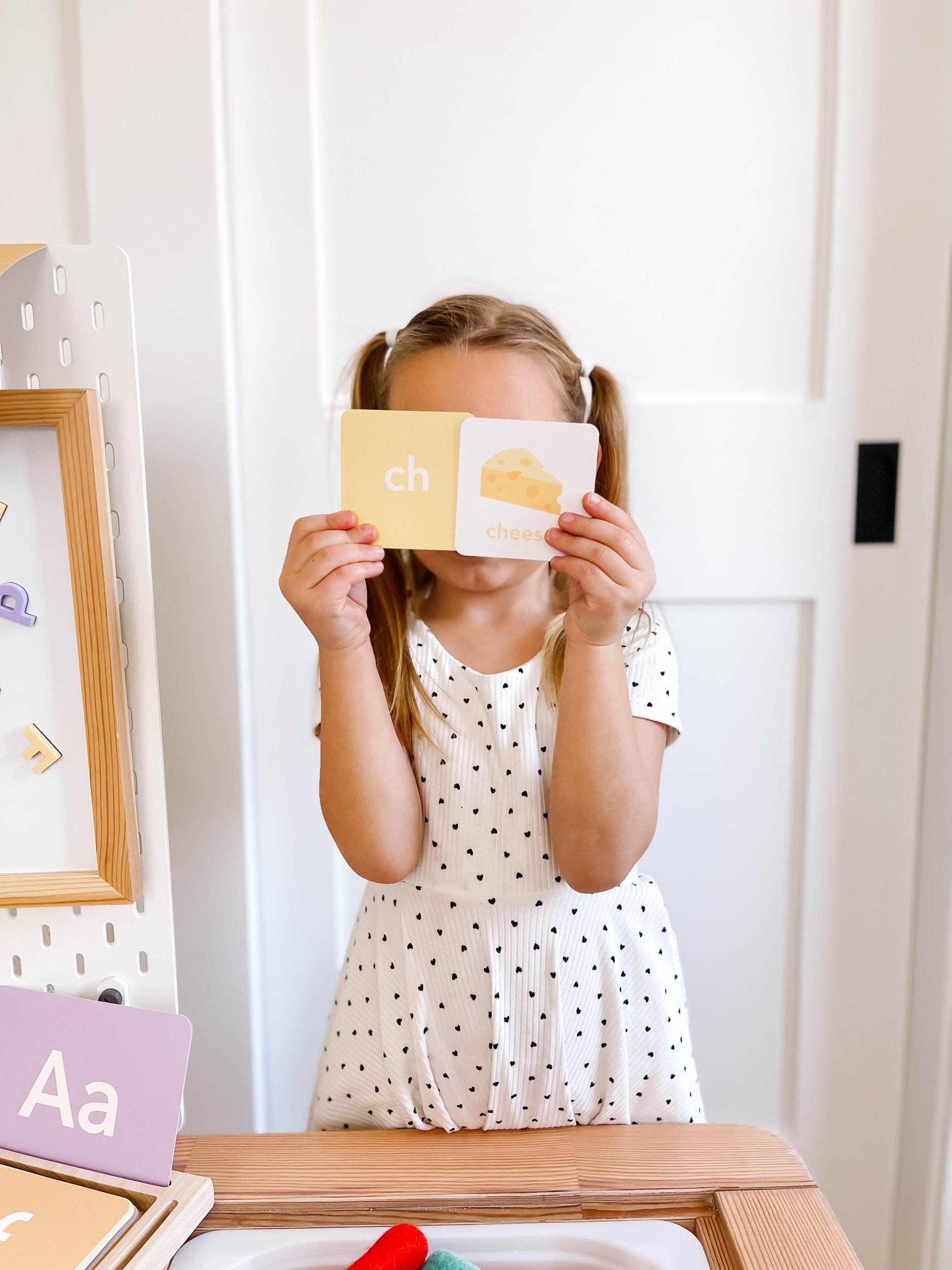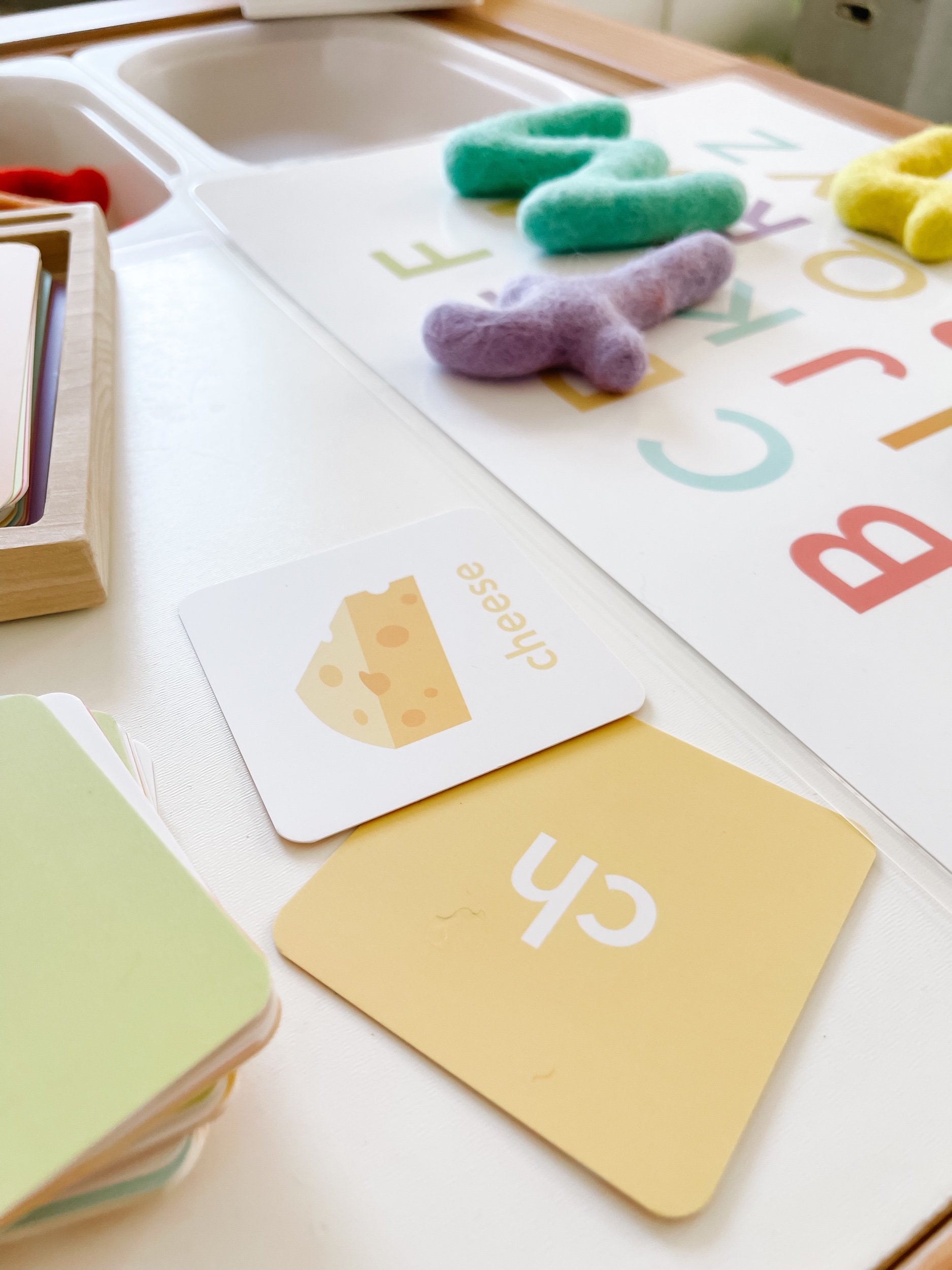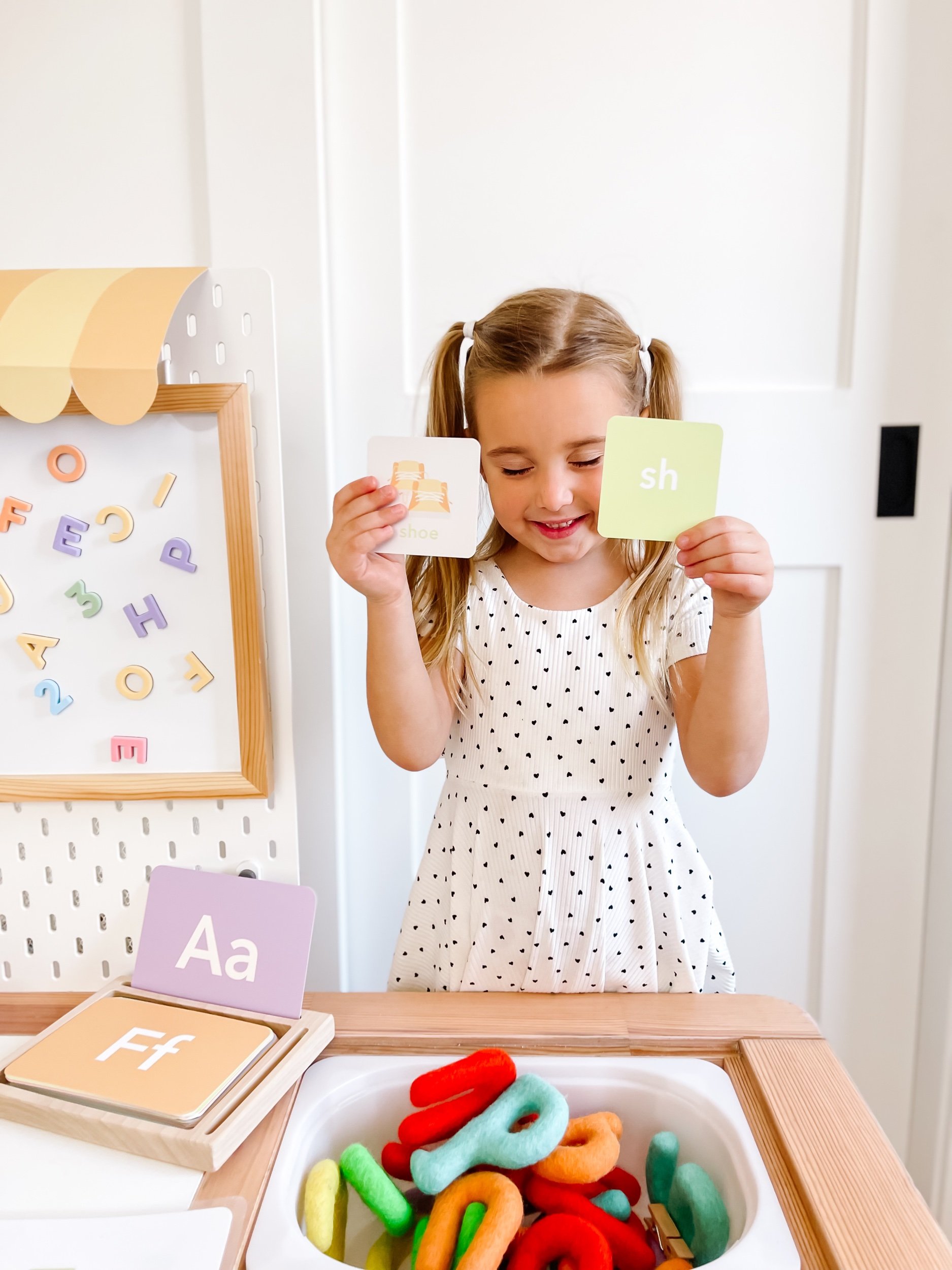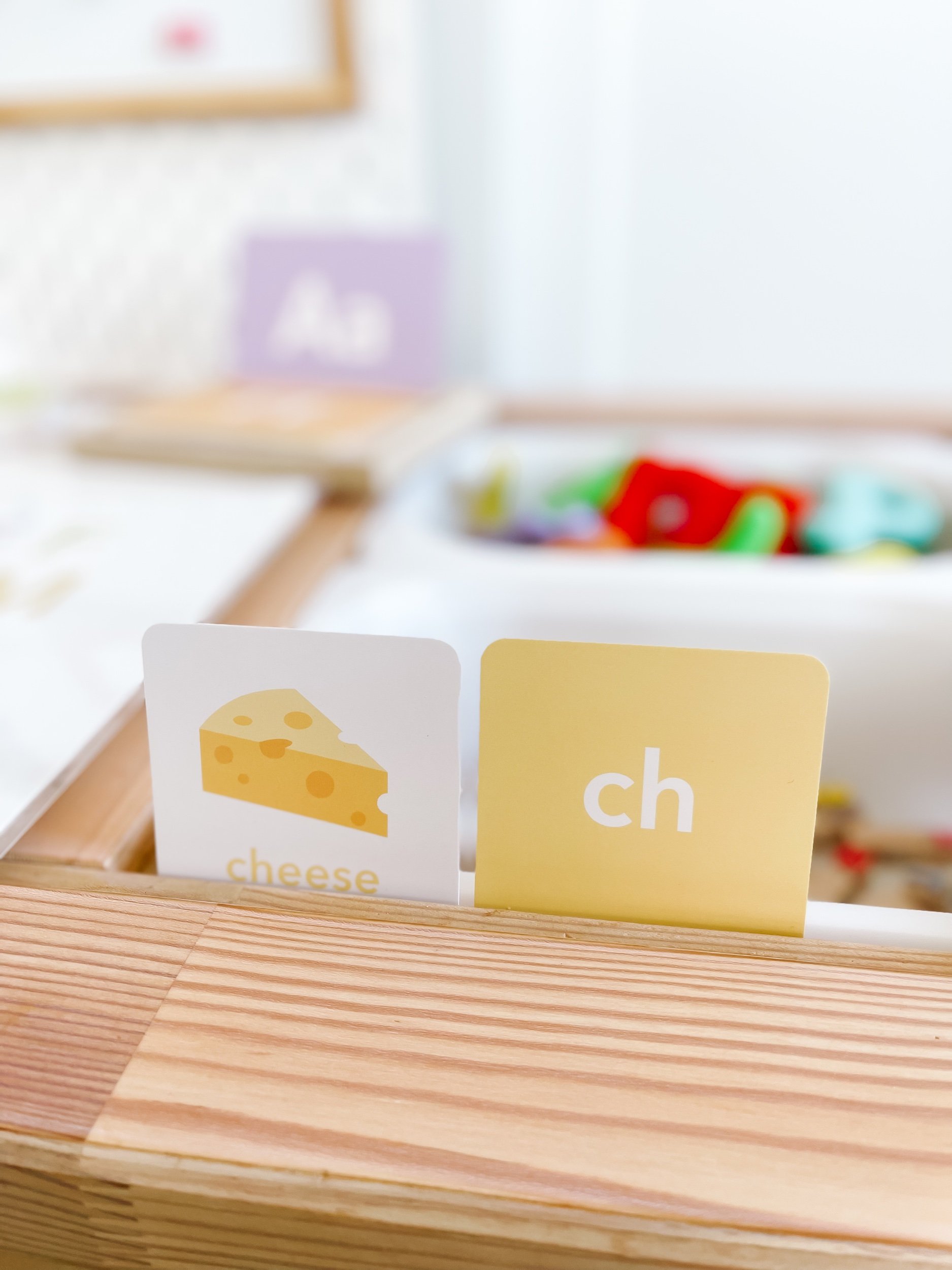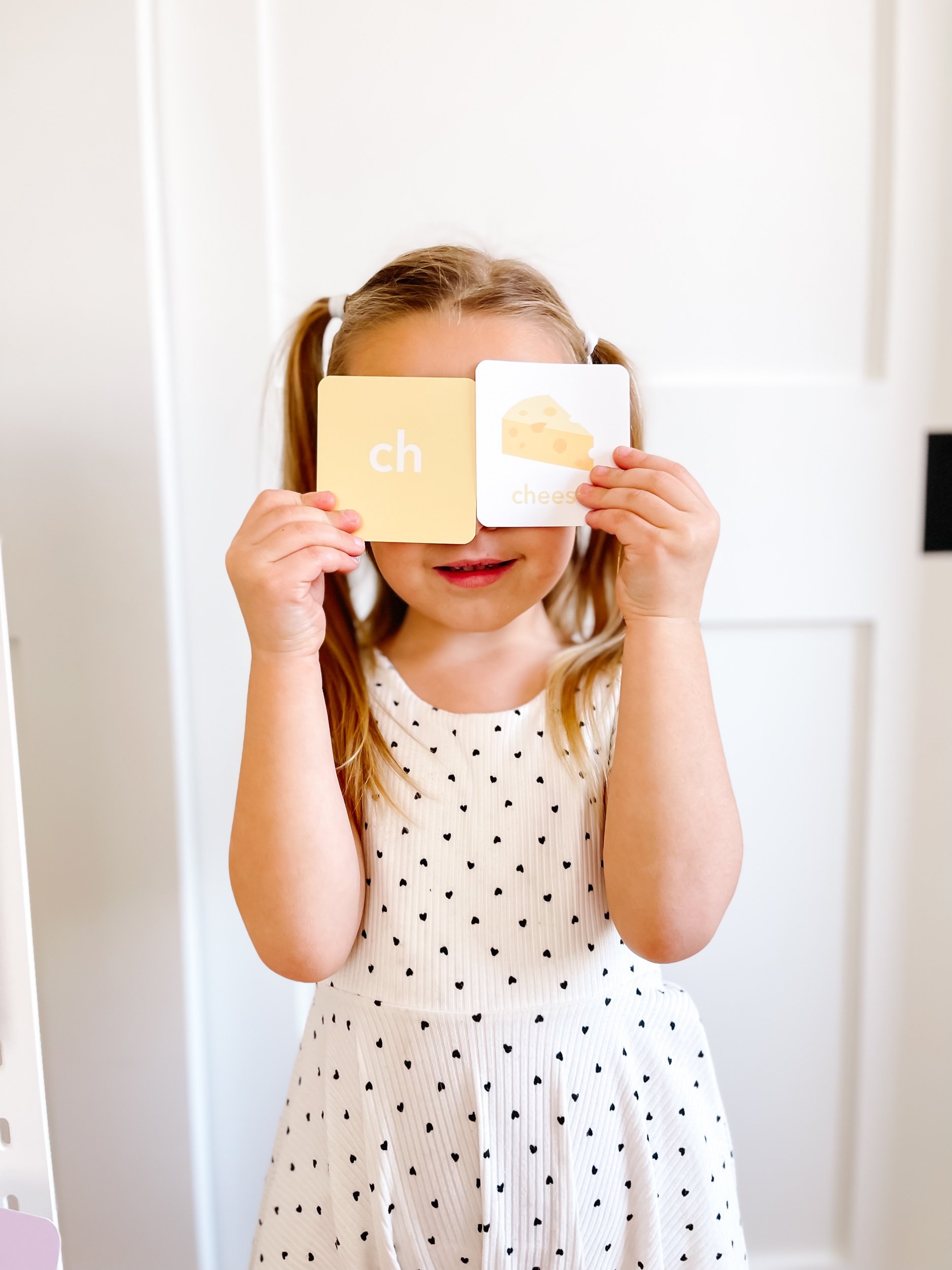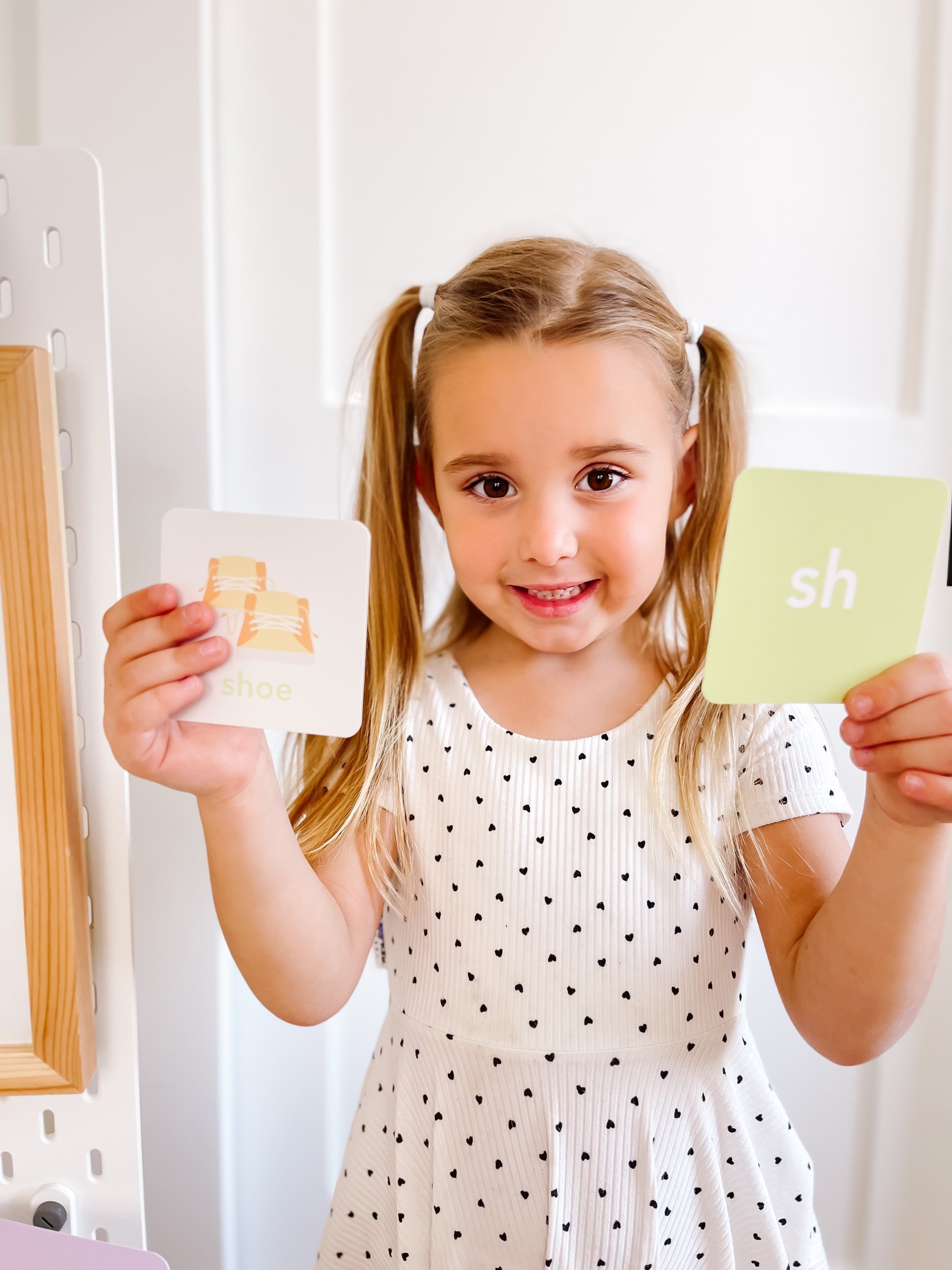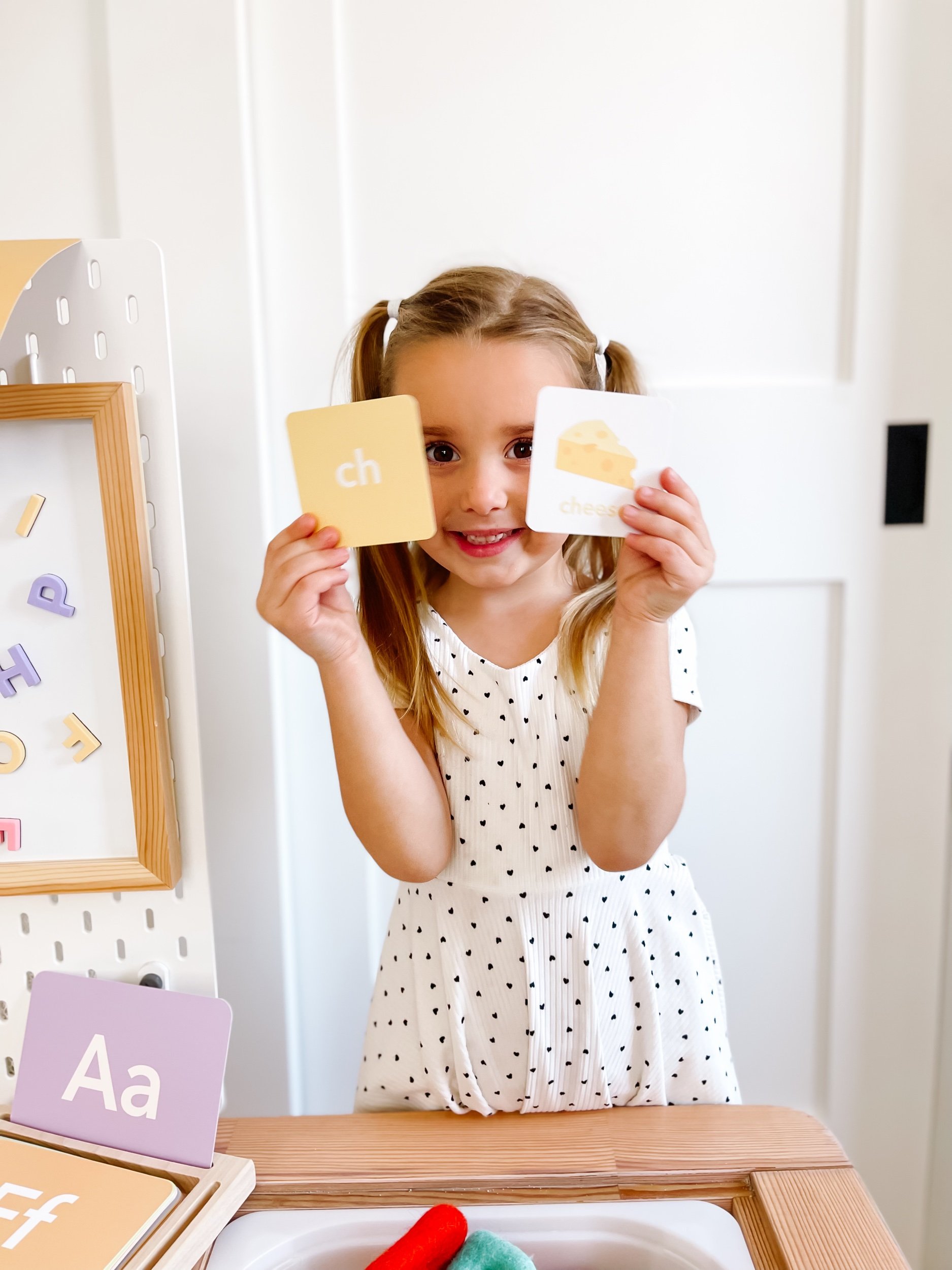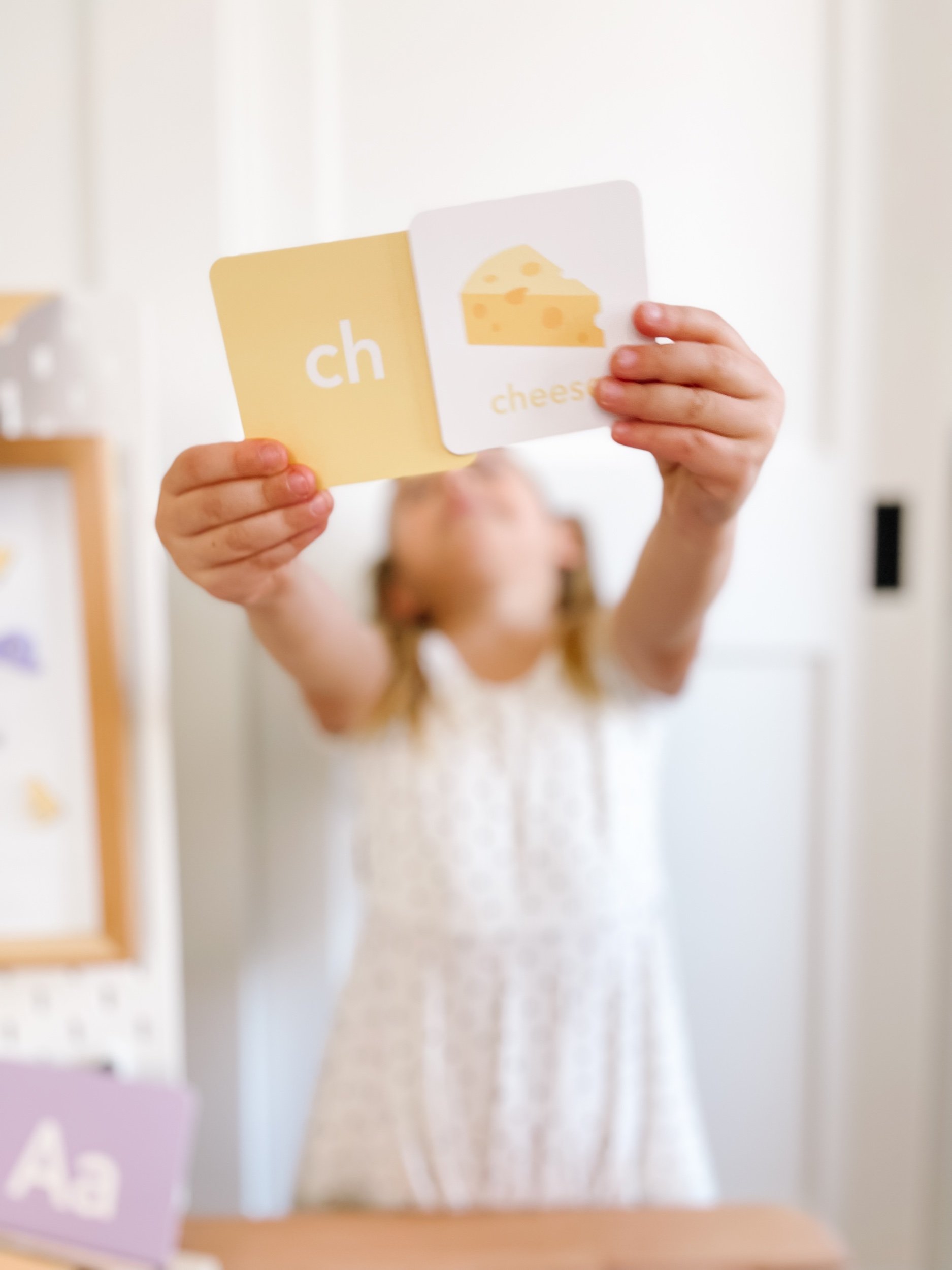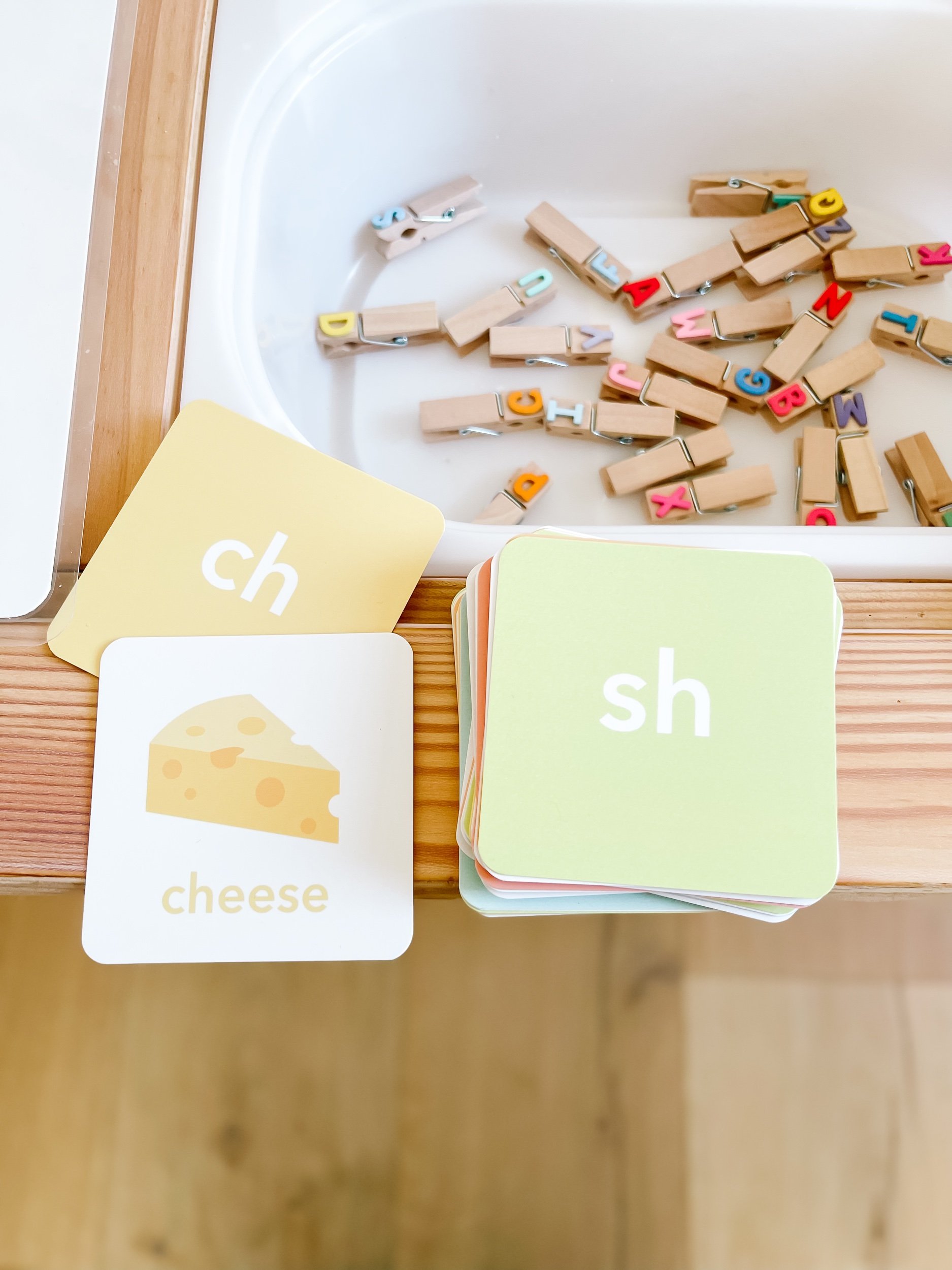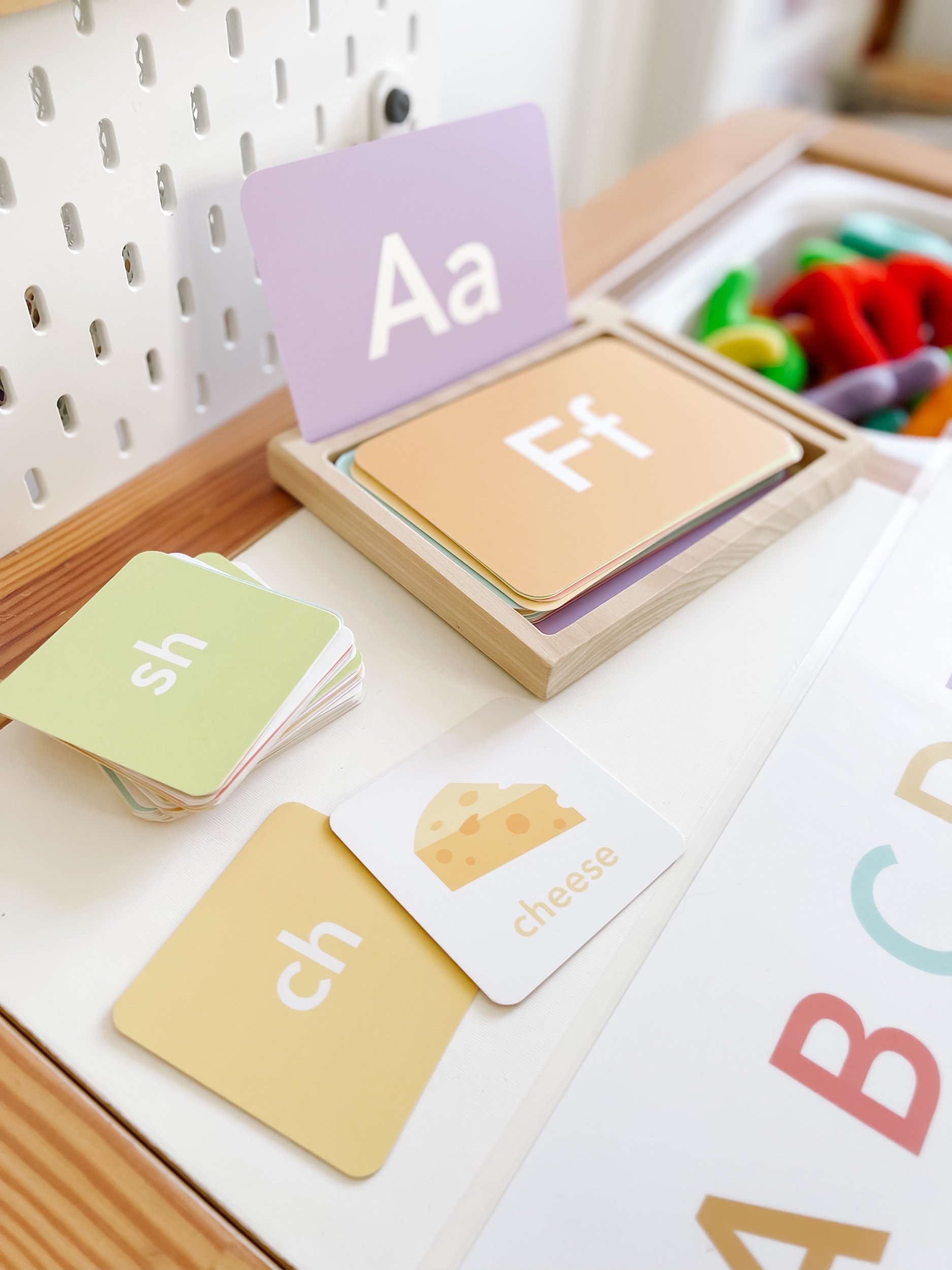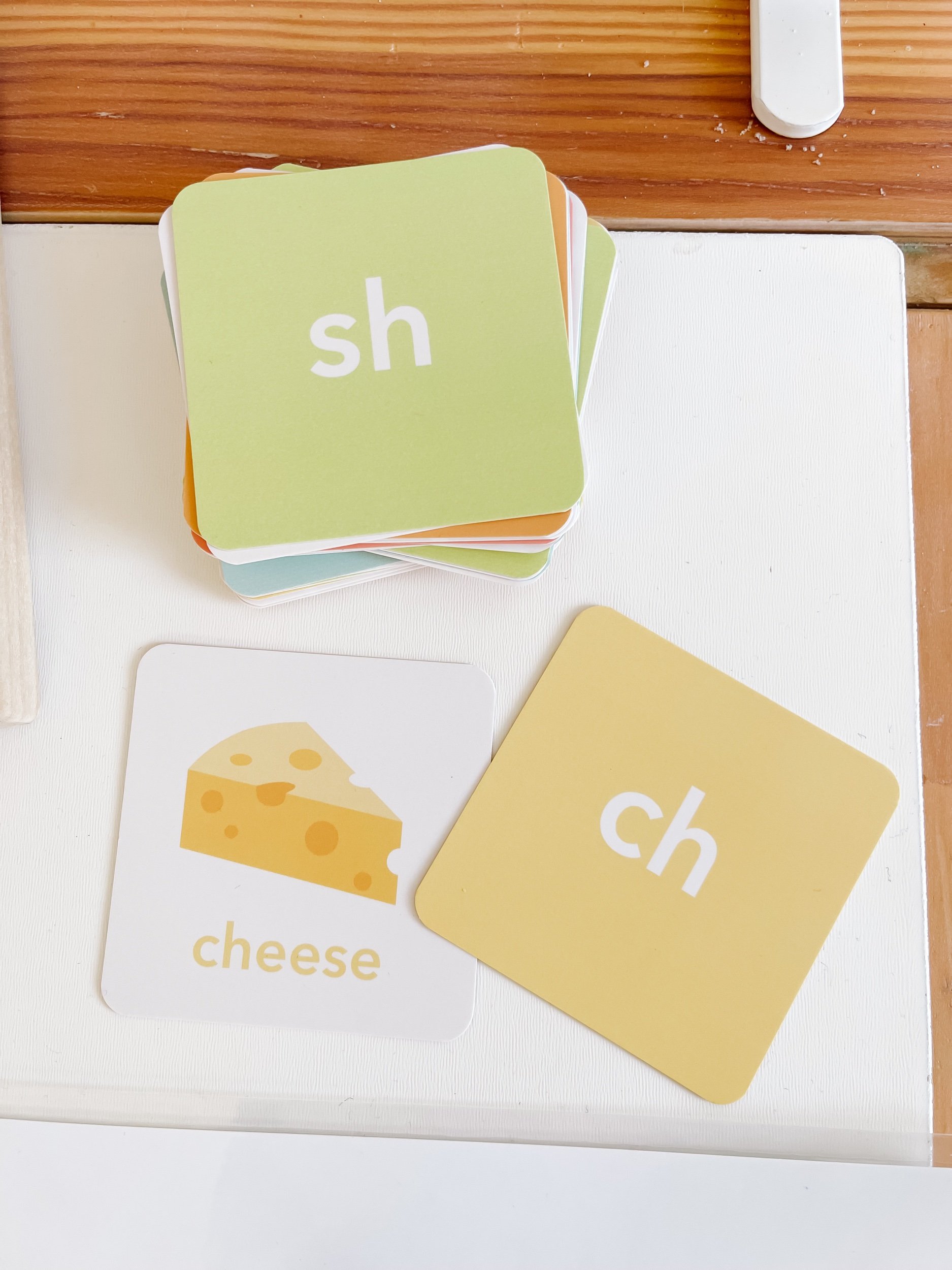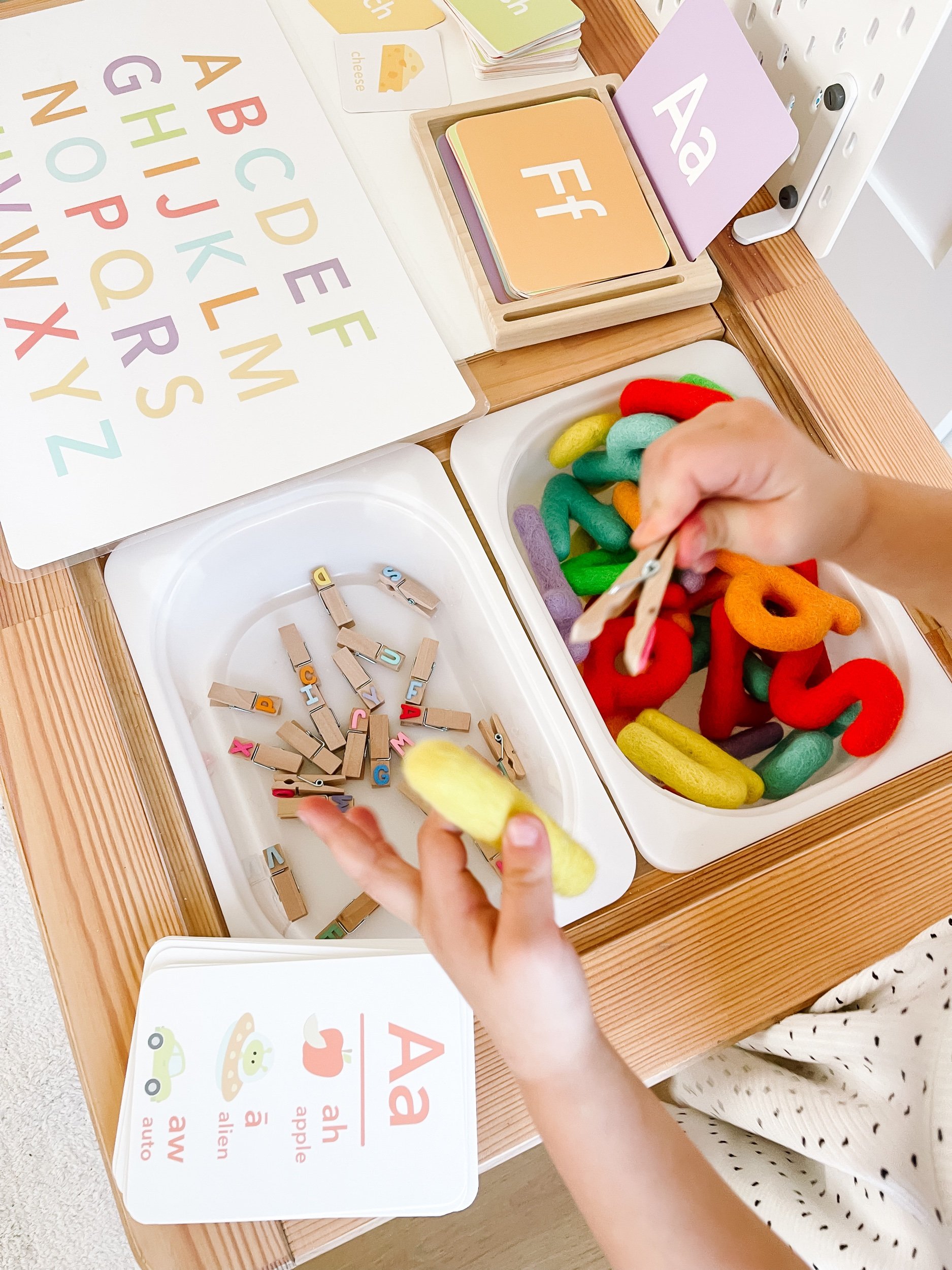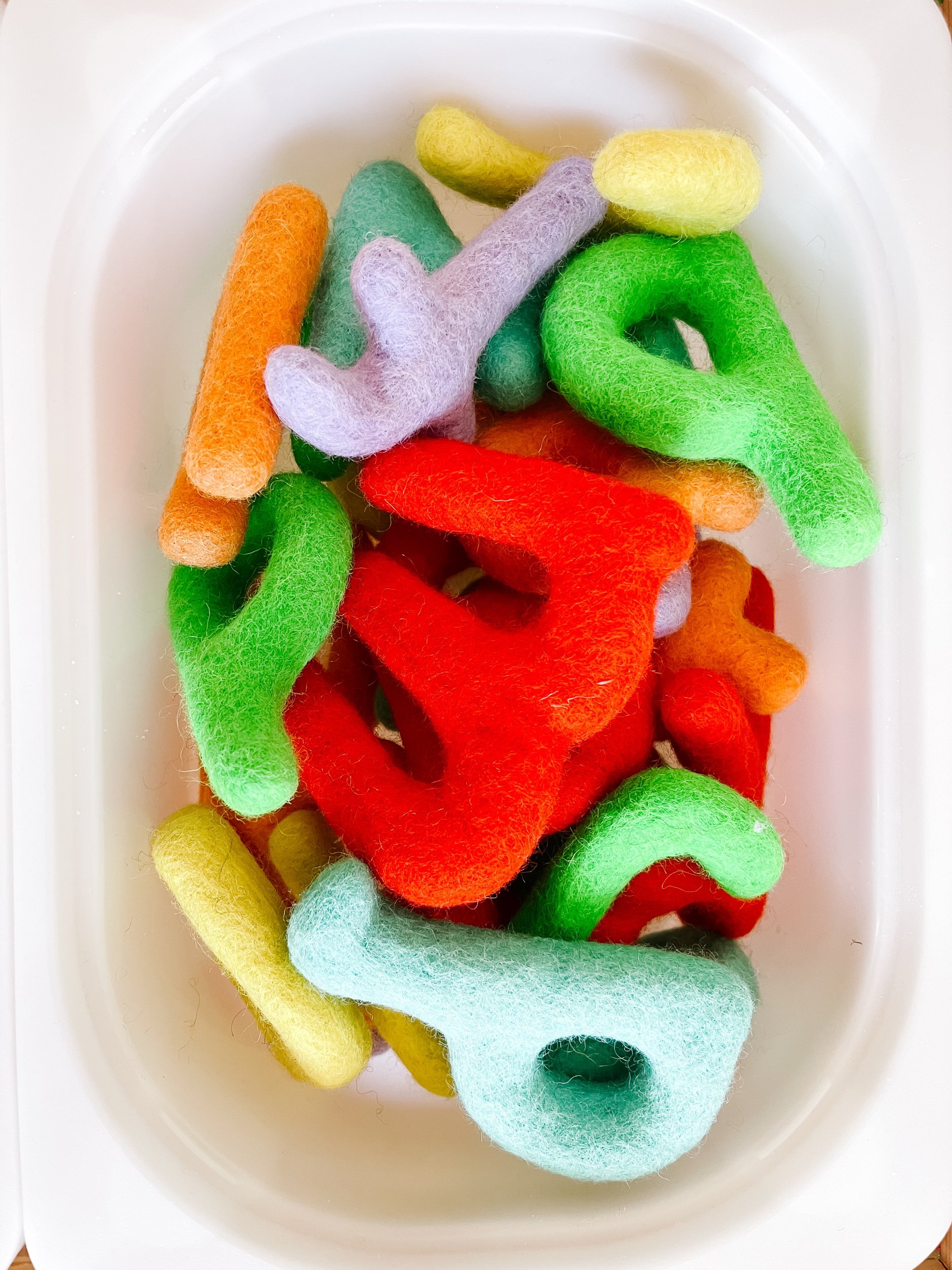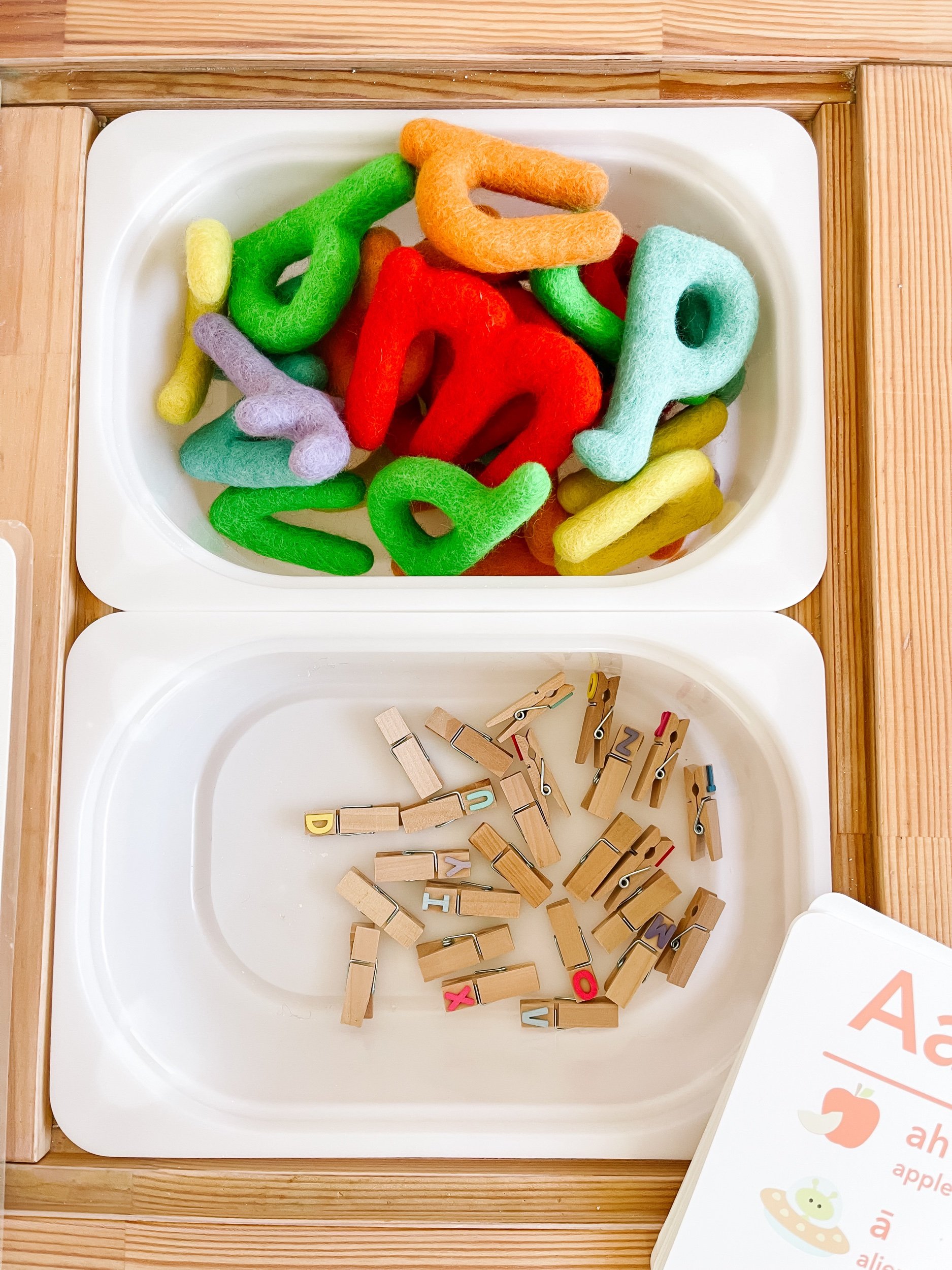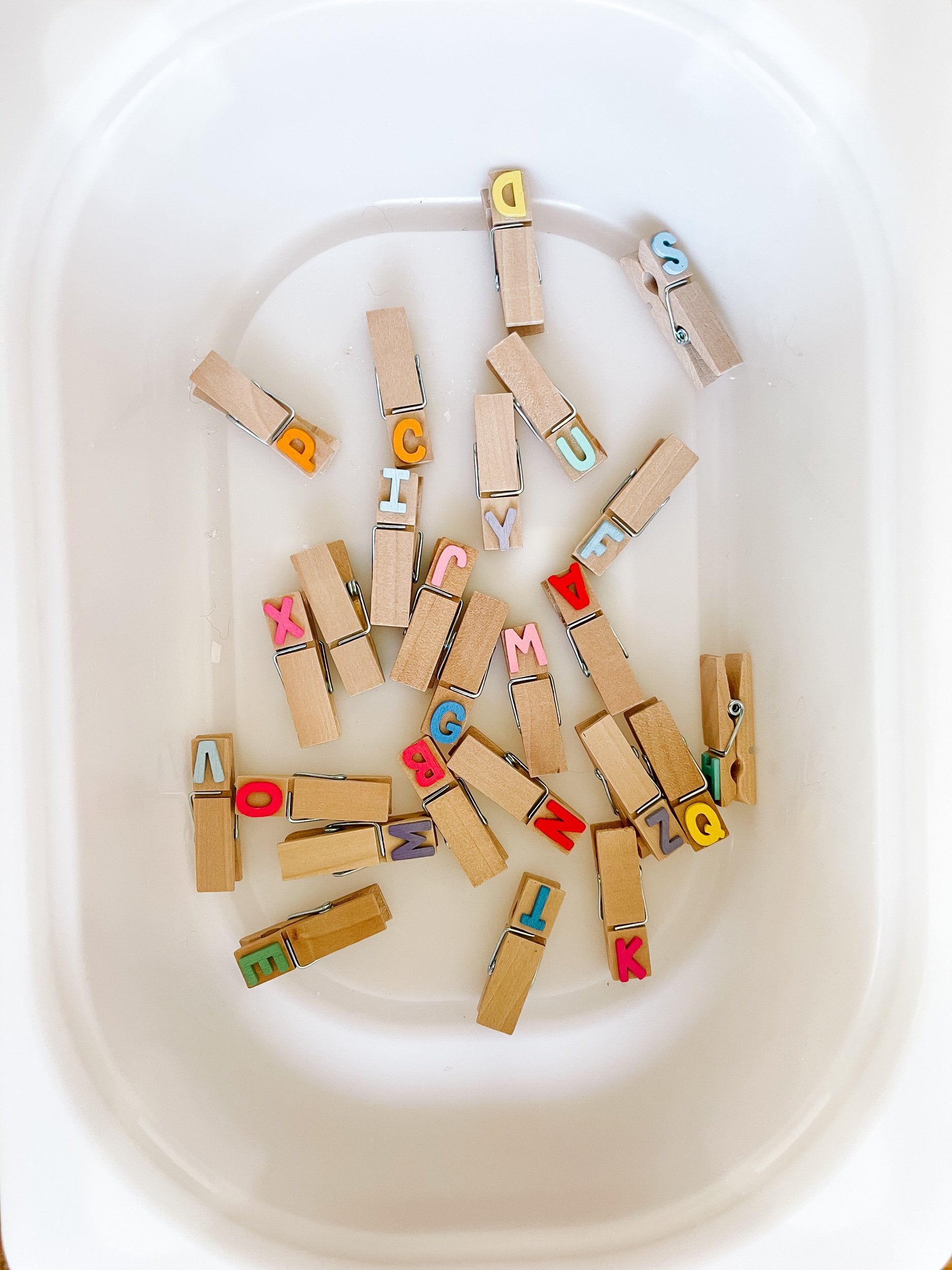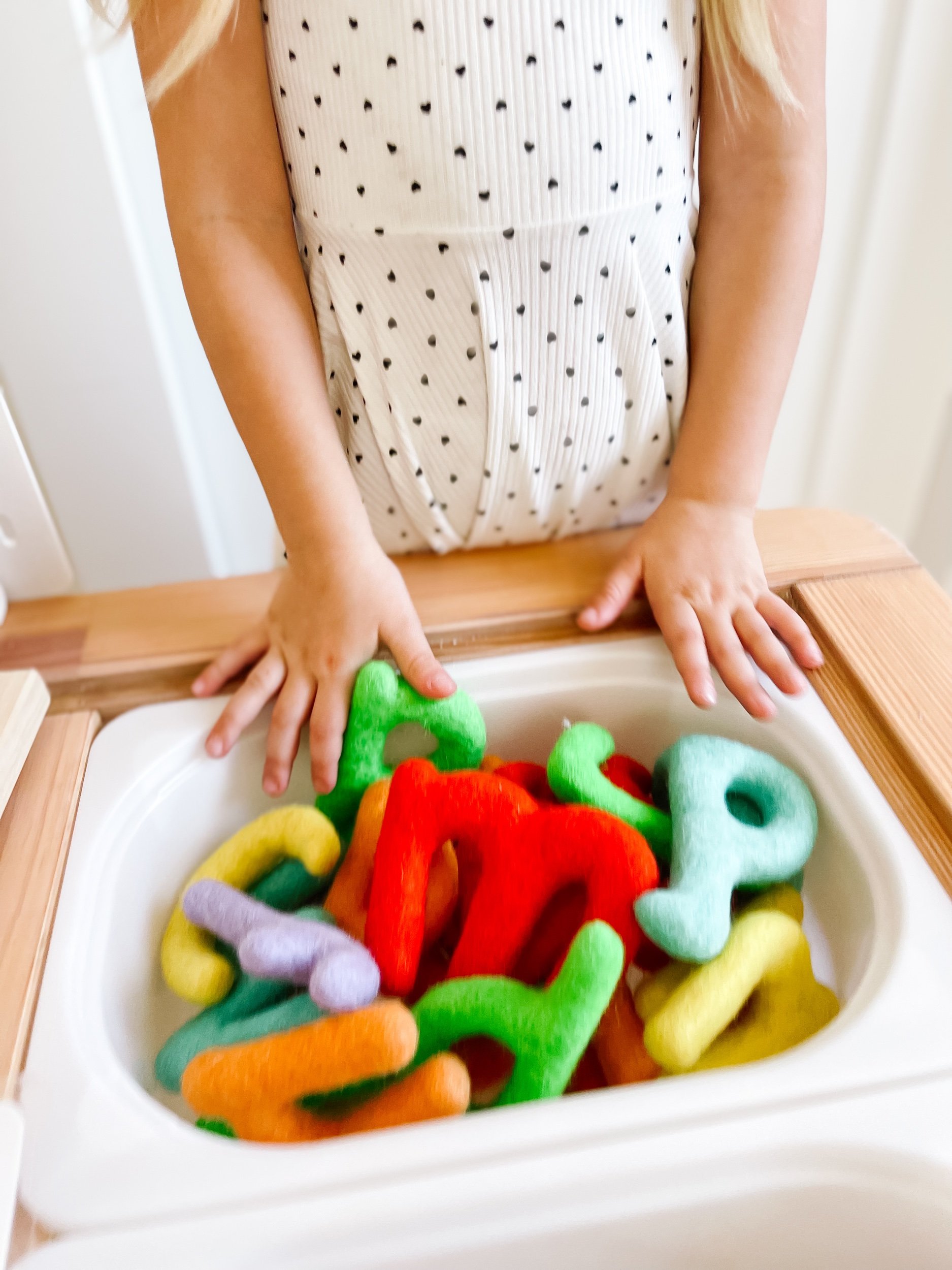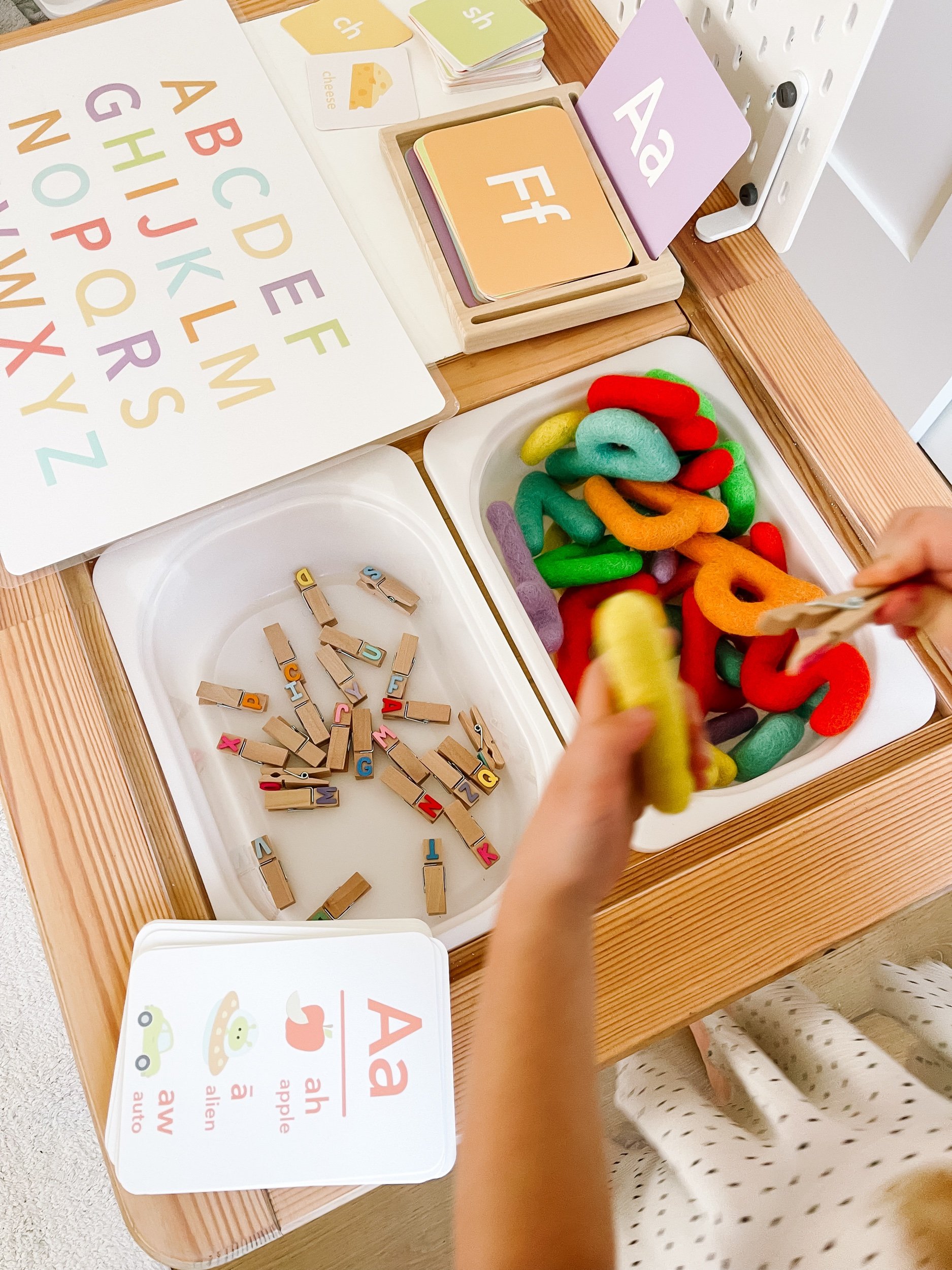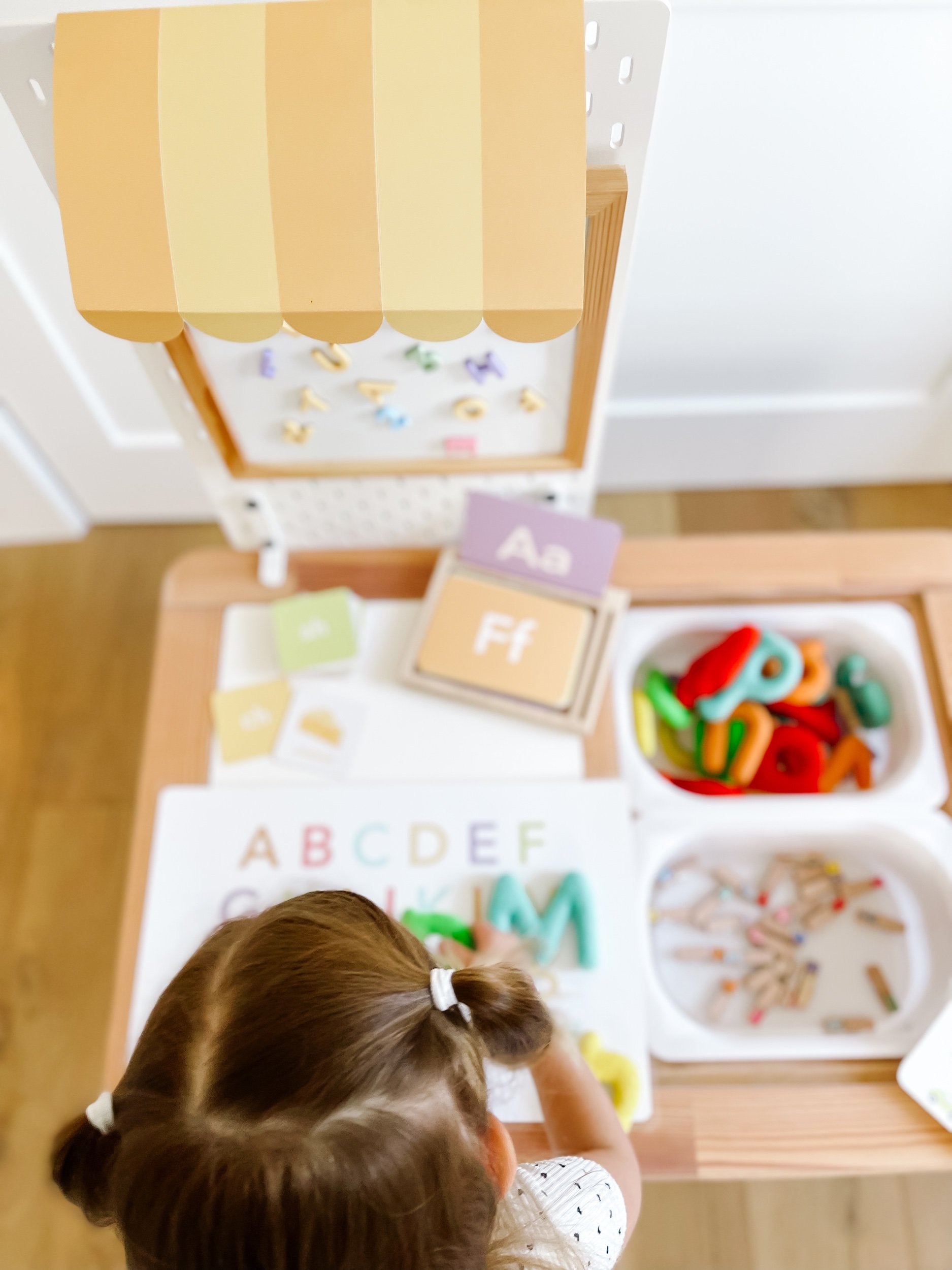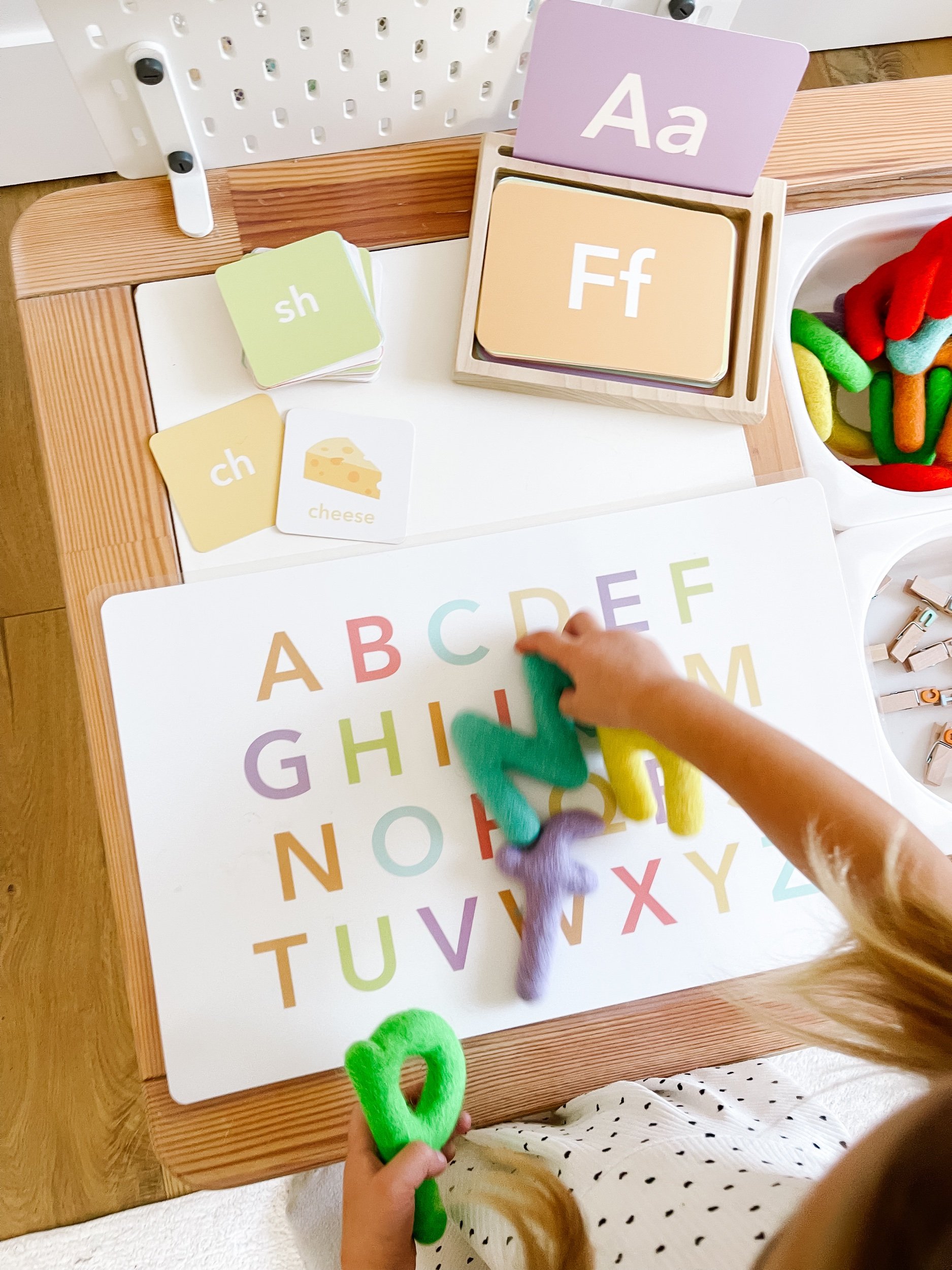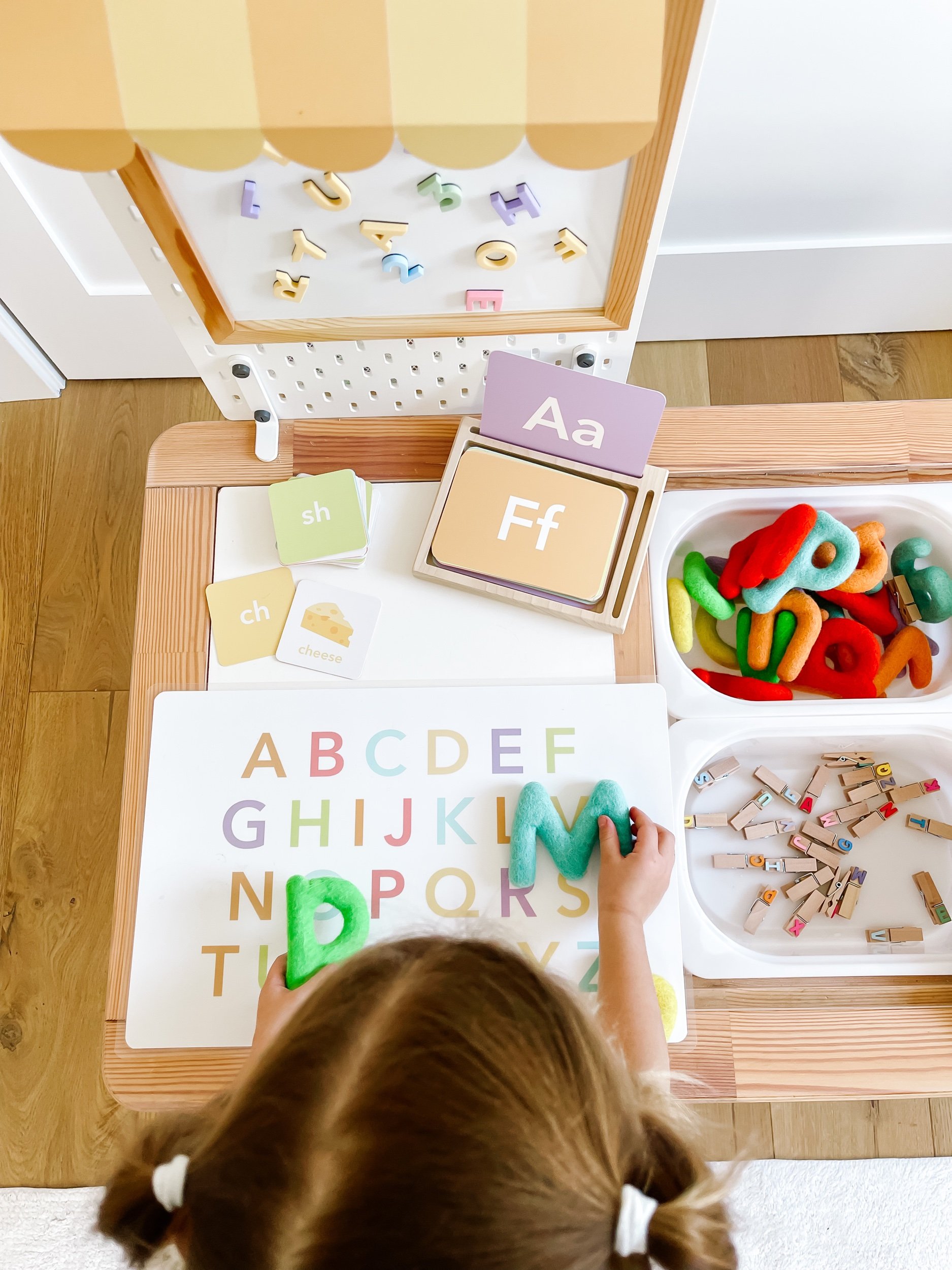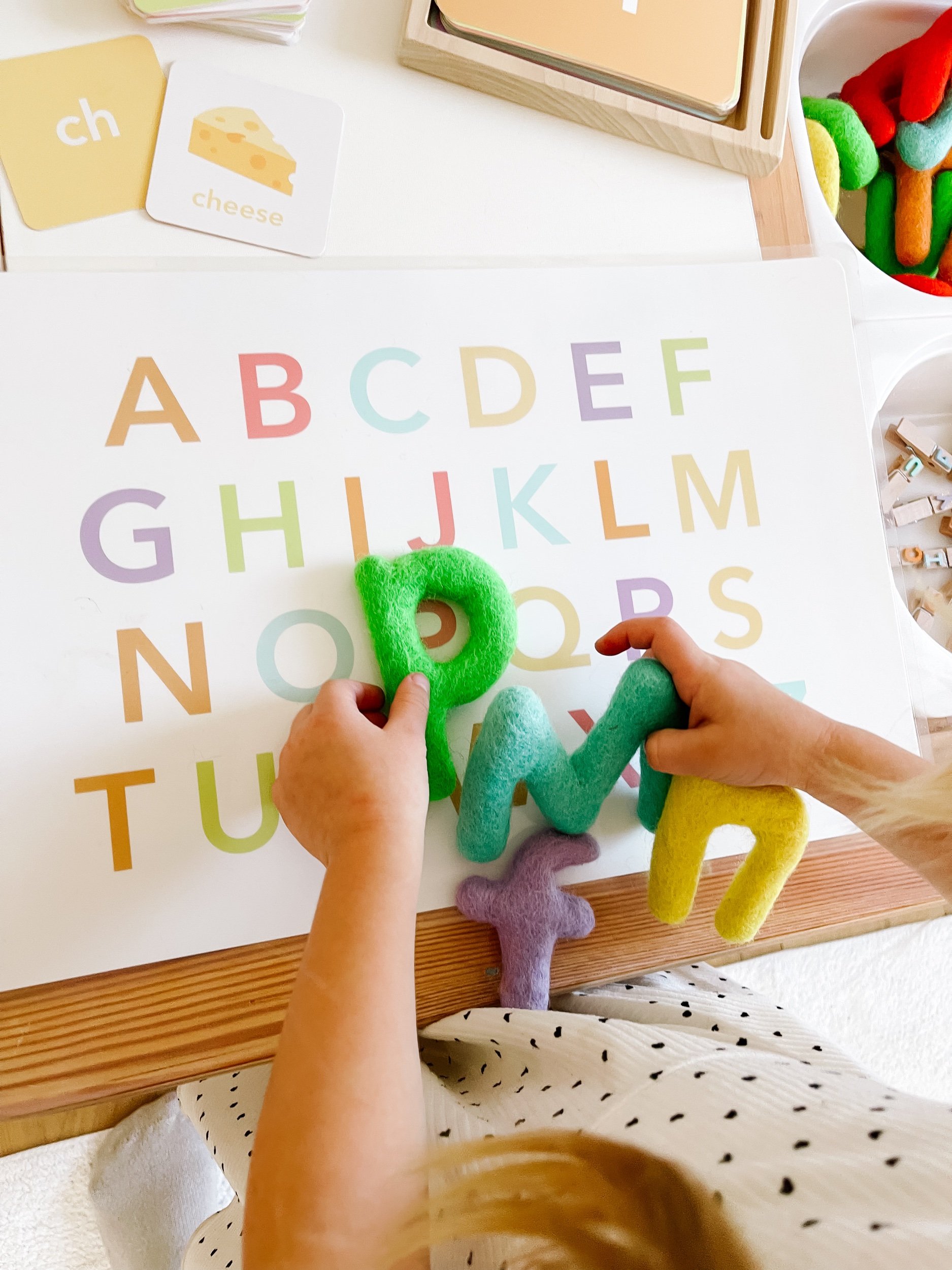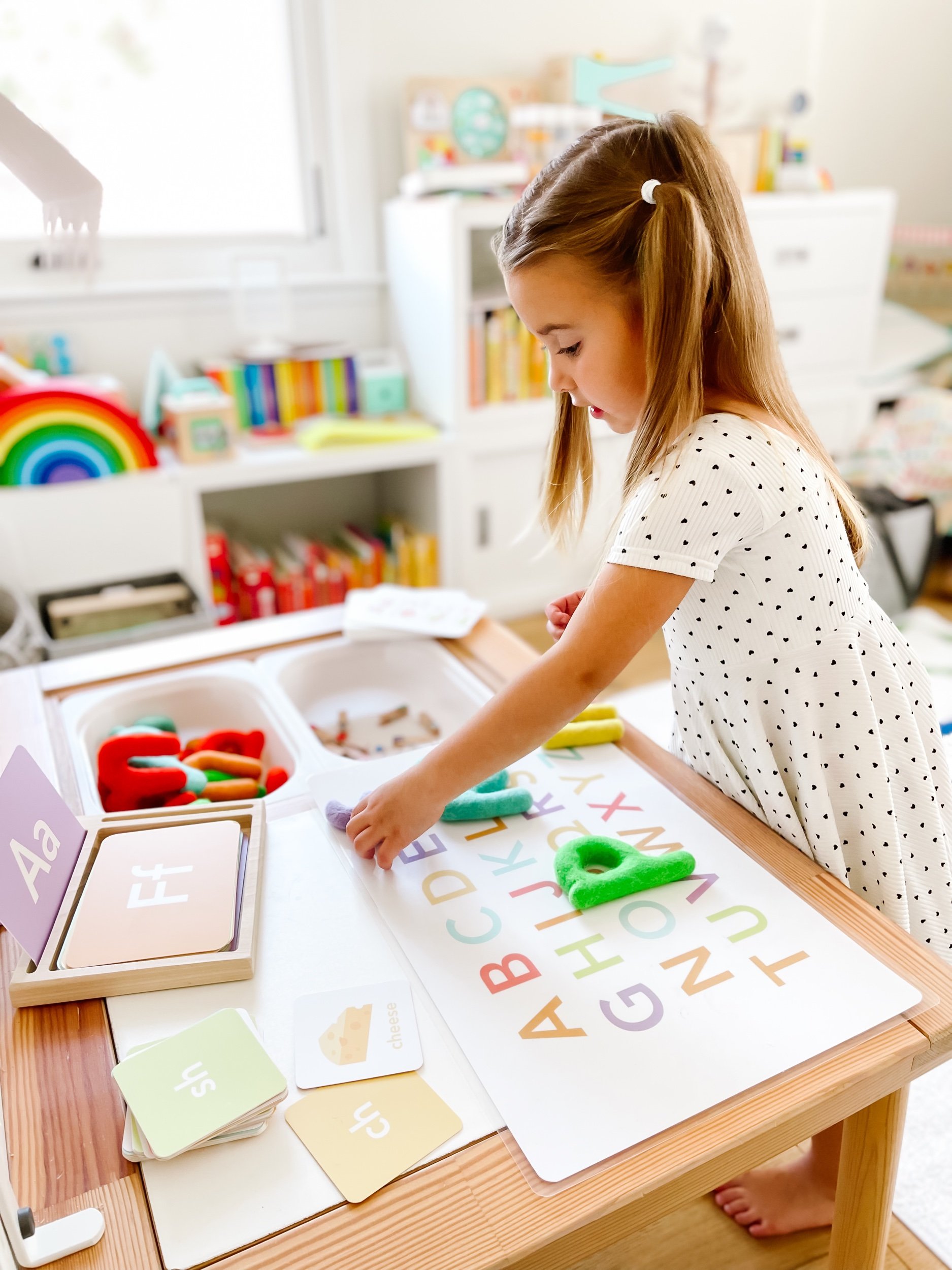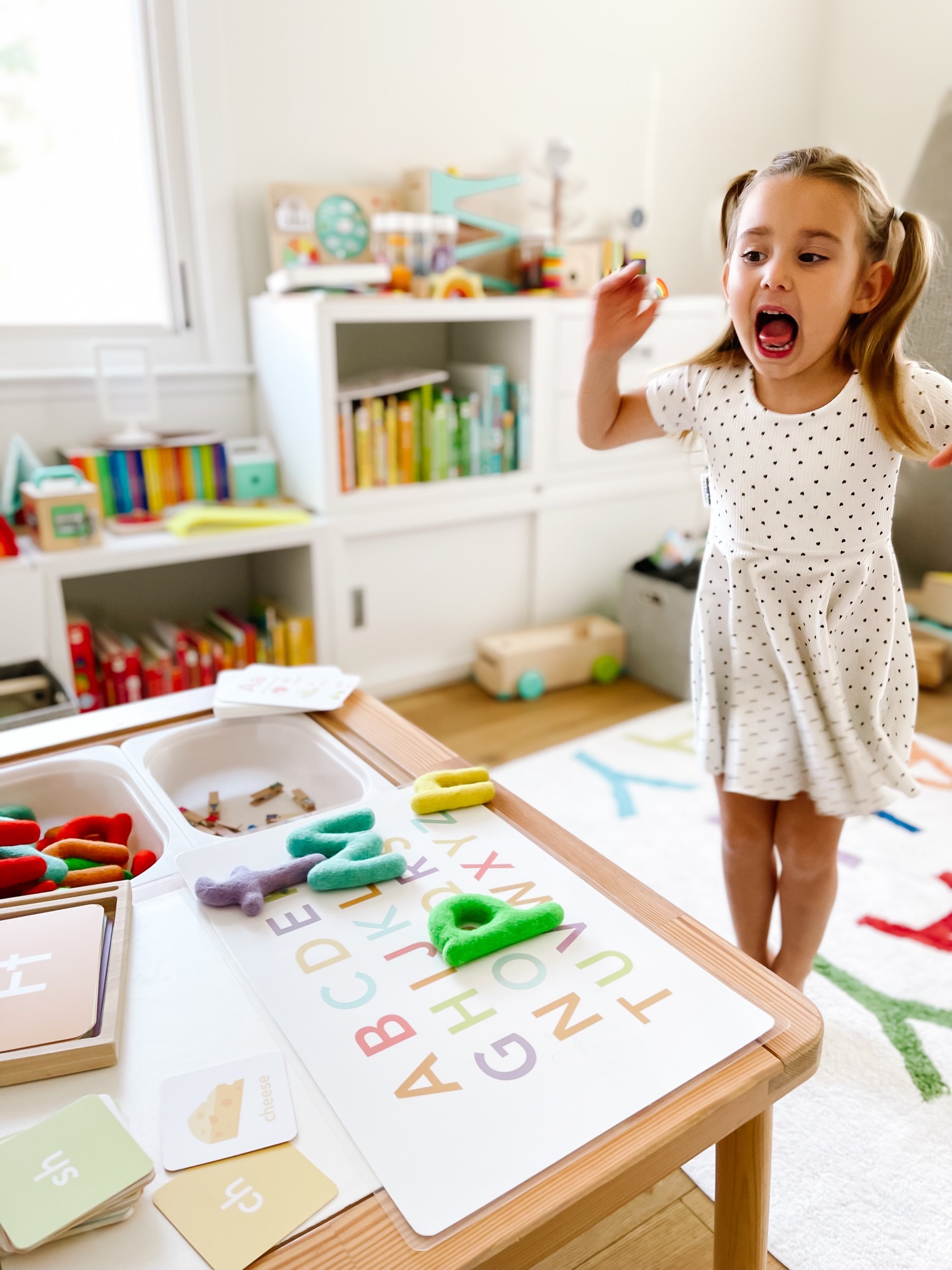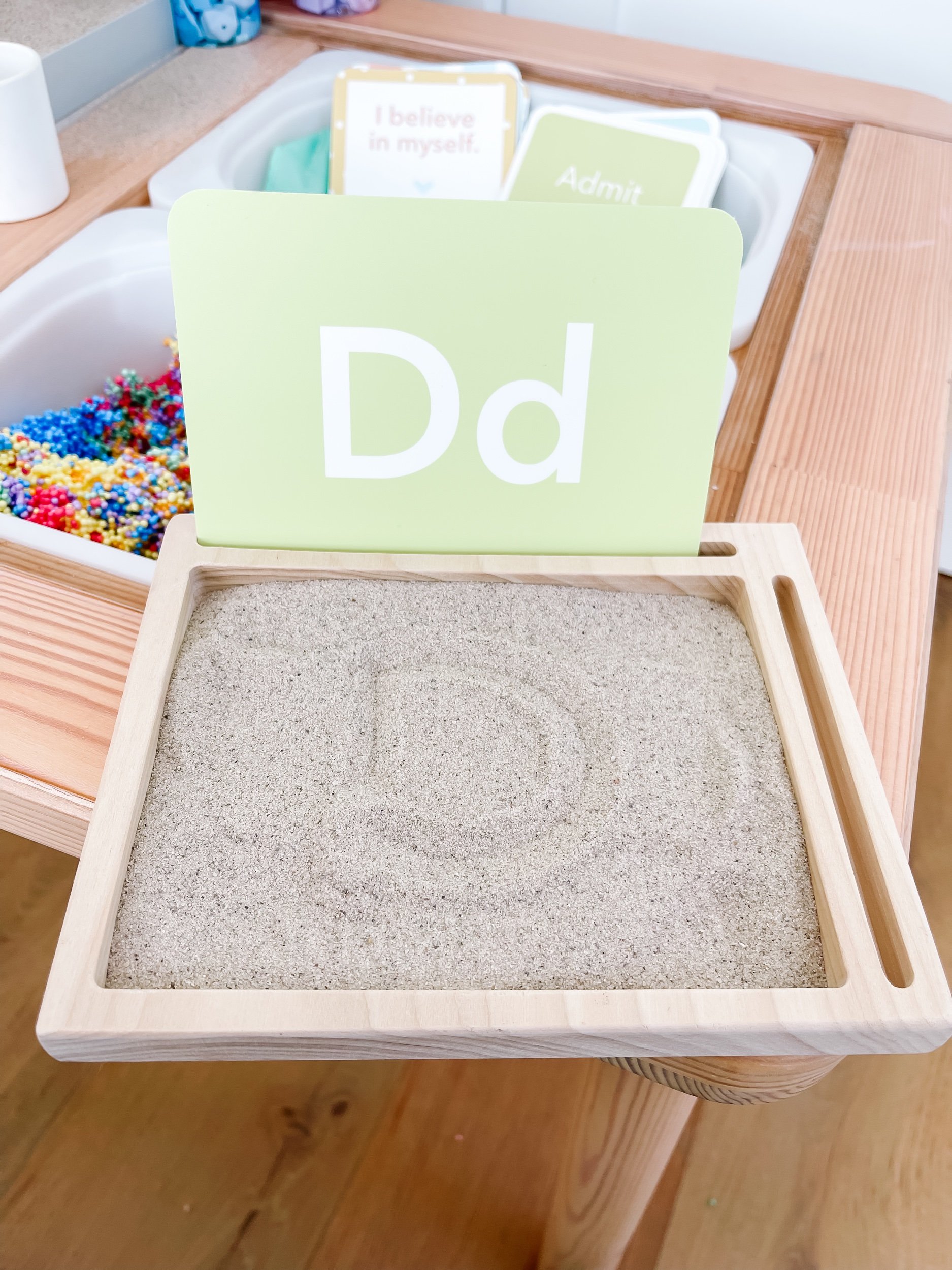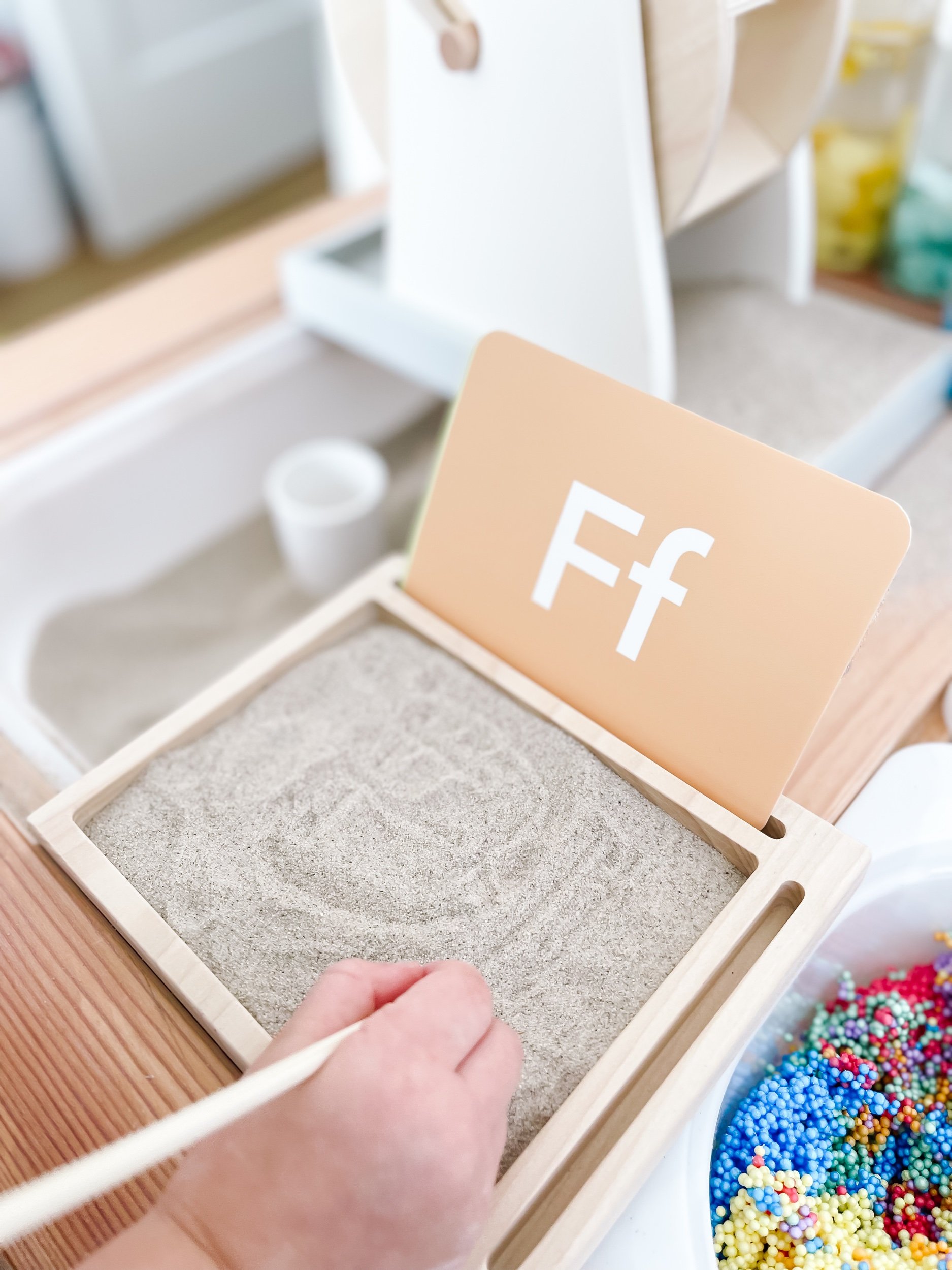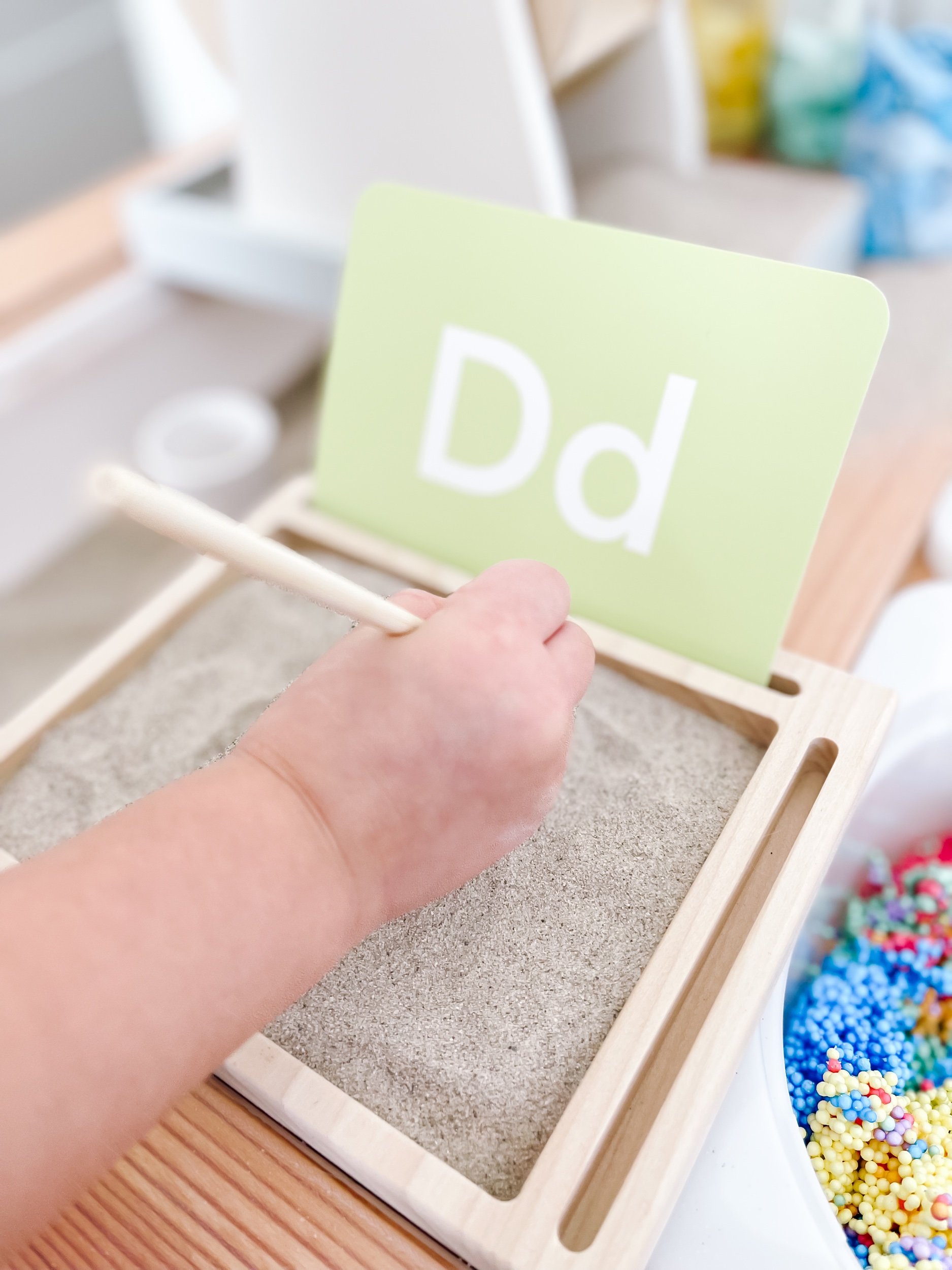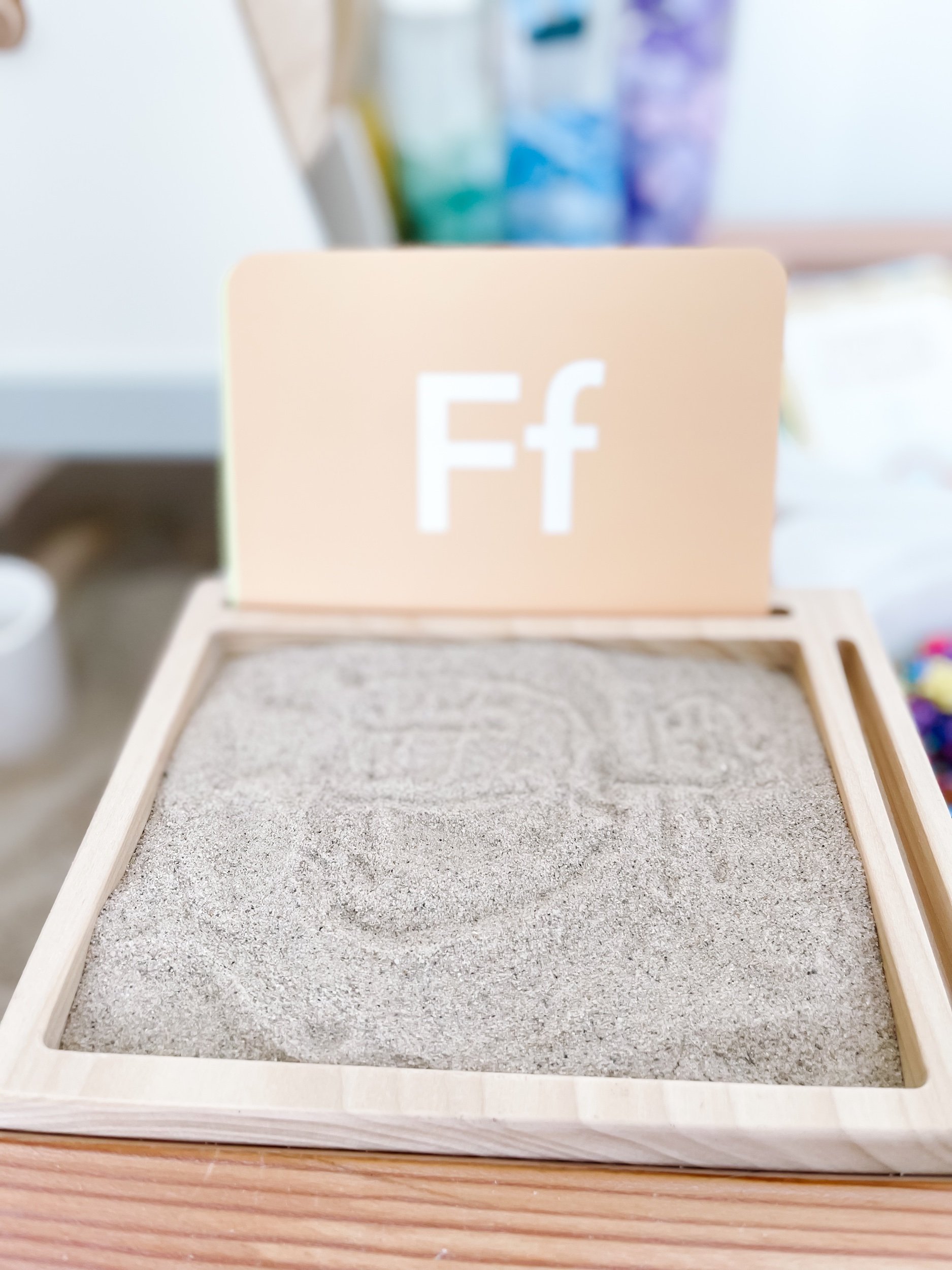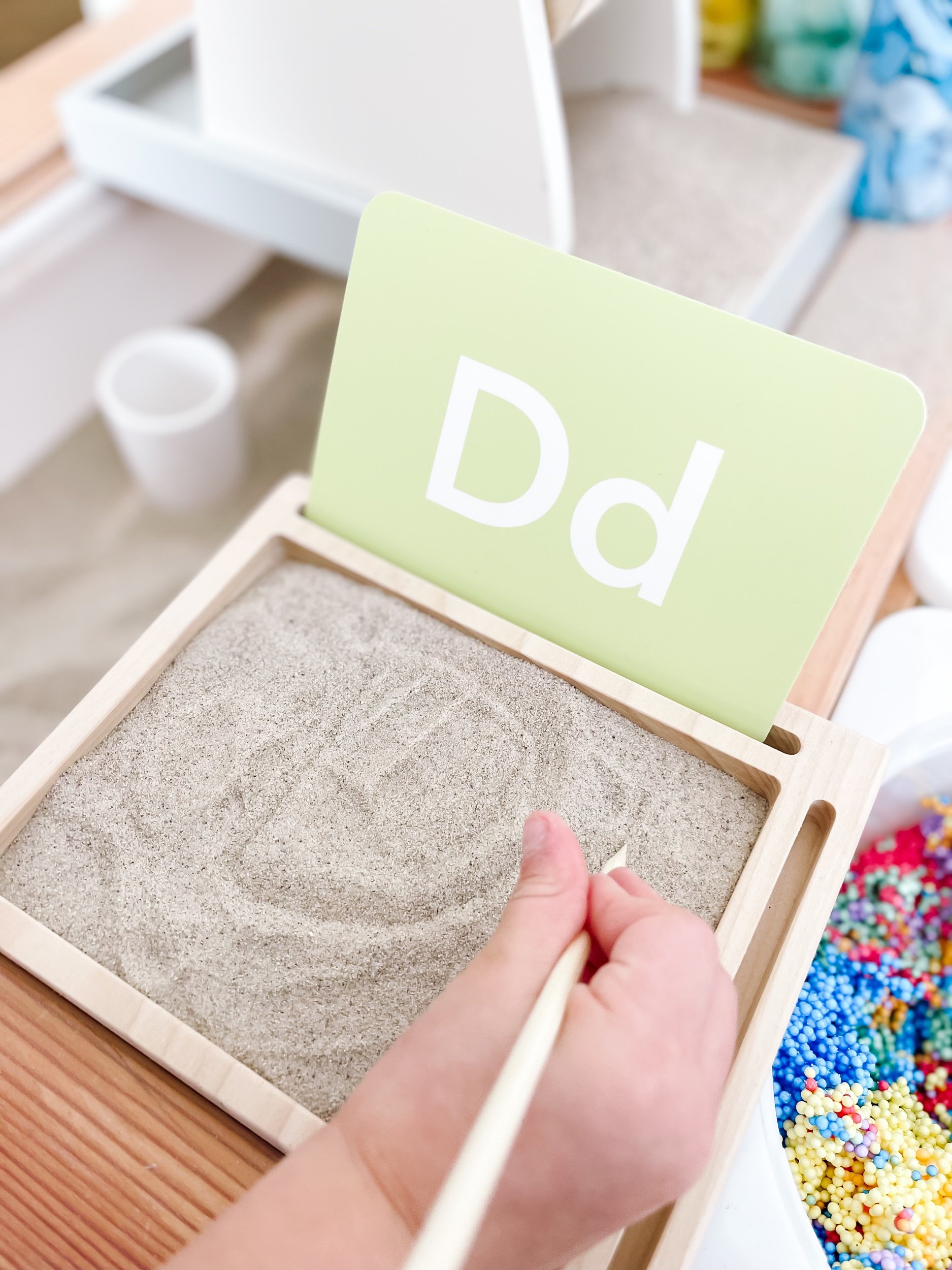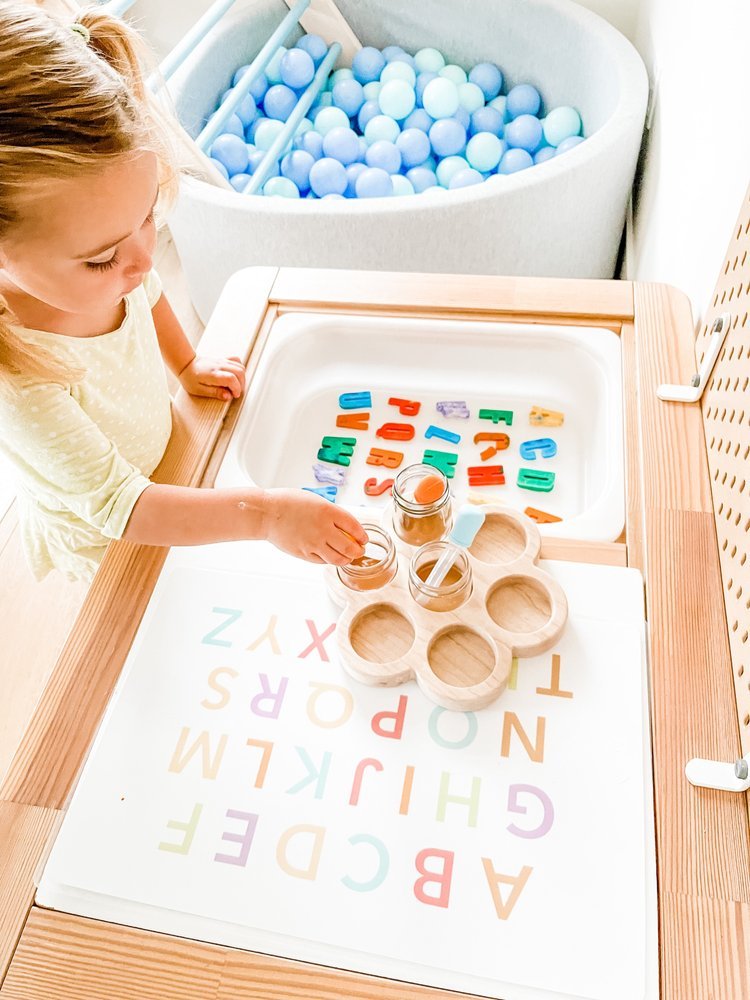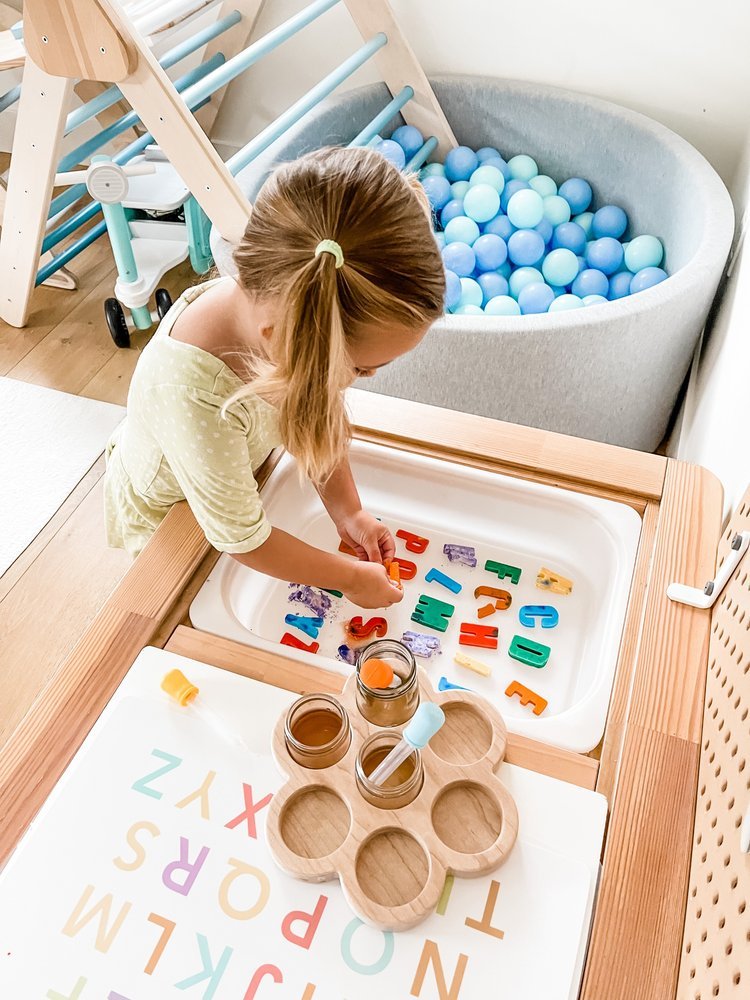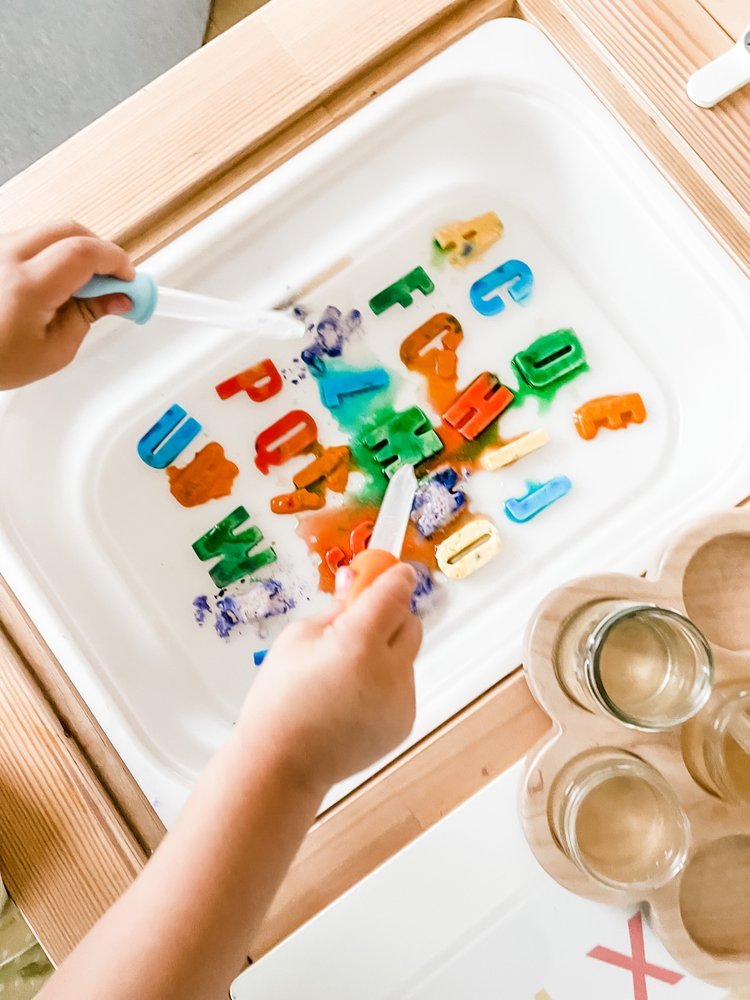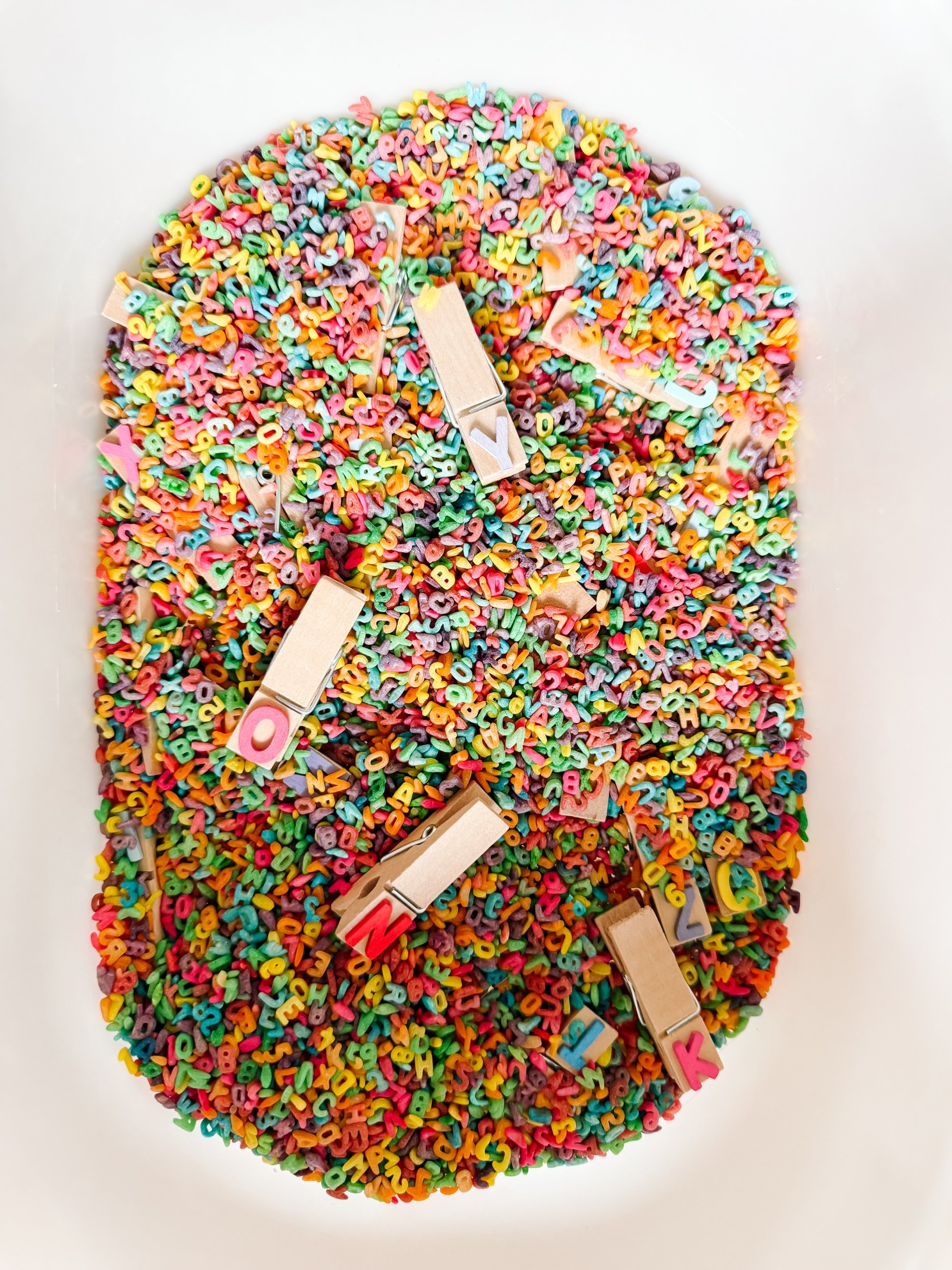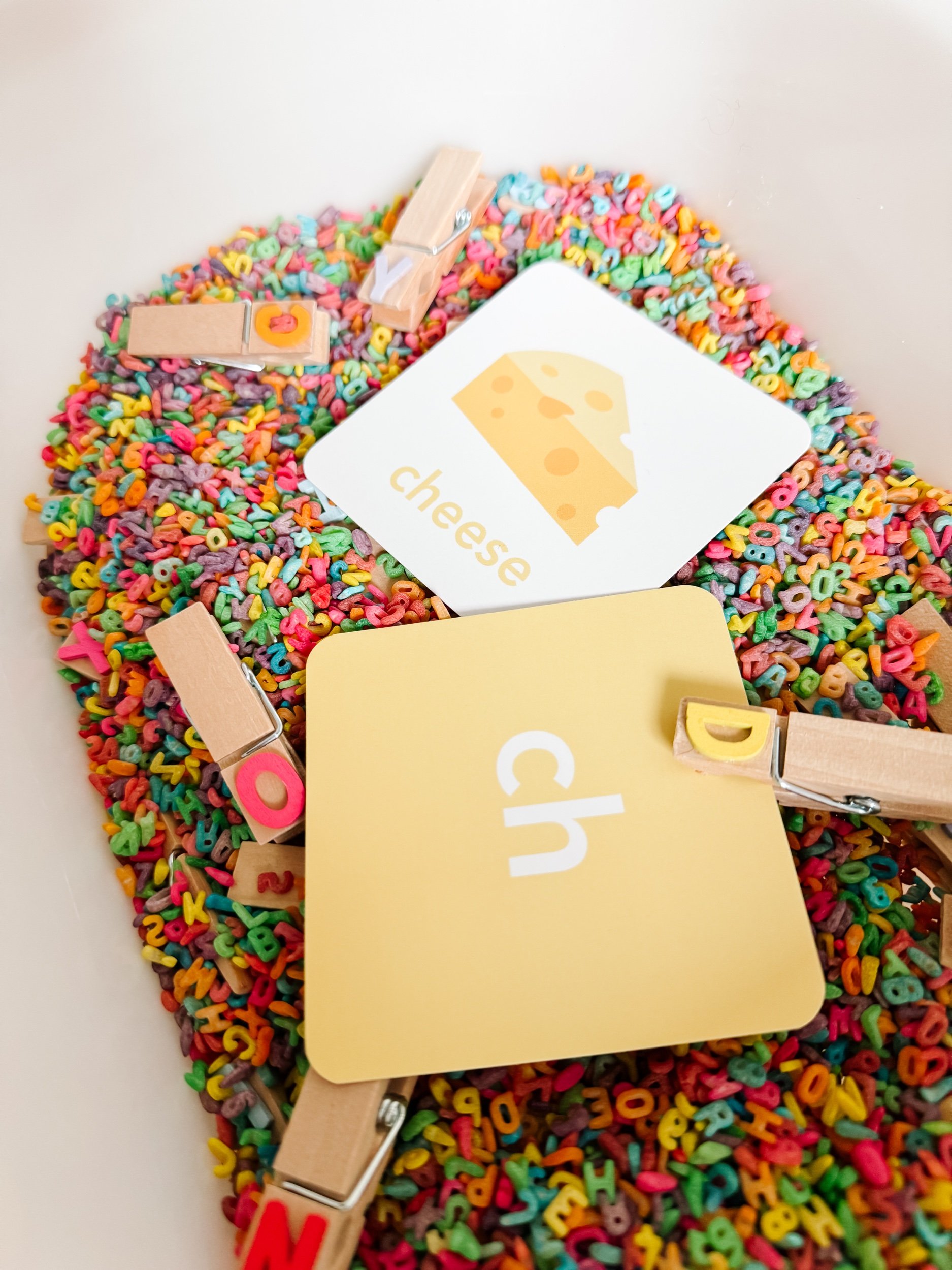Are you looking for engaging and effective ways to teach your toddler the alphabet? Look no further! Alphabet letter sensory play activities are not only fun and interactive but also highly beneficial for early learning and education in preschoolers. In this blog post, we'll explore the advantages of sensory play for learning and the alphabet's crucial aspects, and we'll provide three exciting sensory bin activities to help your child practice letter learning.
The Benefits of Sensory Play for Learning
Sensory play involves using the senses (sight, touch, smell, taste, and hearing) to explore and engage with the surrounding environment. It is widely recognized by educators and child development experts as a valuable tool for early learning. Here are some key benefits of sensory play:
1. Cognitive Development: Sensory play stimulates a child's brain by encouraging them to think, problem-solve, and make connections. It helps enhance memory, cognitive skills, and promotes critical thinking.
2. Fine Motor Skills: Engaging in sensory activities like manipulating objects, pouring, pinching, and picking up items enhances fine motor skills, hand-eye coordination, and strengthens finger muscles.
3. Language Development: Sensory play provides opportunities for children to express themselves verbally and non-verbally. It fosters vocabulary development and communication skills through conversations and interactive play.
4. Sensory Integration: Sensory play helps children integrate sensory information from their environment. It aids in sensory processing, self-regulation, and developing body awareness.
The Benefits of Learning the Alphabet Early
Learning the alphabet at an early age forms the foundation for future literacy skills. It sets the stage for successful reading, writing, and communication abilities. Here are the key aspects of learning the alphabet:
1. ABC Song: Singing the catchy ABC song not only captures children's attention but also helps them remember the order of the letters.
2. Letter Recognition: Recognizing and identifying each letter is essential for reading and writing. Sensory play activities can help reinforce letter recognition skills.
3. Upper and Lower Case Letter Recognition: Learning to distinguish between uppercase and lowercase letters is crucial for spelling and writing correctly.
4. Letter Sequencing: Understanding the order of letters is an important skill that aids reading and writing fluency.
5. Letter Sounds: Associating each letter with its corresponding sound enhances phonemic awareness and promotes early reading skills.
6. Letter Sound Blending: Making a continuous sound out of two or more letters such as /c/ /a/ /t/ makes CAT.
7. Digraphs: Learning the unique sounds that two letters make together such as TH and NG.
6 Sensory Bin Activities for Letter Learning
Now, let's dive into six exciting sensory bin activities that will engage your child in hands-on letter learning:
1. RESIN Letter Search and Find Bin:
Fill a sensory bin with colorful resin letters, blocks, and soft wool balls. Using alphabet flashcards, encourage toddlers to search and find the matching letter from the bin. This activity promotes letter recognition while providing a tactile experience.
2. Letter Sounds & PHONICS:
For slightly older children, focus on letter sounds. Pair the sensory bin activity with an alphabet placemat and ask questions like, "Which letter comes before C?" This activity reinforces letter sequencing and phonemic awareness.
3. Word Building & SIGHT WORDS:
For advanced learners, up the challenge by using sight word flashcards to build complete words. Choose letters from the sensory bin to construct the word displayed on the flashcard. As a tasty alternative, you can use ABC Letter Cookies from Trader Joe's. Reward your child with a cookie for accurately building each word!
4. Digraphs Match Game:
Once your child has learned how to blend letter sounds, they can move on to the skill of recognizing digraphs which are two letters together that make a unique sound. For this activity, we used our digraphs match game cards to find the pairs. Once Sofia is a bit older, we’ll be able to spread the full game out on the table to play.
5. Fine Motor Clip Matching
In this activity, you can use wooden clips with letters on them and have your kiddo match to the flashcards and clip to them. If you want to incorporate gross motor skills, have them clip to a string tied up across the room. This will both promote motor skills while also challenging letter recognition.
6. Wool Letters Bin
A great alternative to the resin letters are these large wool letters from Wonder Years Play. They’re large and tactile and great for early learners. I used these with Sofia to practice matching them to the letter placemat. This was challenging for her to match the upper and lowercase. But you can make it easier for little ones by purchasing a matching set.
7. Magnetic Letter Board
I’m absolutely obsessed with these magnetic letter boards because they offer such a fun and tactile experience for engaging with letters. And moving them around to make new words is so much fun and so gratifying to the senses. They also double as a whiteboard which has been so helpful in teaching Sofie how to blend sounds. Writing each letter as she makes the sound, adding dots or lines to help reinforce the blend has been magical.
8. Letter writing in colored sand
When your kiddo is ready to start writing letters, practicing in colored sand can be a great way to get started. You can start with fingers first showing the direction of writing each letter. These Letter tracing and Letter Flashcards are great for this! Then you can advance to using a wooden pen or stick tool and practicing the proper hand position.
9. Letter writing on lined board insert
As your child starts to be able to write (3-4 years old) this see through letter board insert from Wonder Years Play is an amazing tool. You can of course just use it as lined board, but you can also put resin letters or objects below and ask your child to write the word or letter for what they see. It’s like a giant iSpy bottle and your kiddo will get a total kick out of it!
10. Fizzy Letters
What better way to okay than to combine Letters and Science. In this activity, you can make the letters of the alphabet using a silicone mold, baking soda, and flour. Make a bowl to mix each color and then scoop into the mold. Let set in the fridge. Then take them out and use vinegar for some colorful fizzy fun! For detailed instructions on creating this bin check out Rainbow Fizzy Letters.
11. PASTA LETTERS SEARCH & FIND
These alphabet letter noodles are the perfect dump and go sensory bin. You can use the past noodles as a base and hide other letter toys, erasers, or magnets in the bin. You can also just let your kiddo scoop up the letters and start to sort them in piles by each letter.
By incorporating these sensory bin activities into your child's playtime, you'll create a stimulating learning environment that sparks their curiosity and supports their early literacy development.
Vocabulary Words for Learning the Alphabet - Ages 2-6
1. Alphabet: The set of letters used to write a language.
2. Phoneme: The smallest unit of sound in a language.
3. Letter: A symbol representing a sound in written language.
4. Upper case letter: Capital letters of the alphabet.
5. Lower case letter: Small letters of the alphabet.
6. Vowel: Letters that produce a clear, distinct sound when spoken.
7. Consonant: Letters that are not vowels and are produced with some obstruction of airflow.
8. Blend: Combining two or more individual letter sounds together.
9. Digraph: Two letters that make a single sound together.
10. CVC: Consonant-Vowel-Consonant, a three-letter word pattern like cat or dog.
11. Sight word: A word that children learn to recognize by sight without sounding it out.
12. Rhyme: Words that have similar ending sounds.
13. Phonics: The relationship between letters and sounds in language.
14. Sound: A noise made by the vocal cords or other means of communication.
15. Trace: To follow or copy the shape of a letter with a pencil or finger.
16. Fine motor skills: The coordination of small muscles needed for tasks like writing or coloring.
17. Visual discrimination: The ability to differentiate between different letters or words.
18. Sequence: The order in which letters of the alphabet are arranged.
19. Flashcard: A card with a letter or word used for learning and practice.
20. Repetition: Repeating an action or information to reinforce learning.
21. Phonological awareness: Recognizing and manipulating sounds in language.
22. Multisensory learning: Teaching that engages multiple senses (e.g., sight, touch, hearing).
23. Letter-sound correspondence: Understanding the relationship between letters and their sounds.
24. Alphabet song: A song used to remember or learn the order of the alphabet.
25. Decoding: The process of turning written words into spoken words by recognizing letter sounds.
Remember, learning the alphabet doesn't have to be a tedious task. Through sensory play, you can make it an exciting adventure for your little one. So, gather your materials, set up a sensory bin, and watch your child immerse themselves in a world of letter fun and educational exploration!
